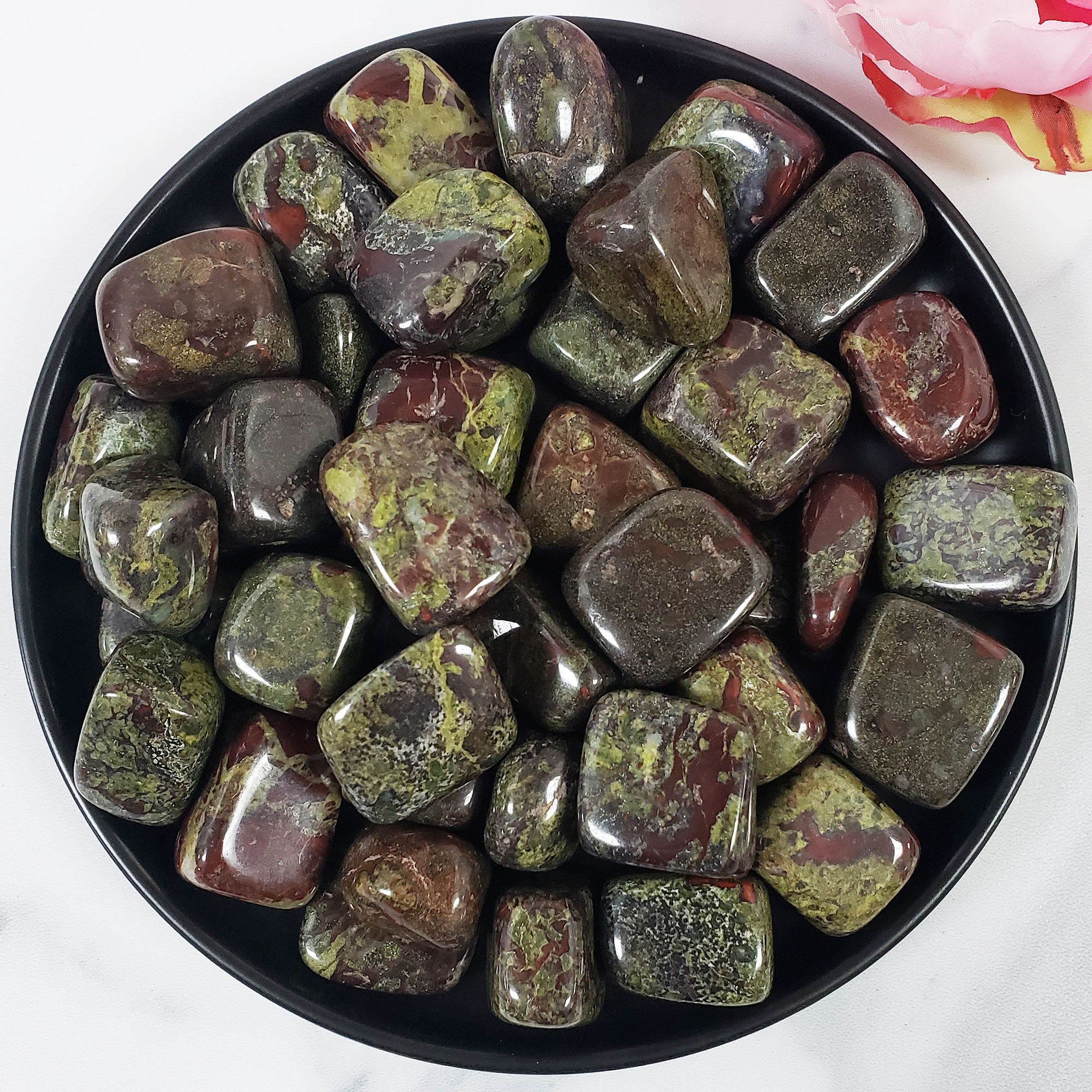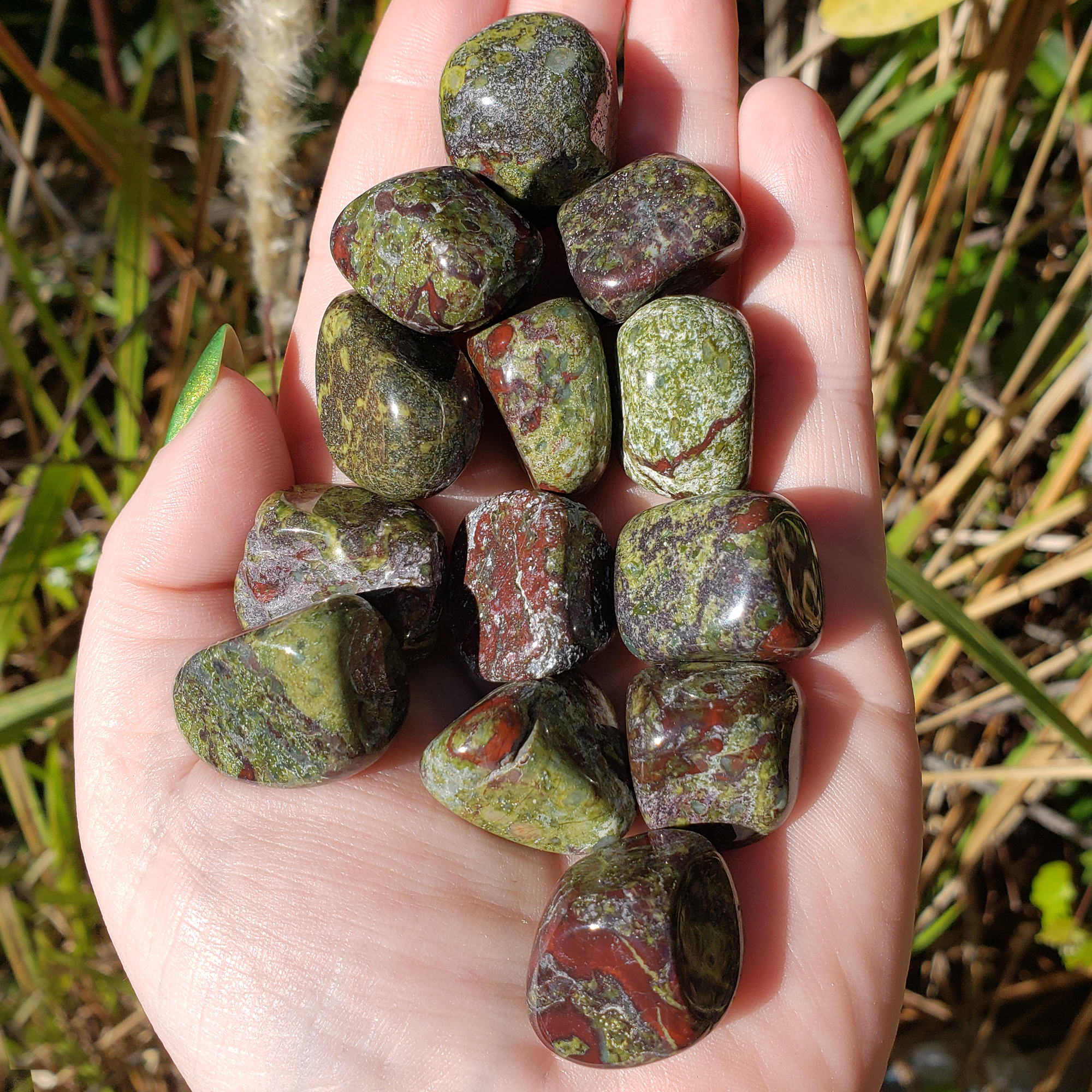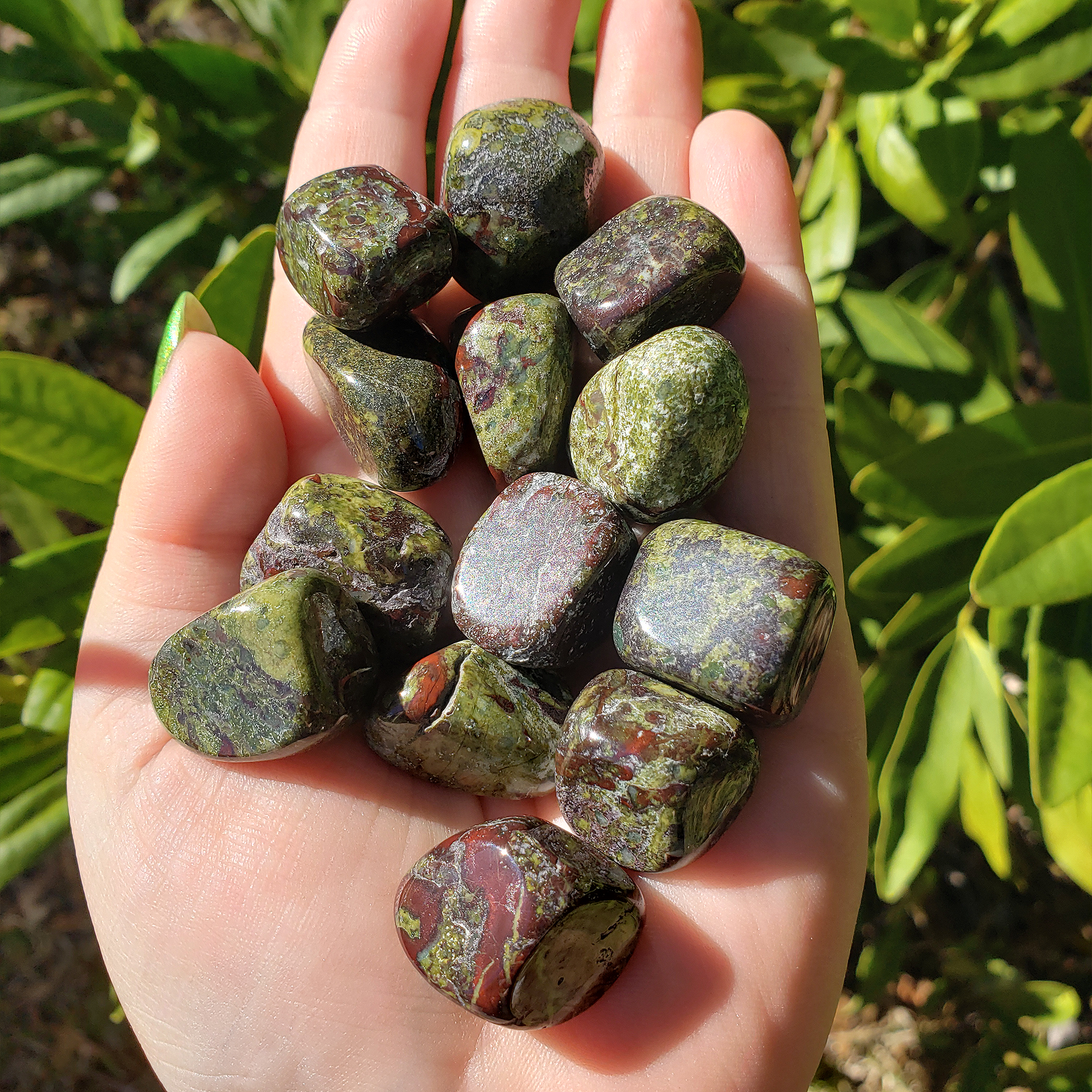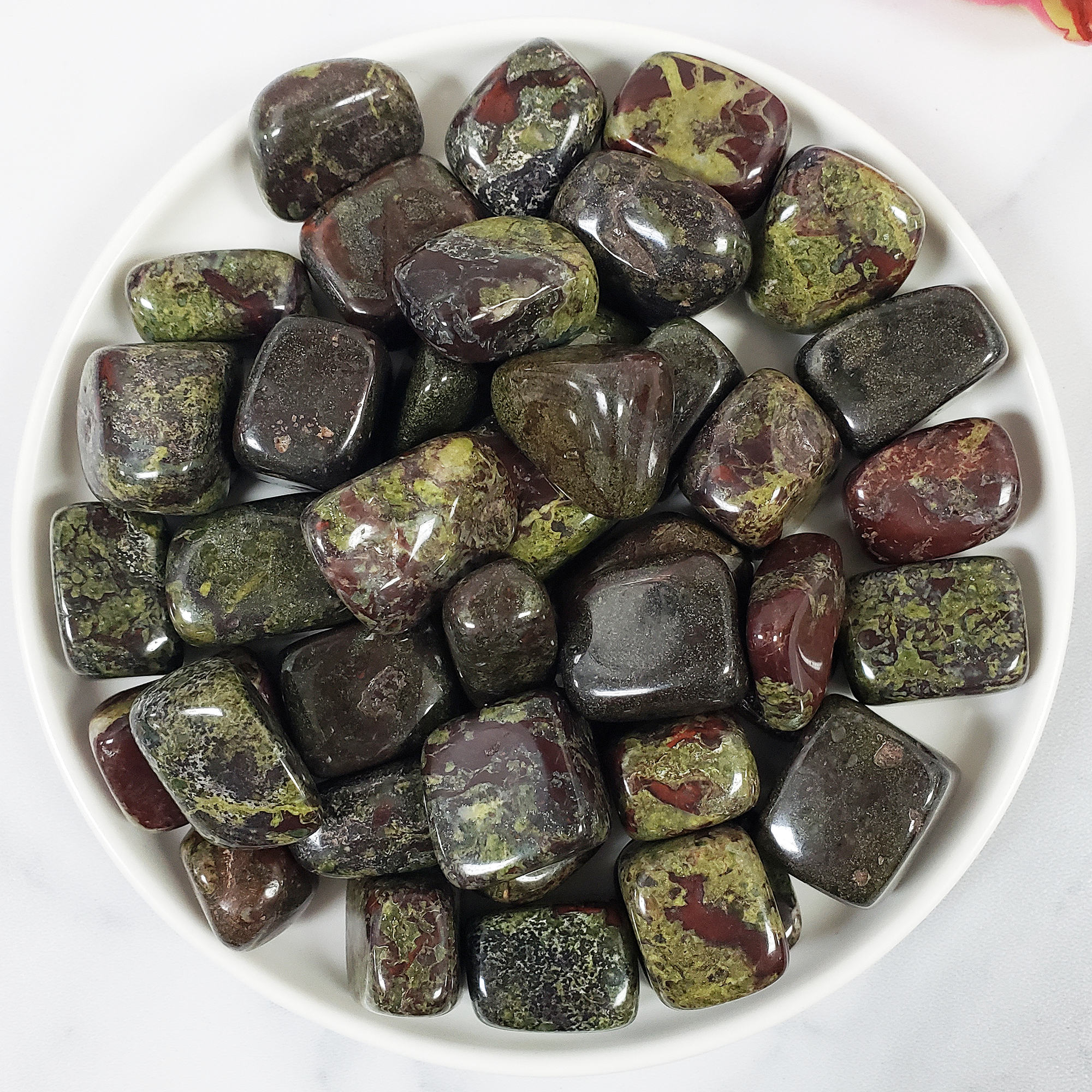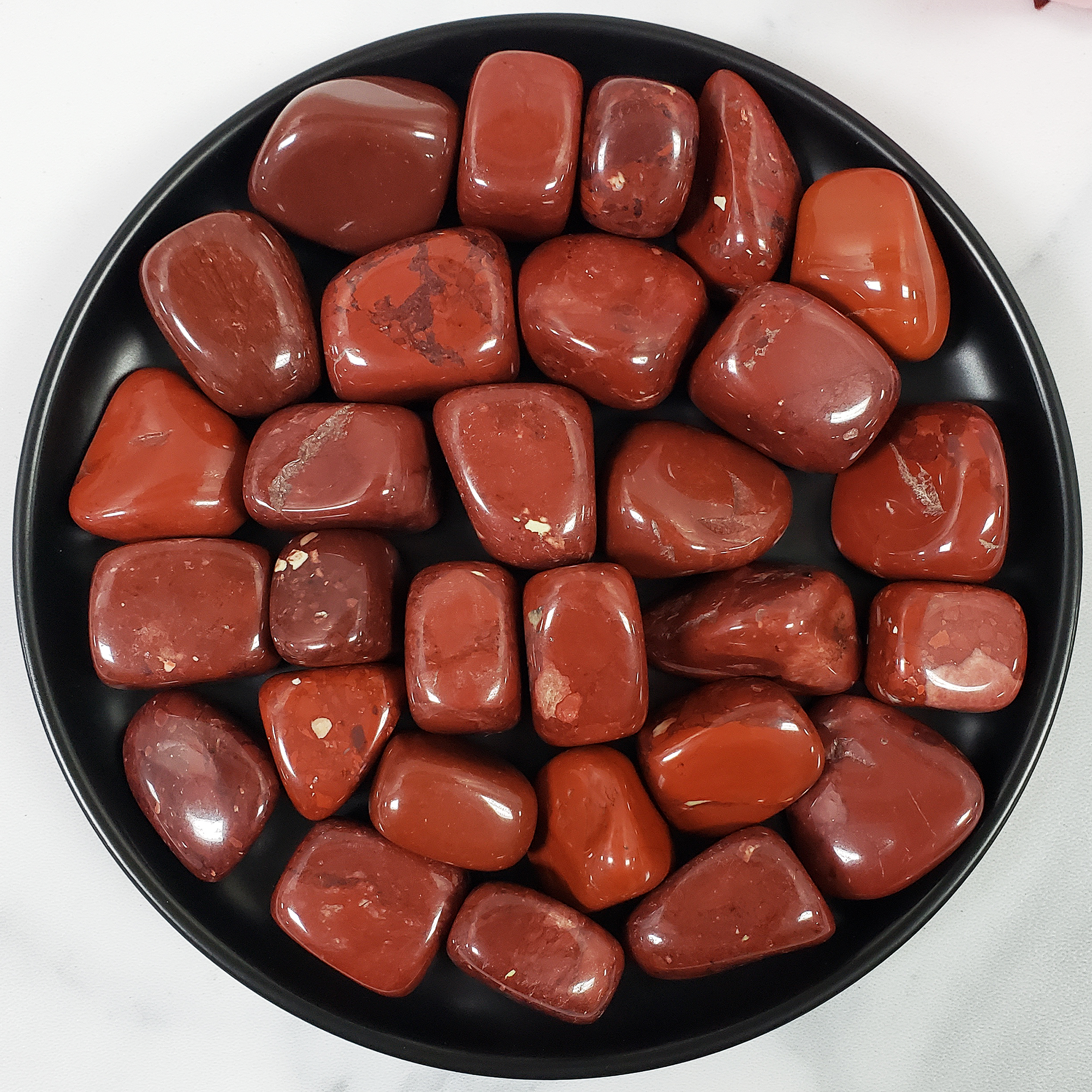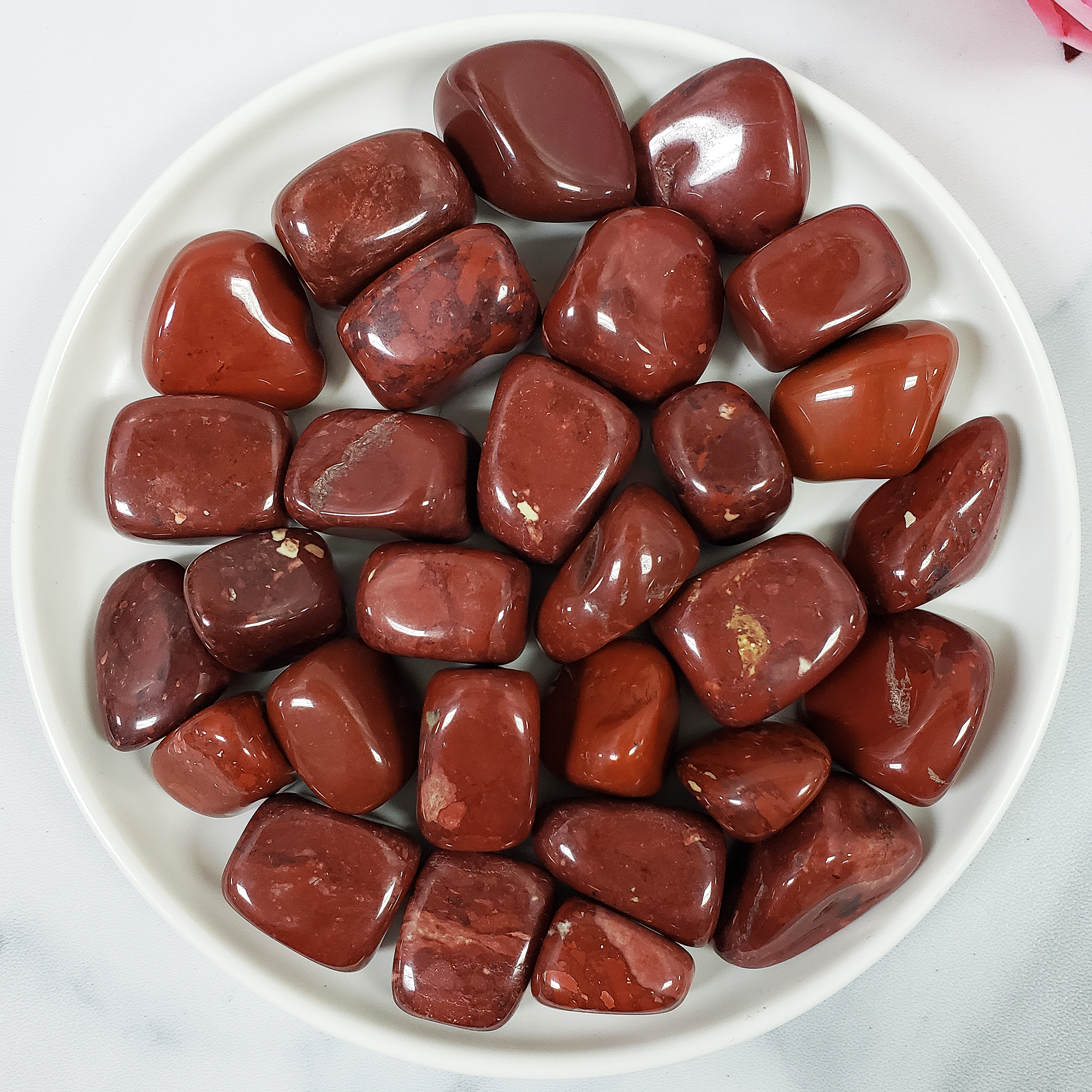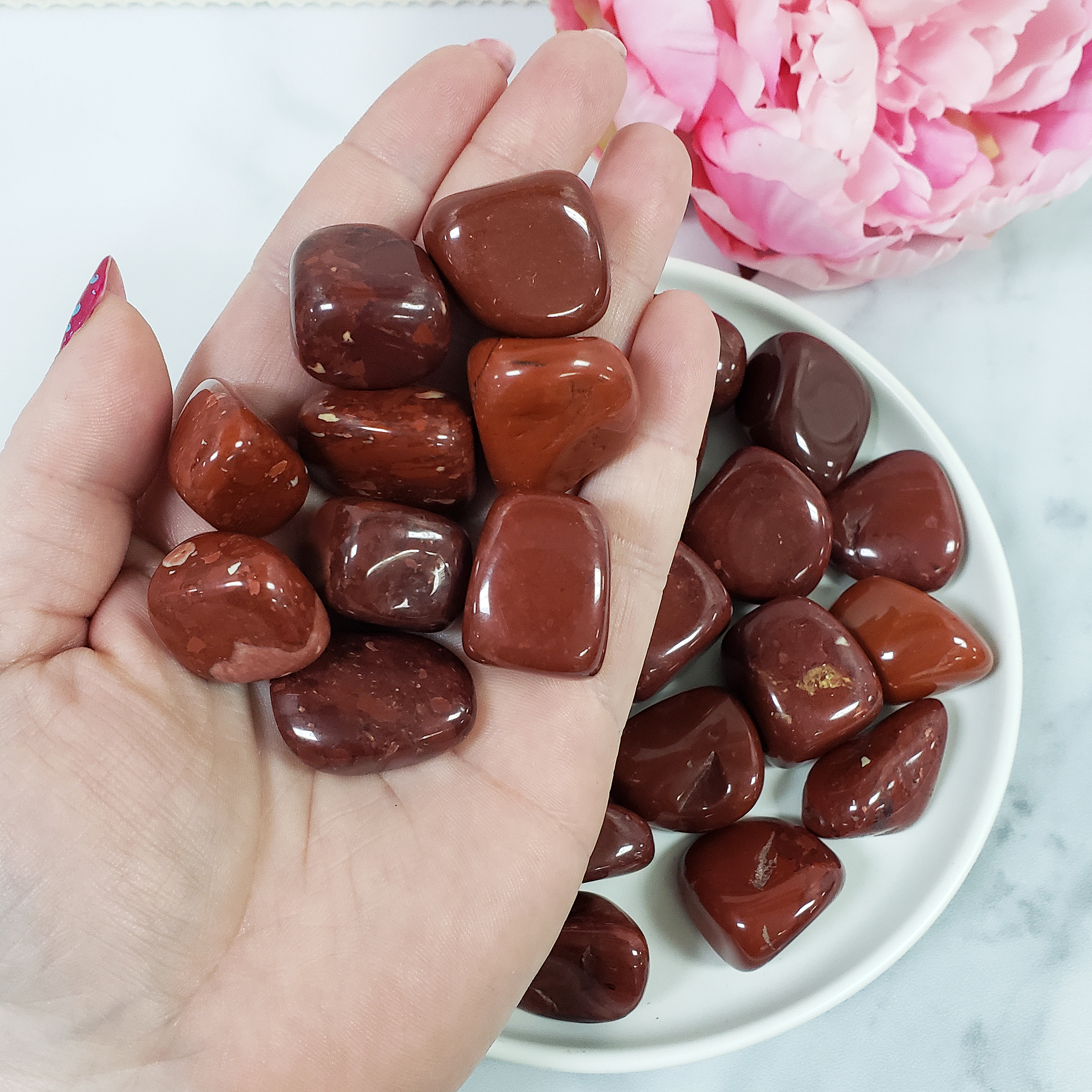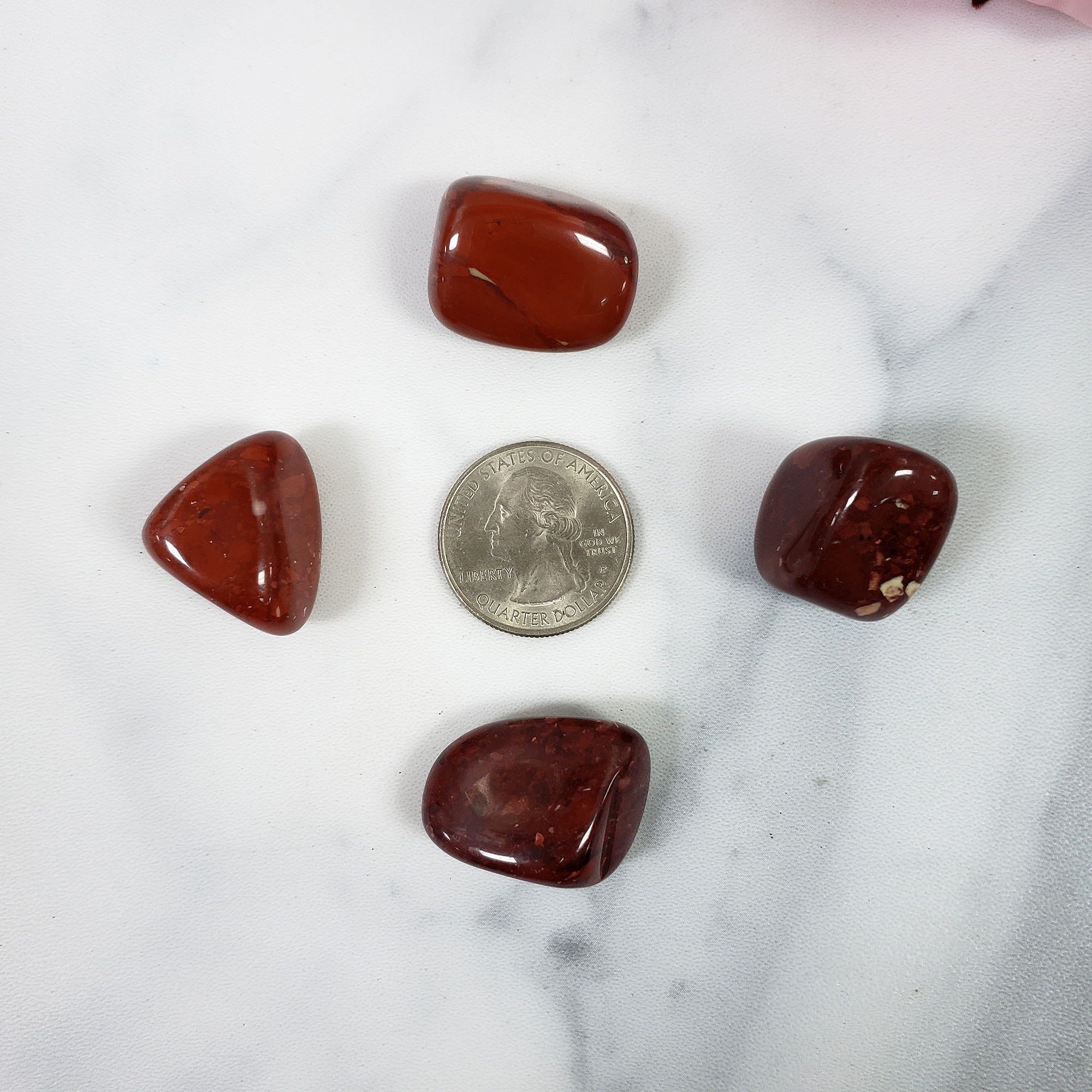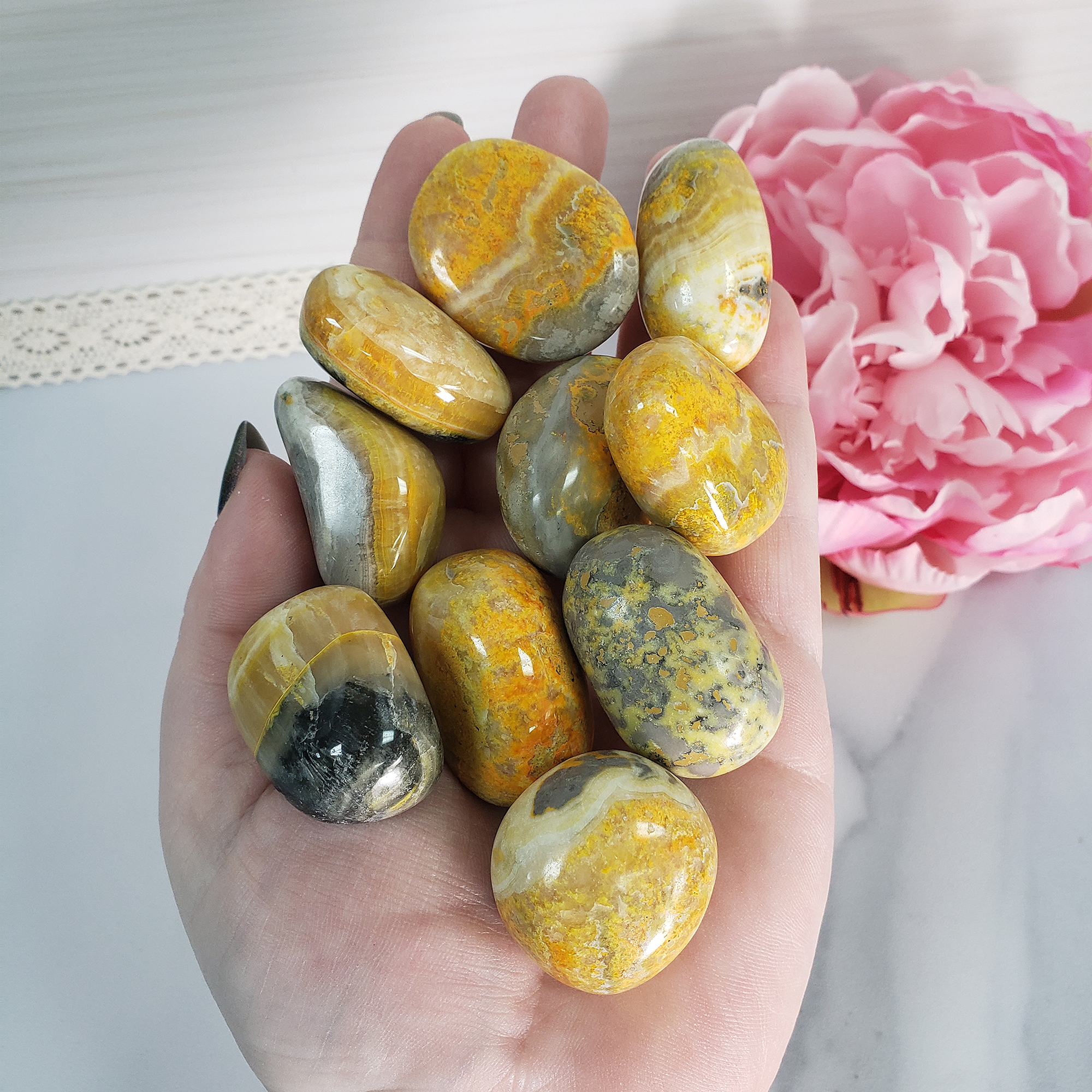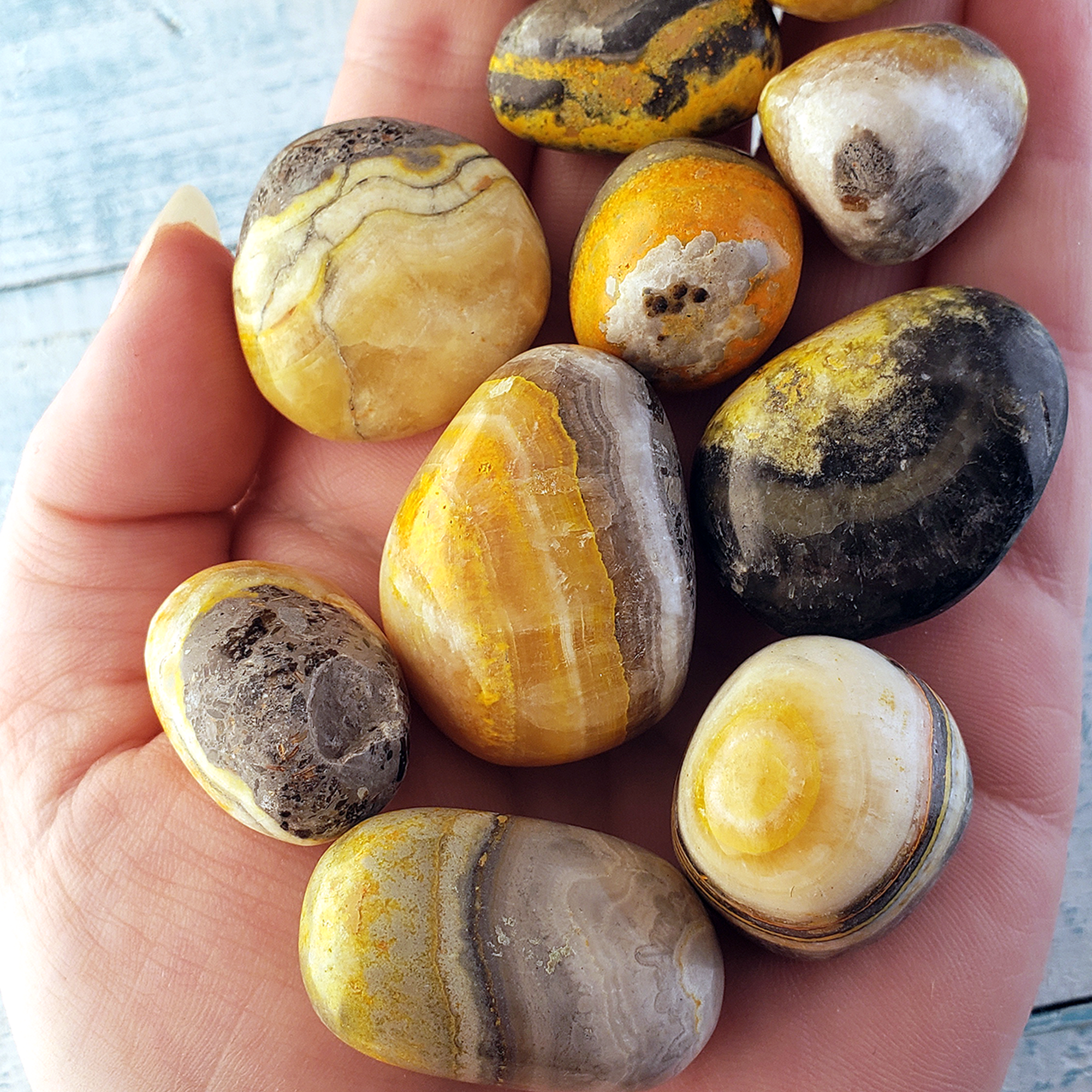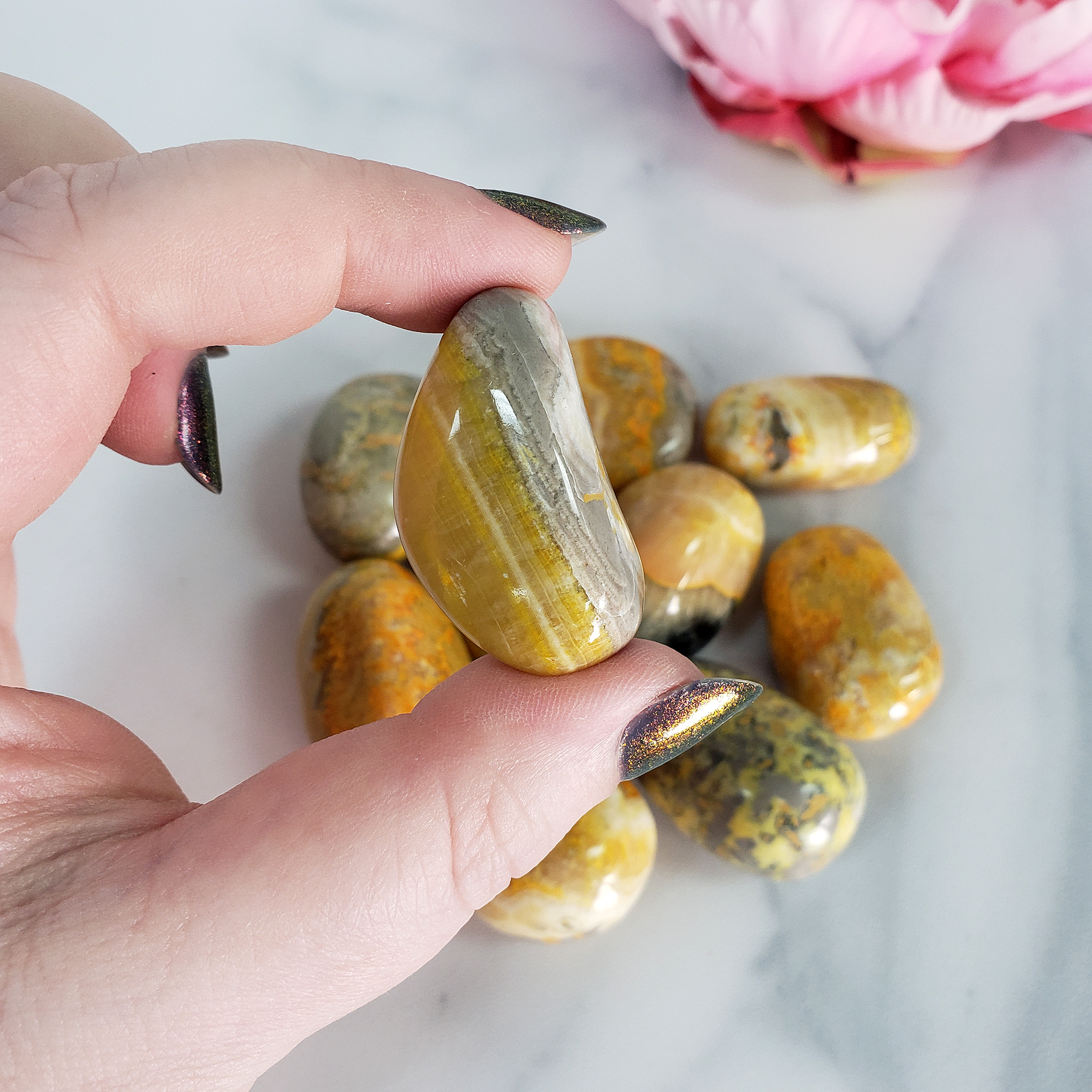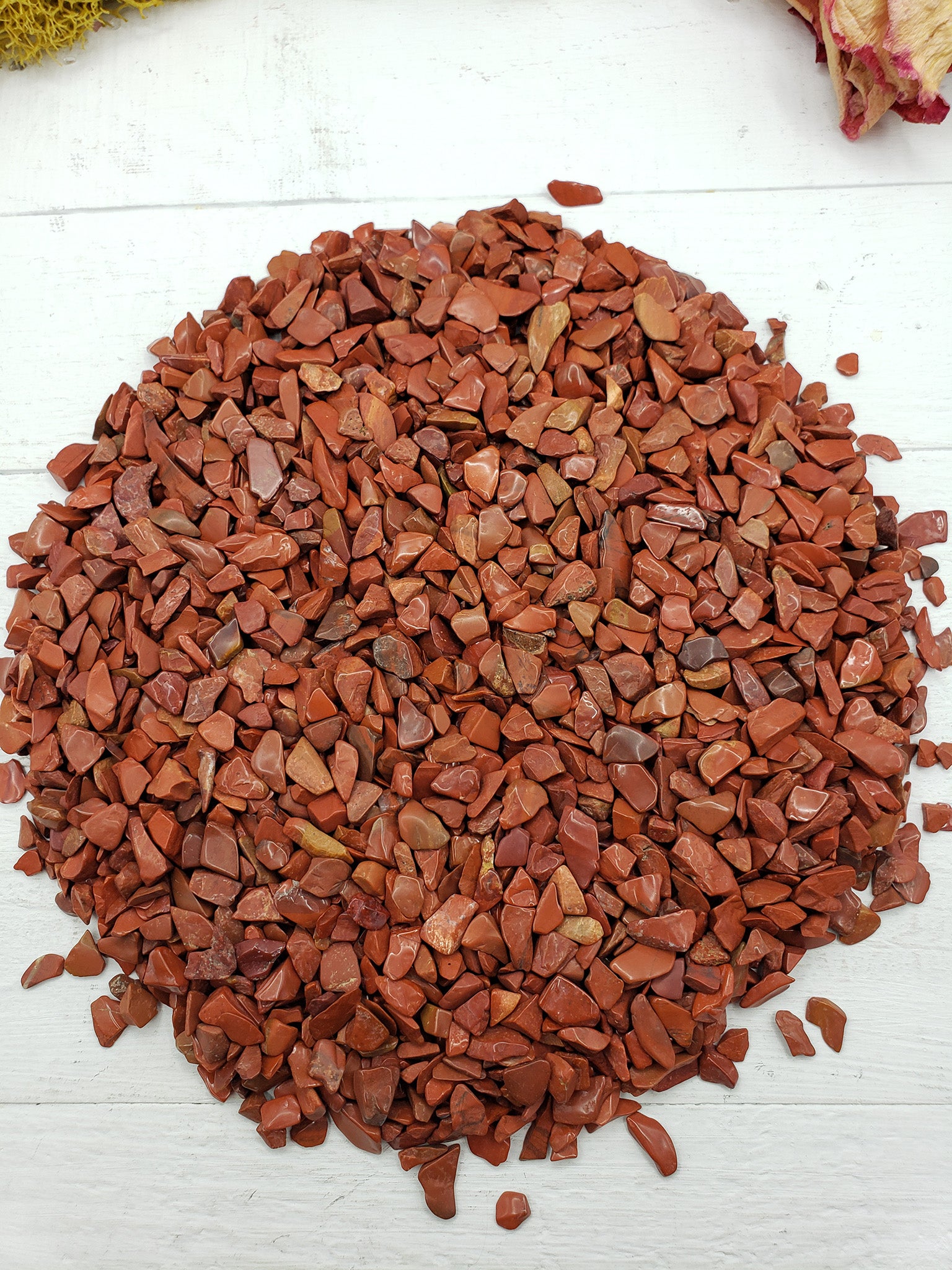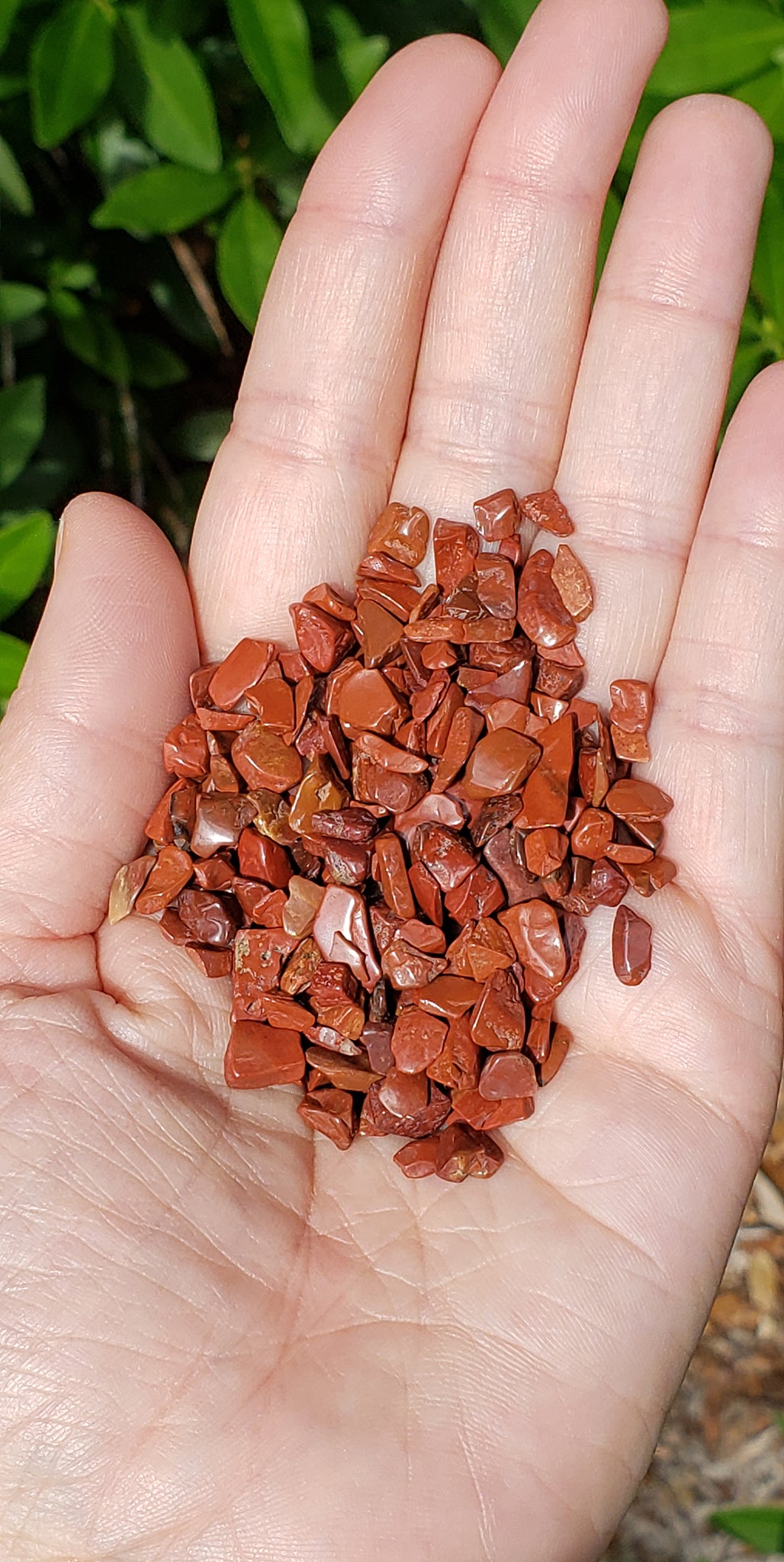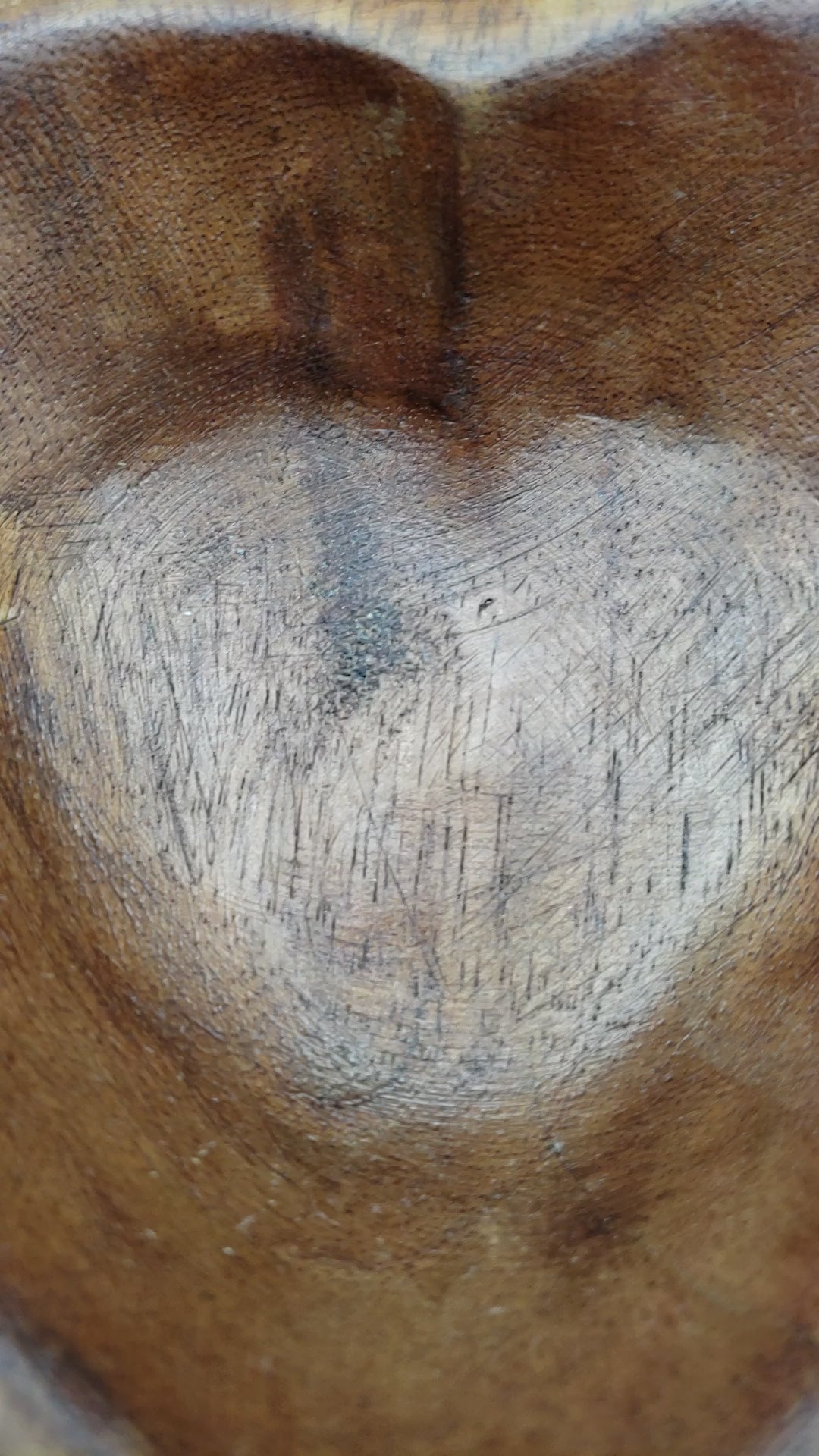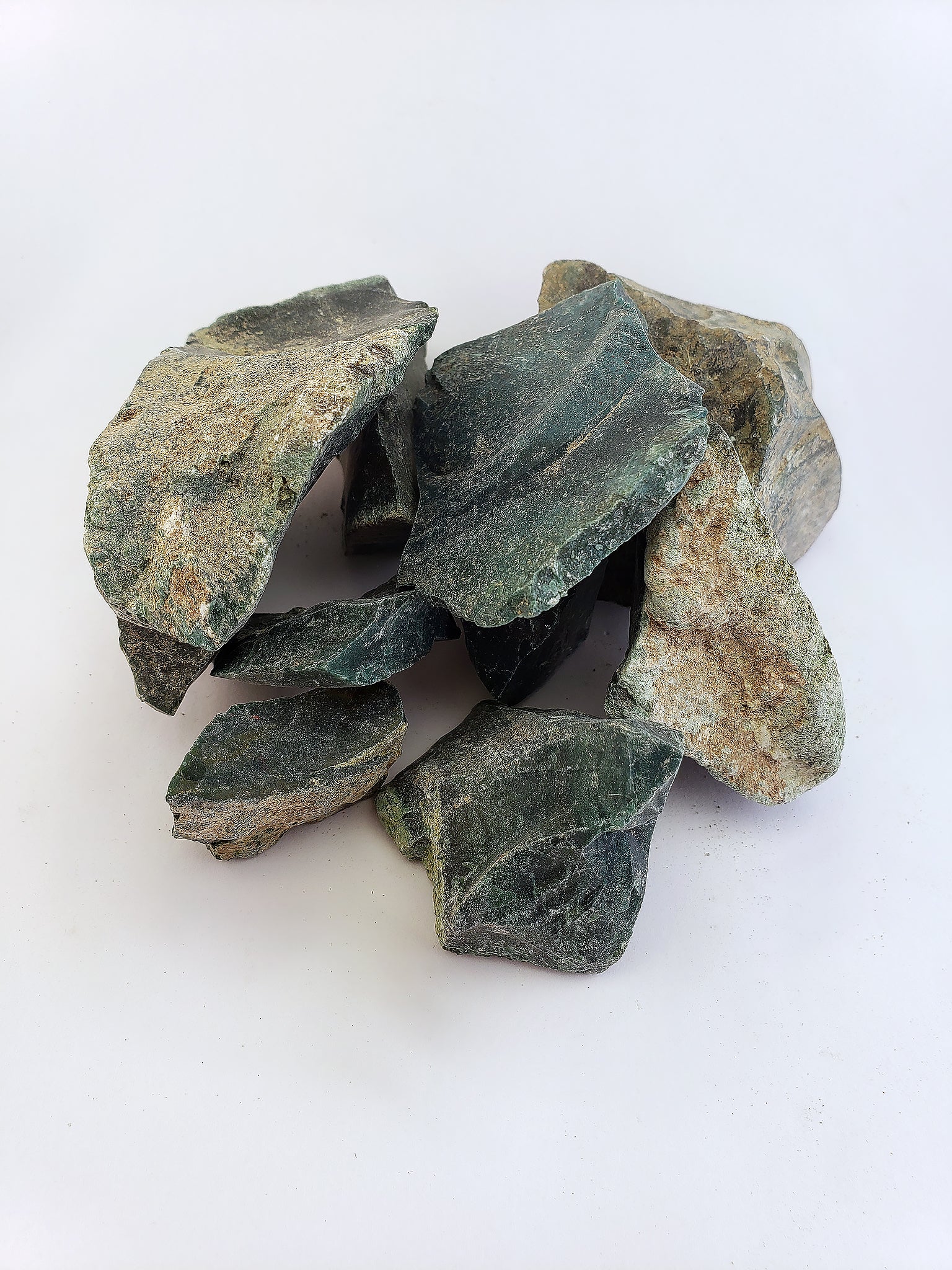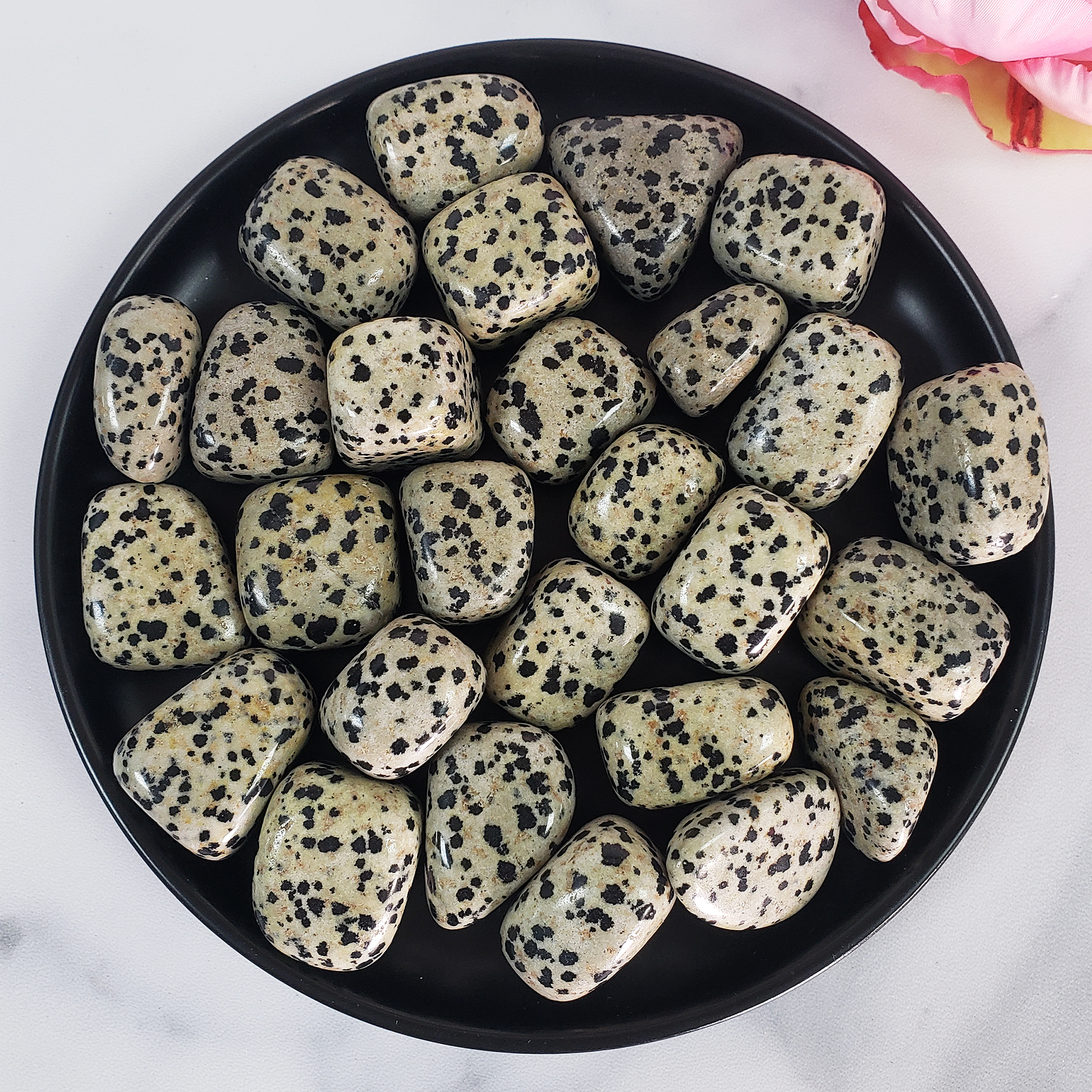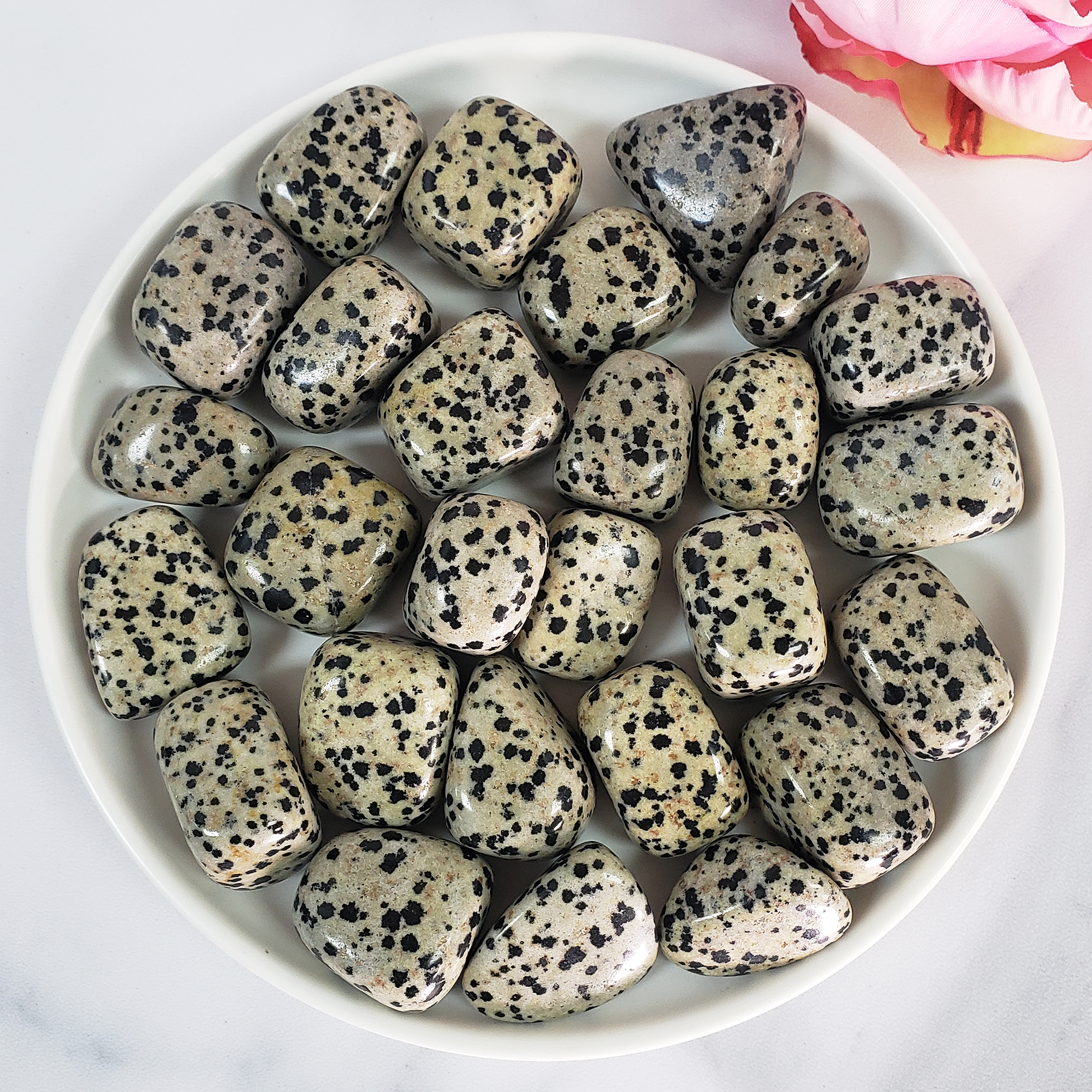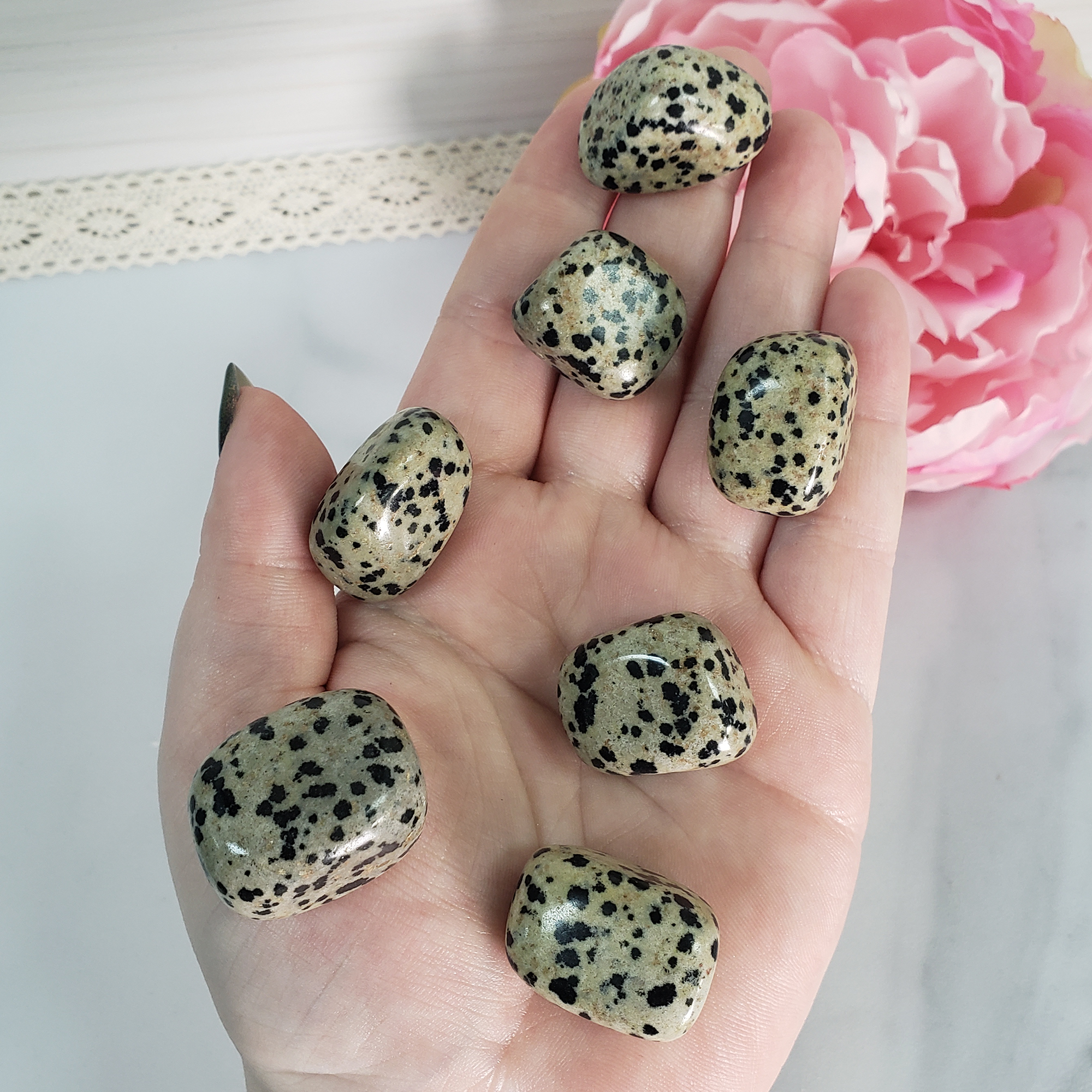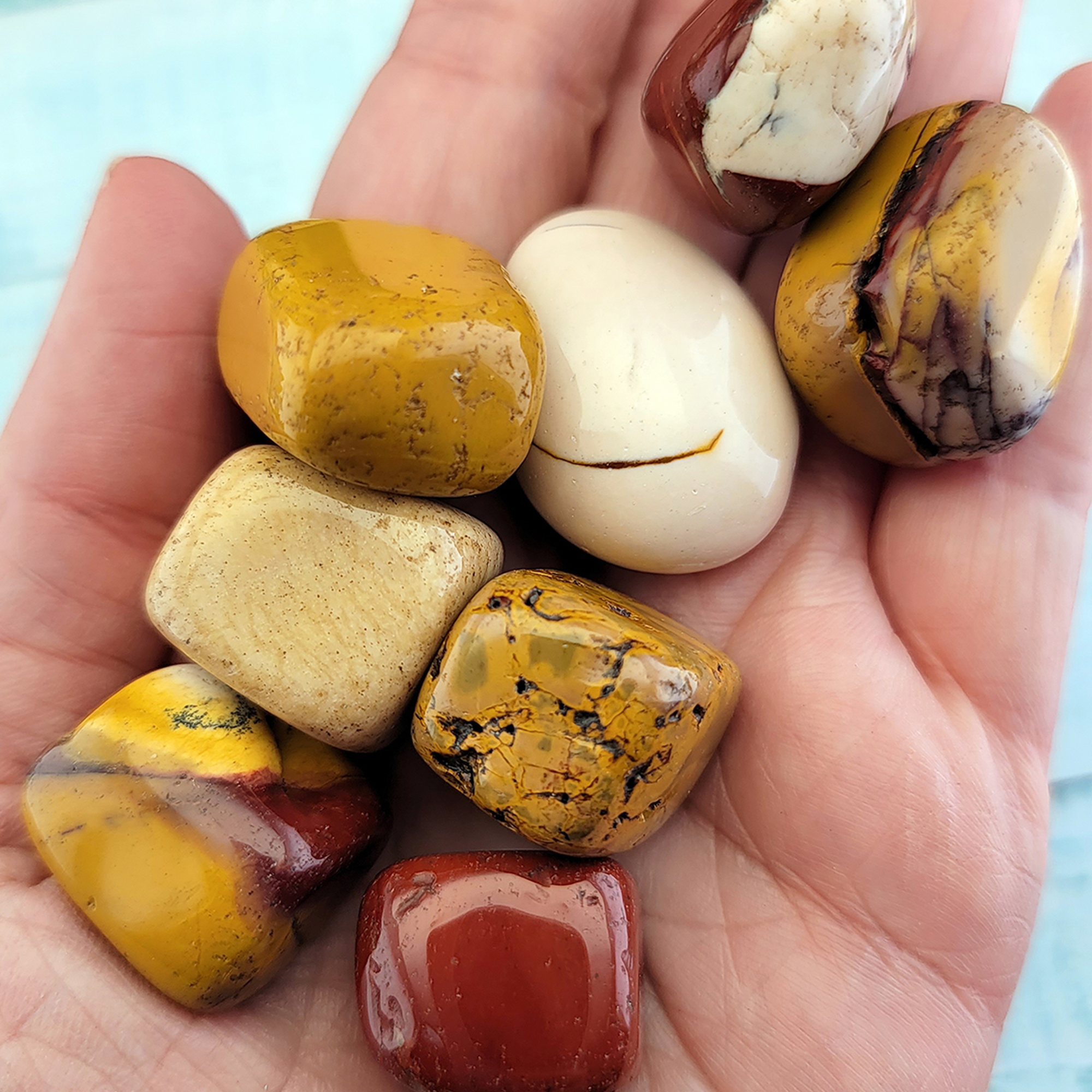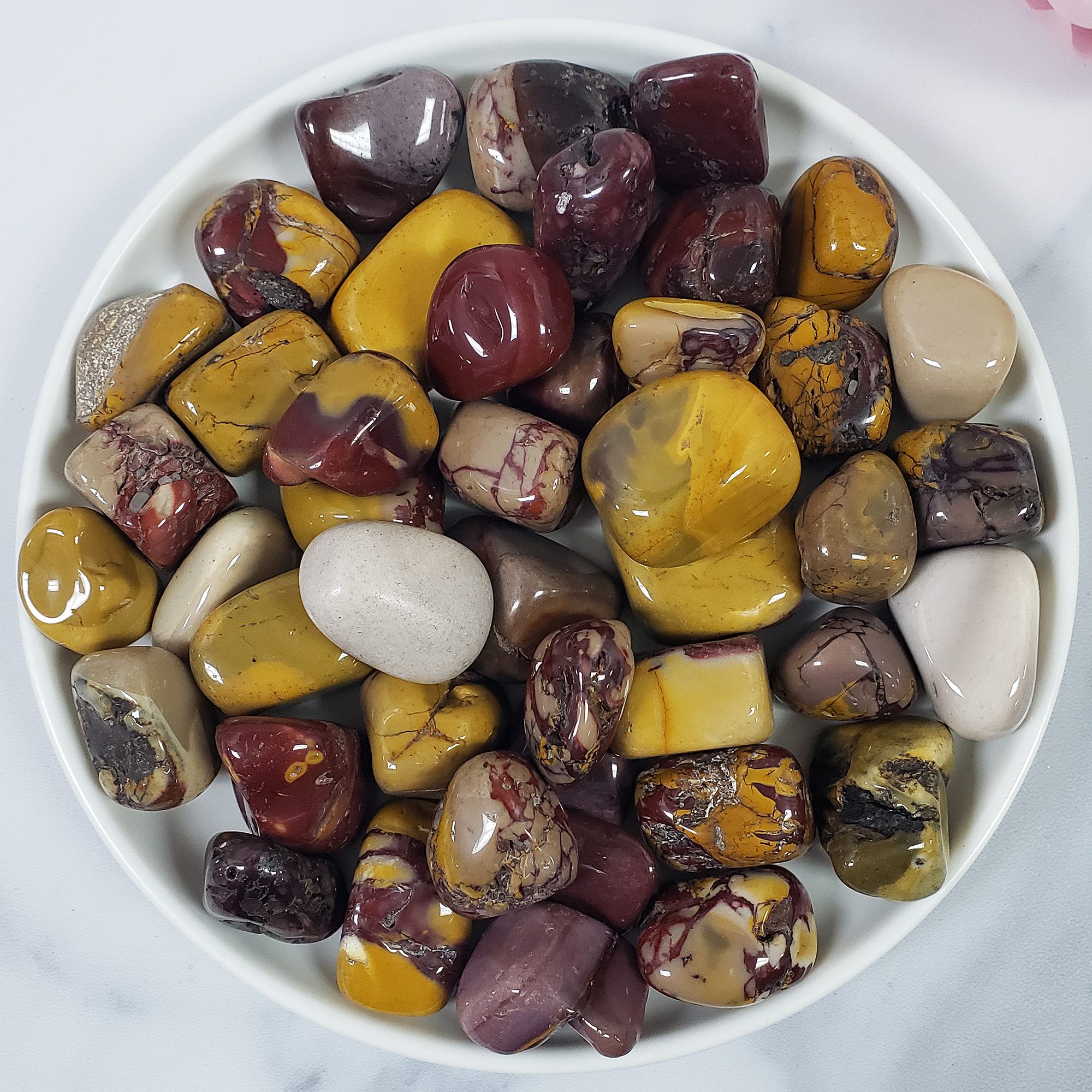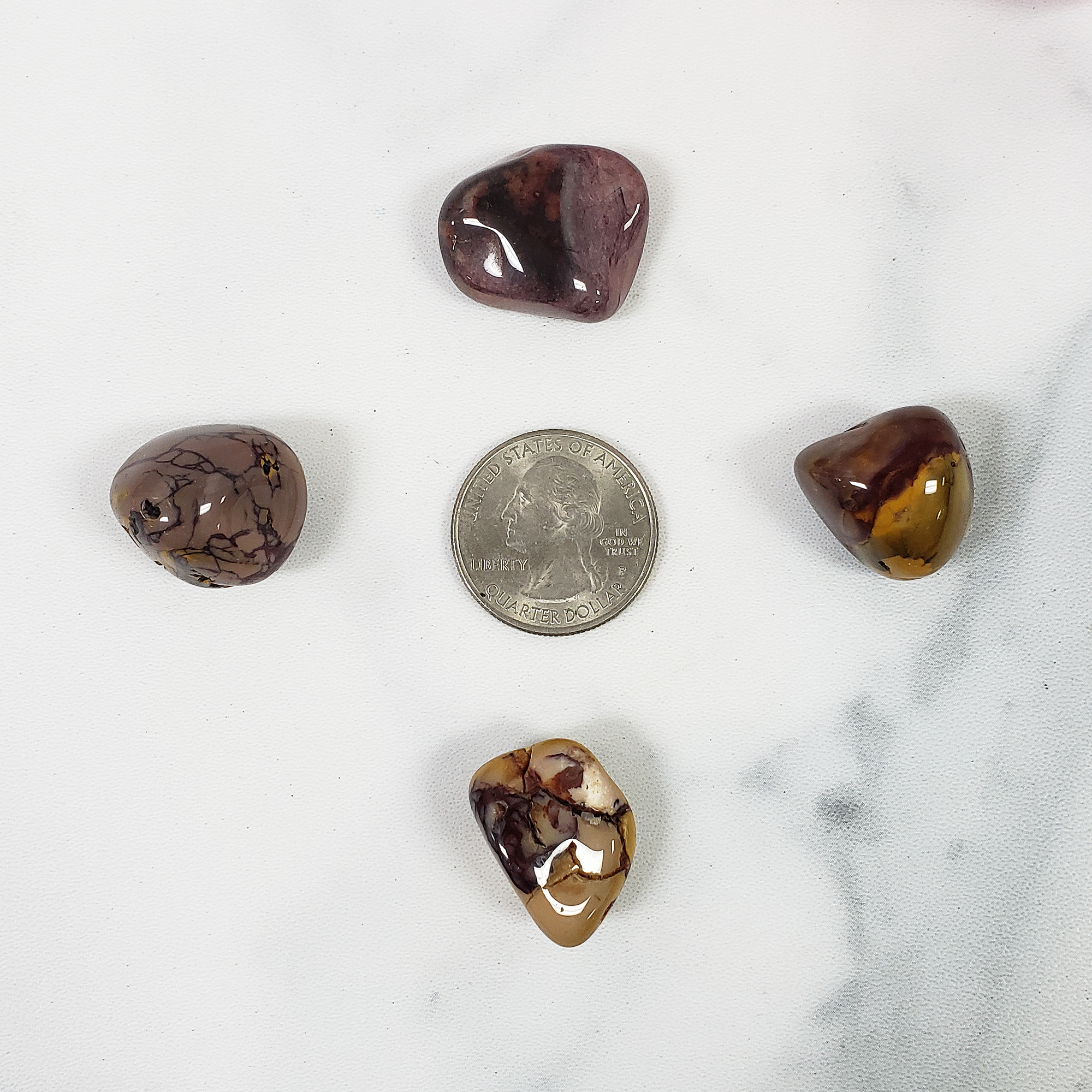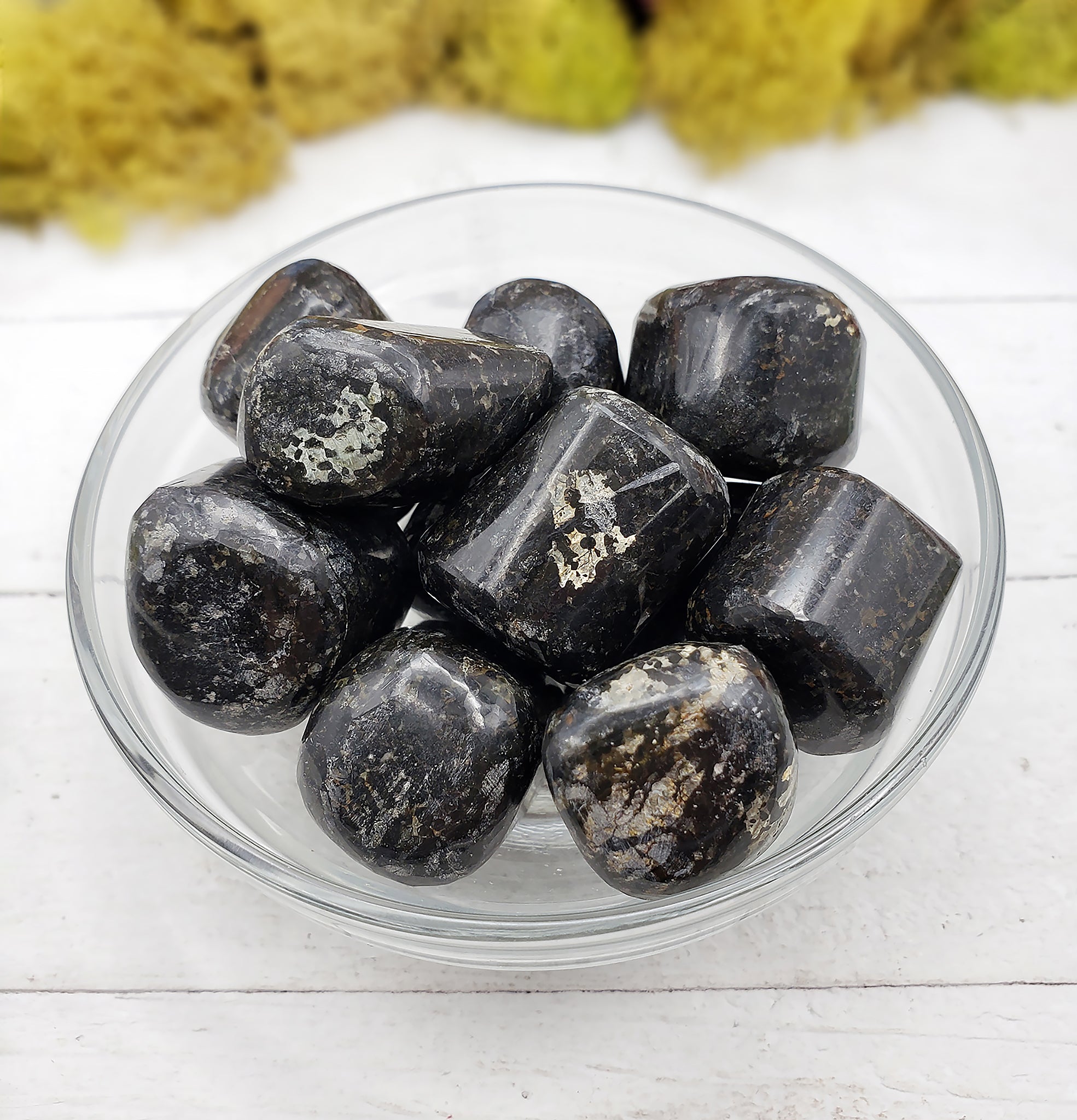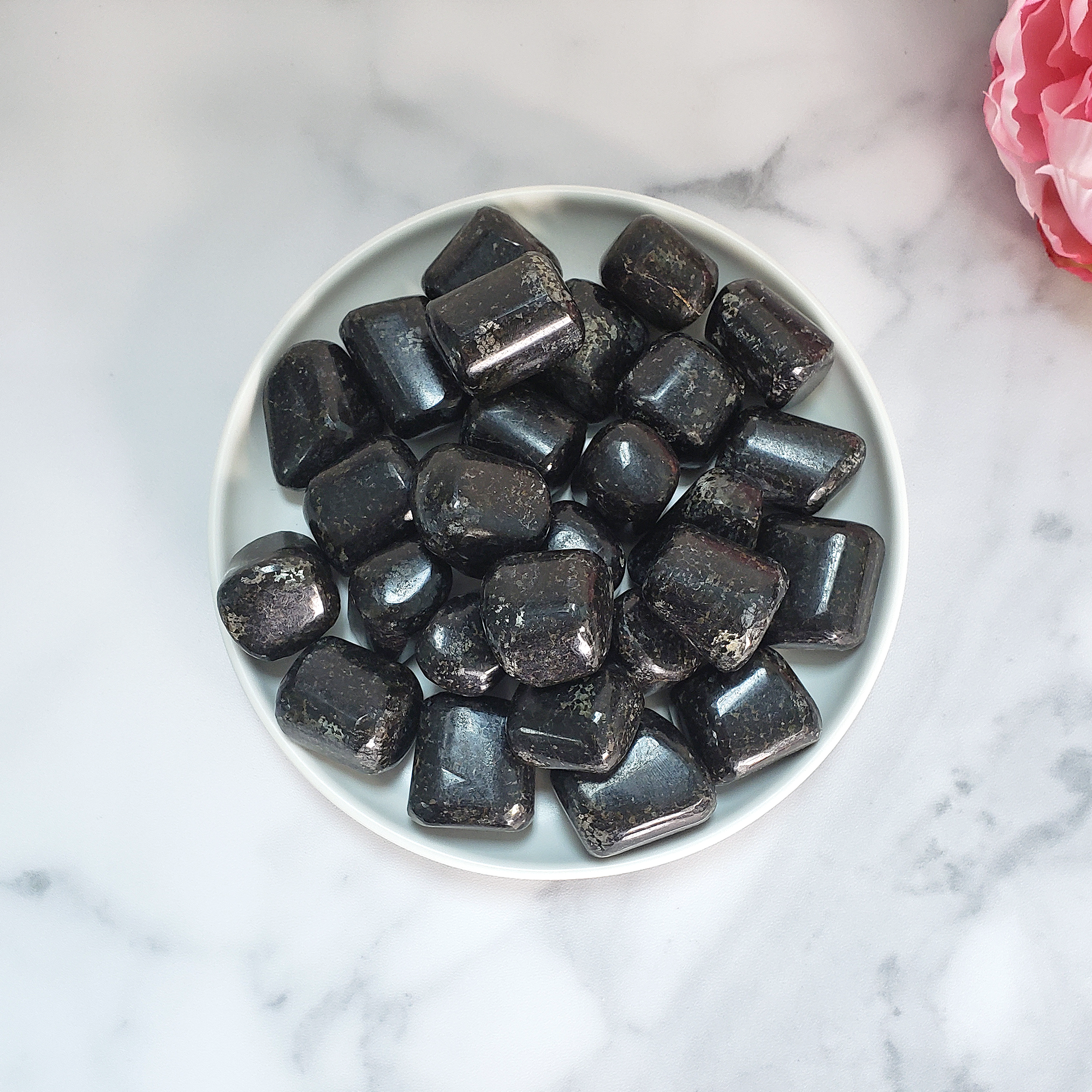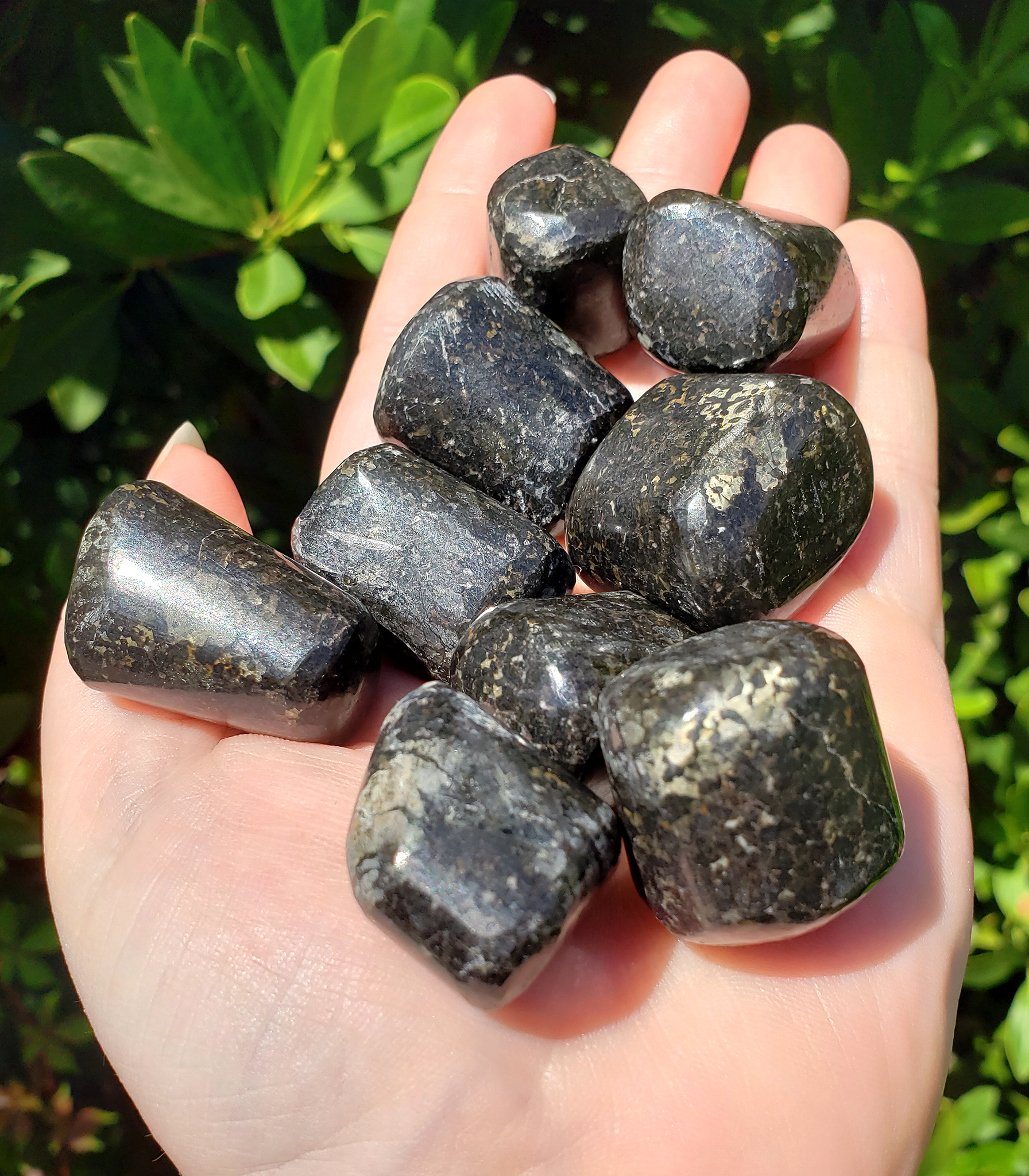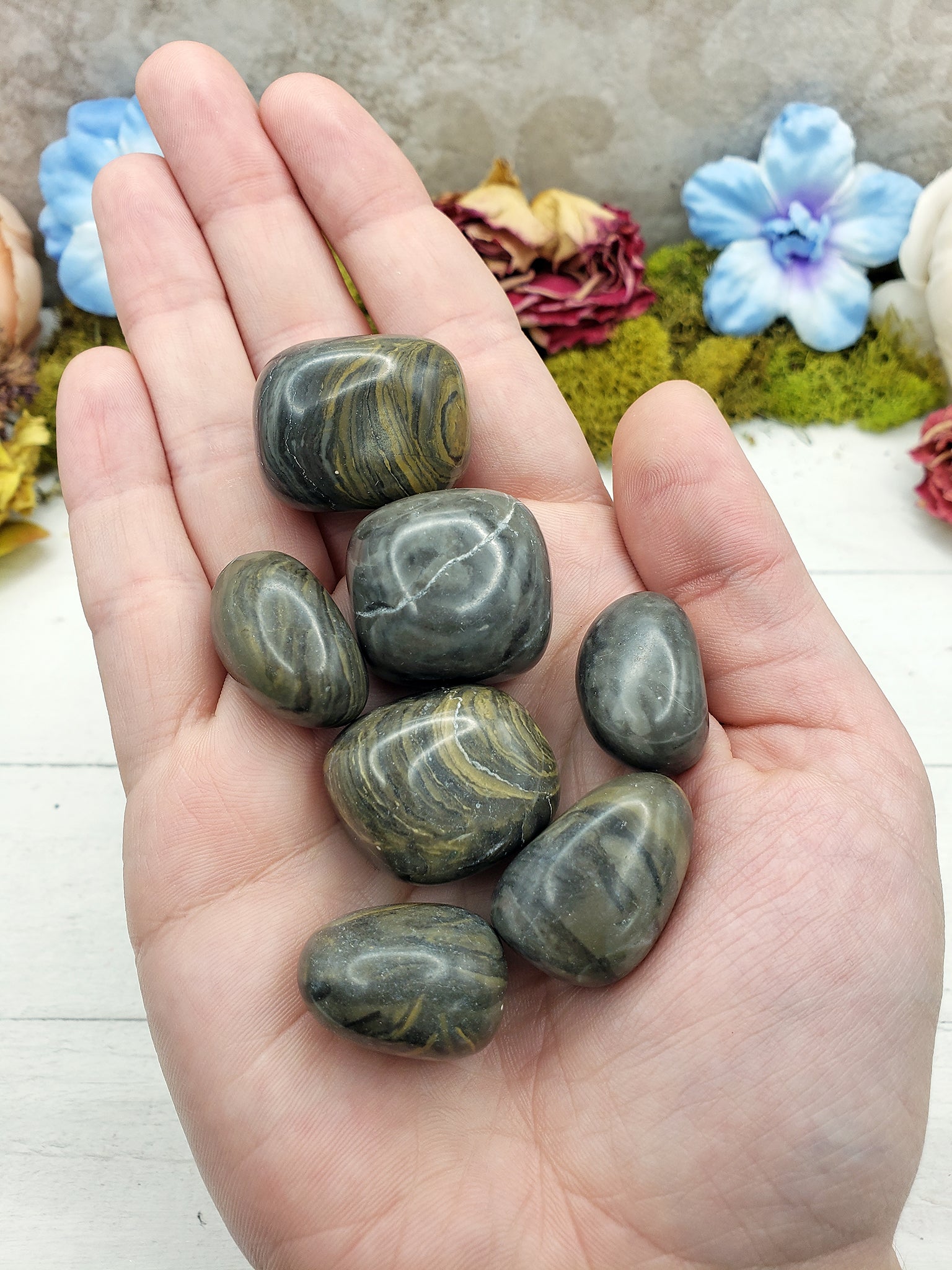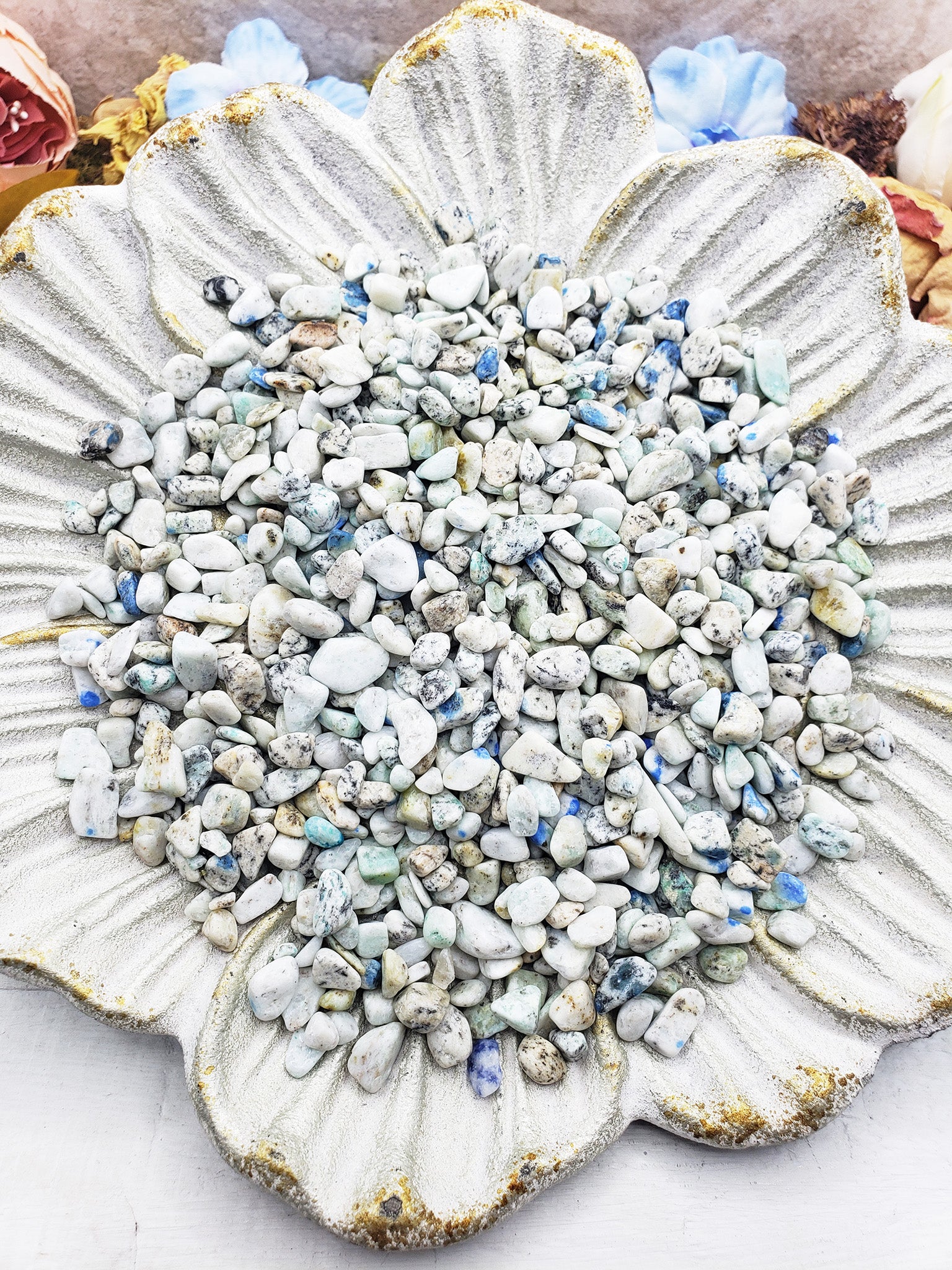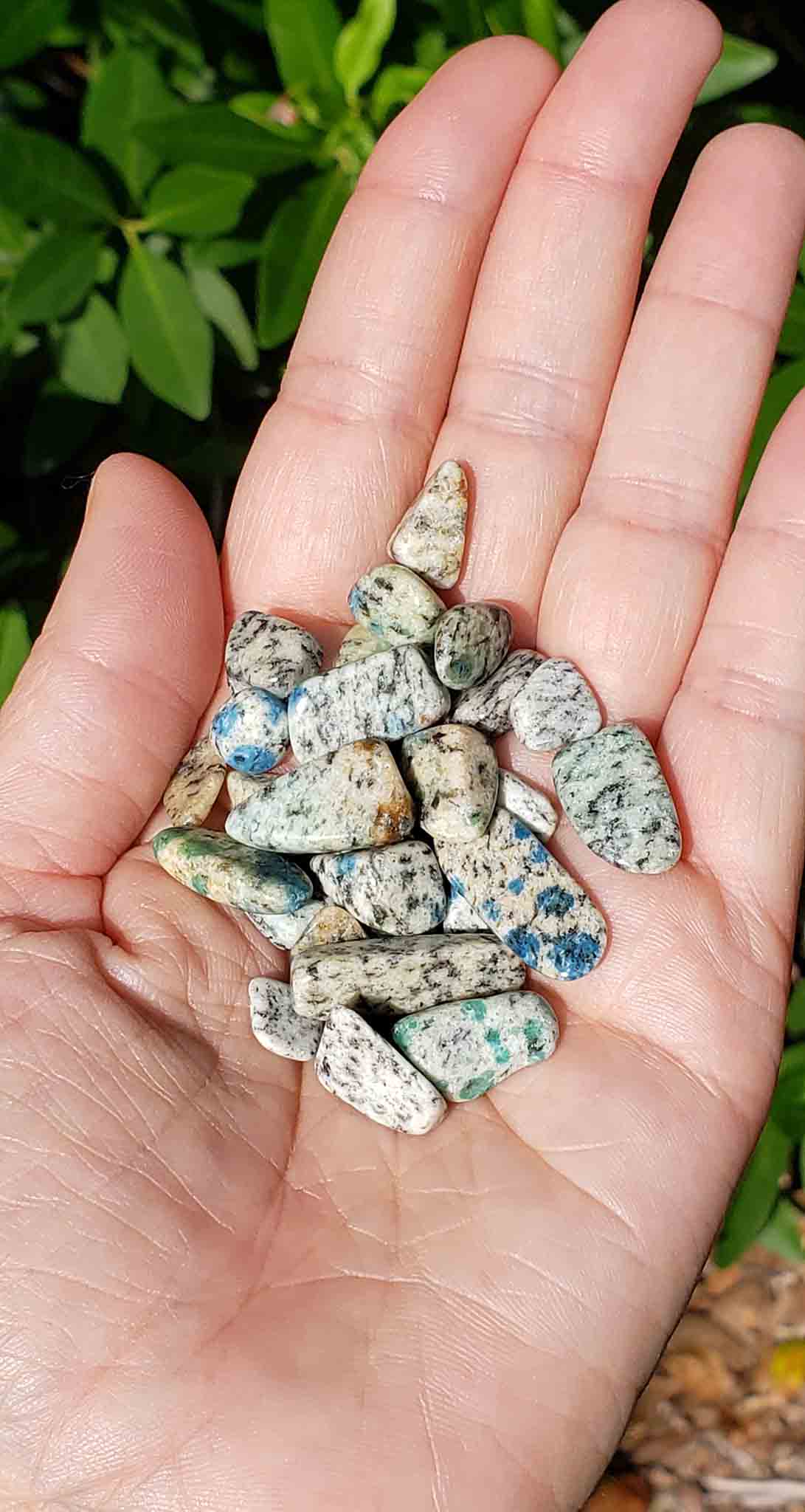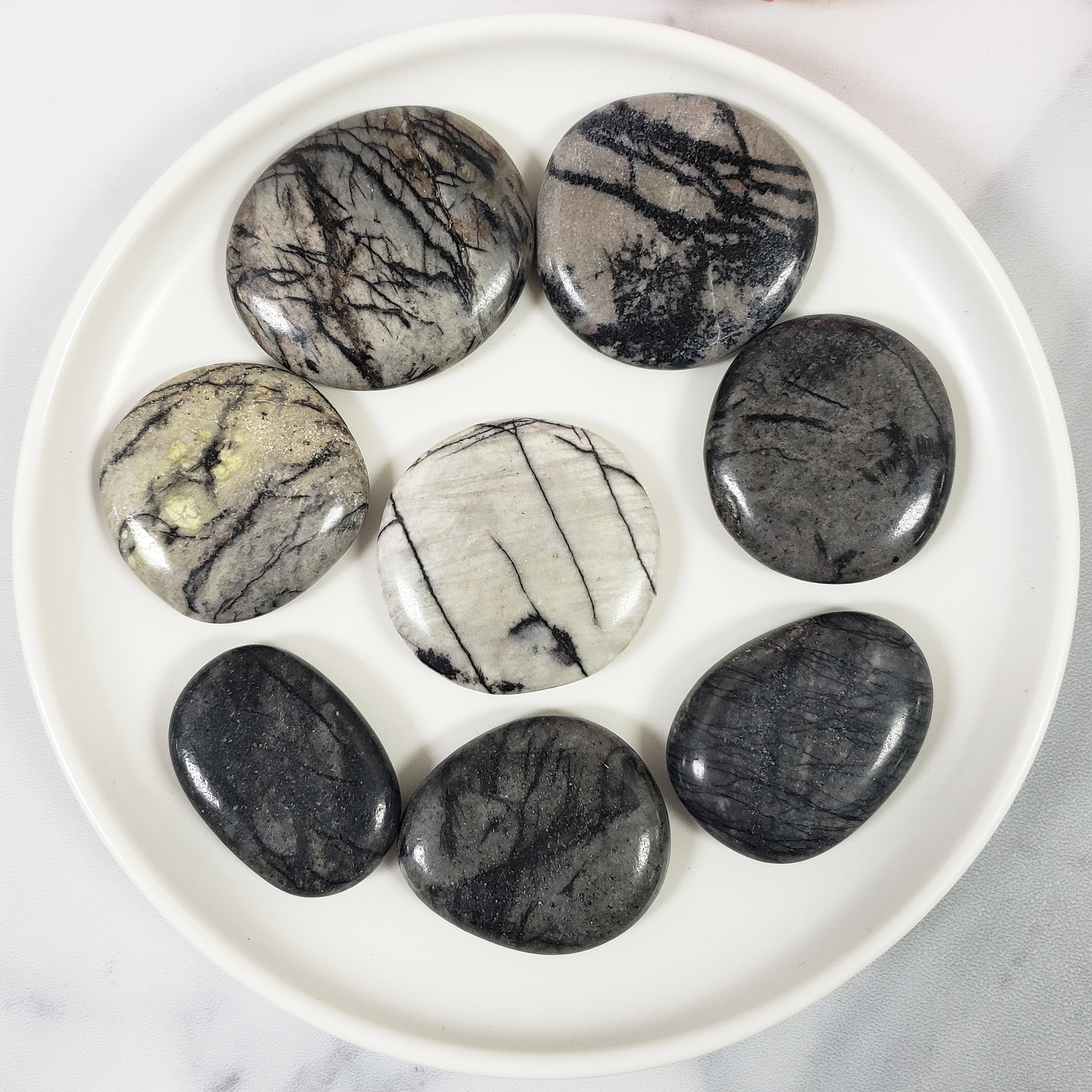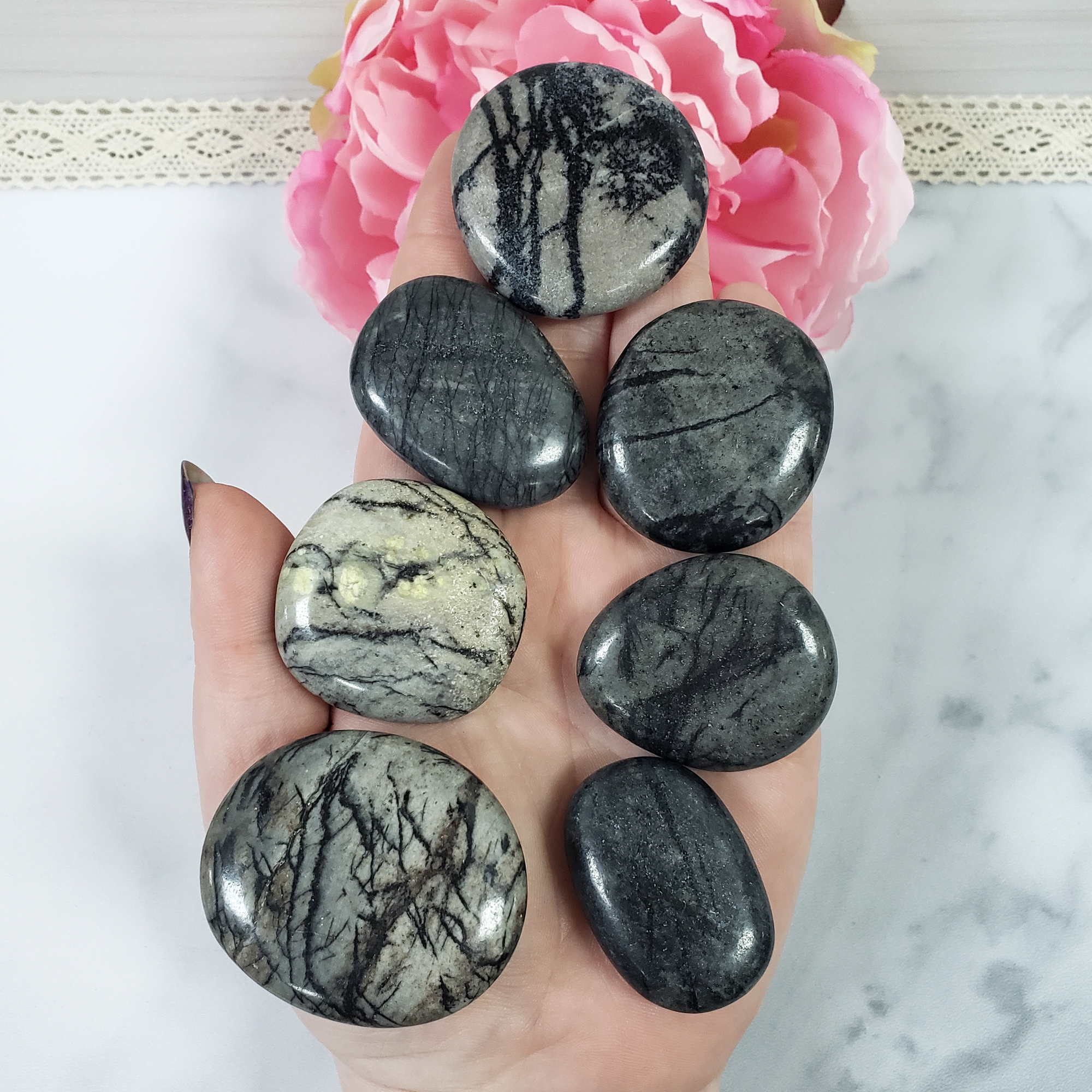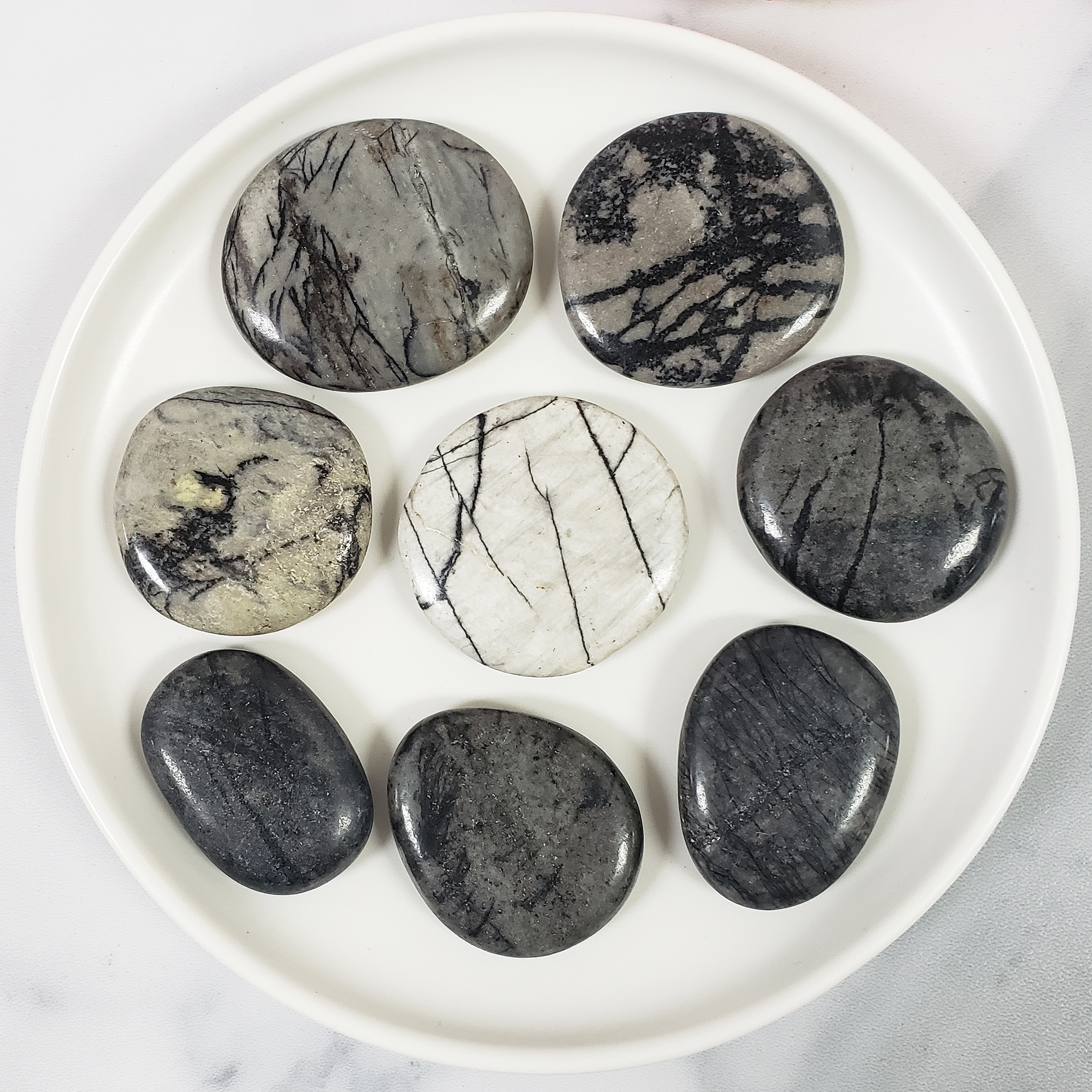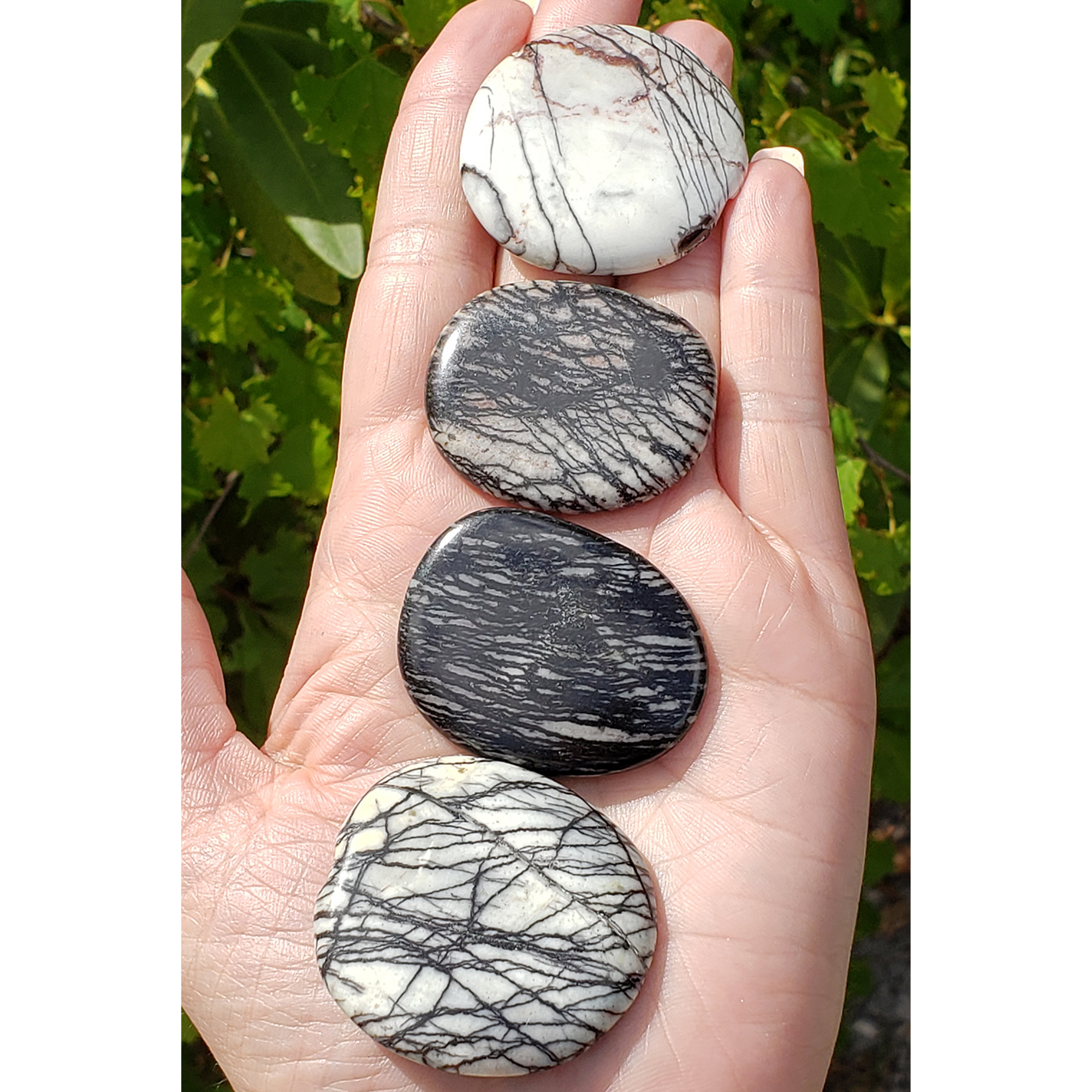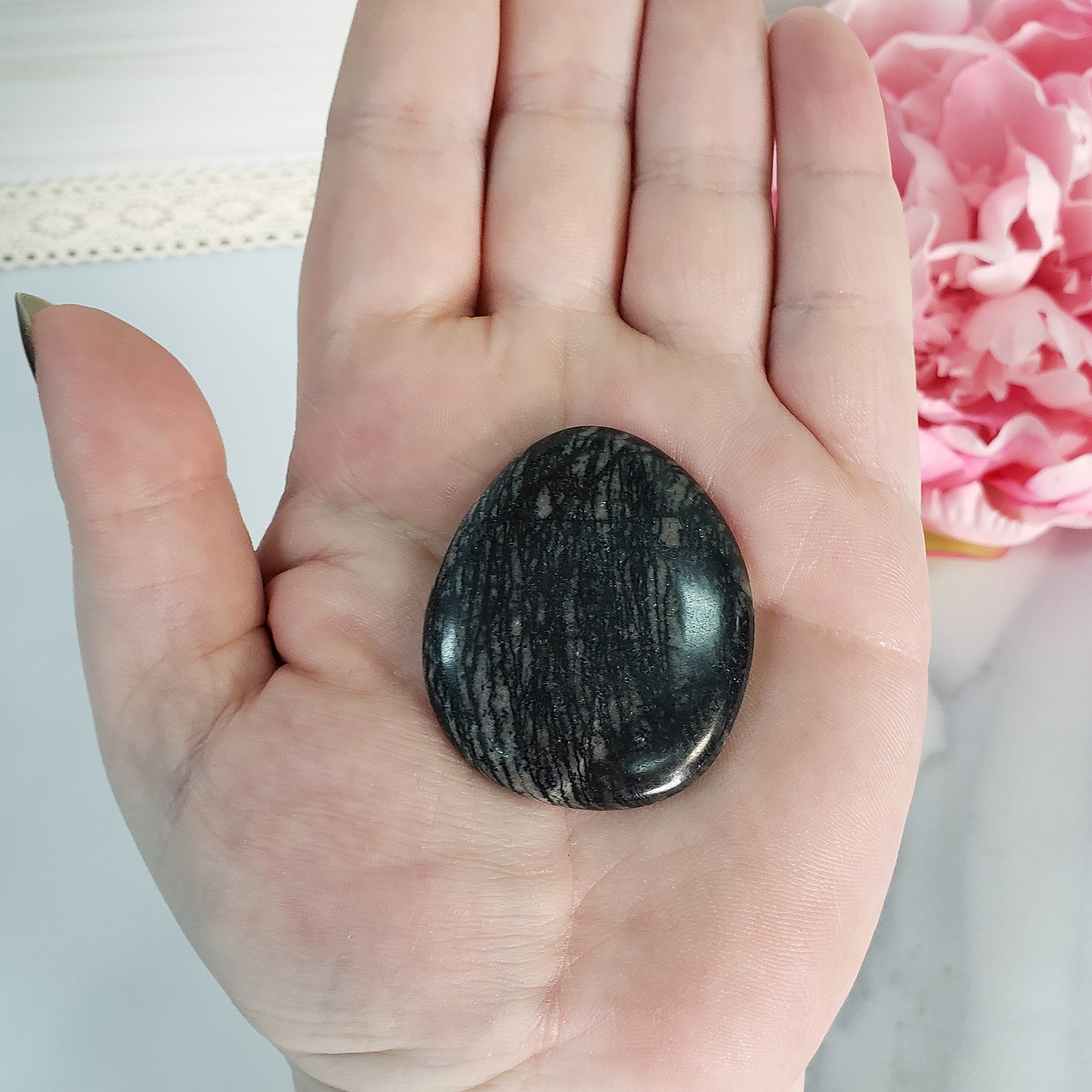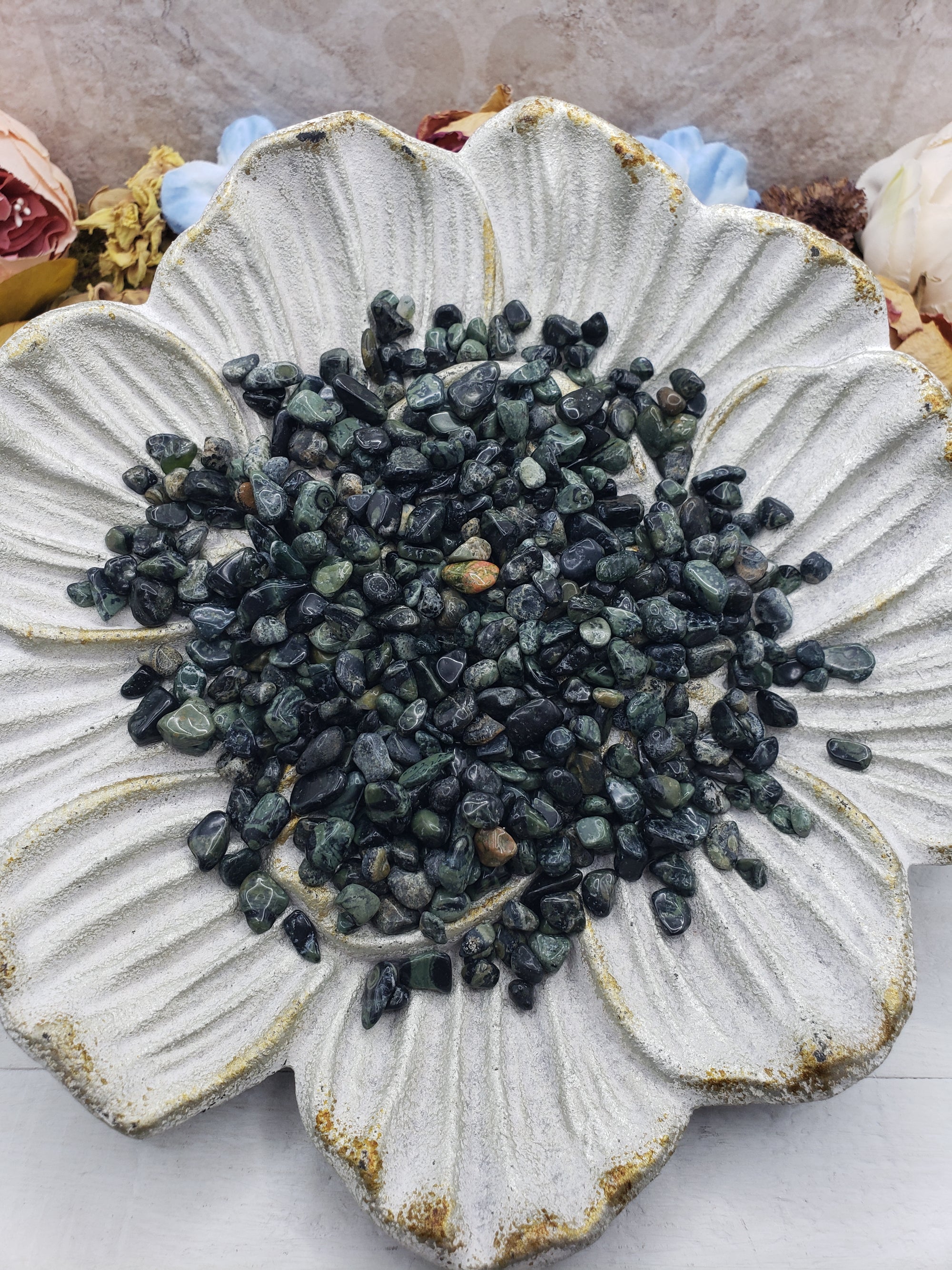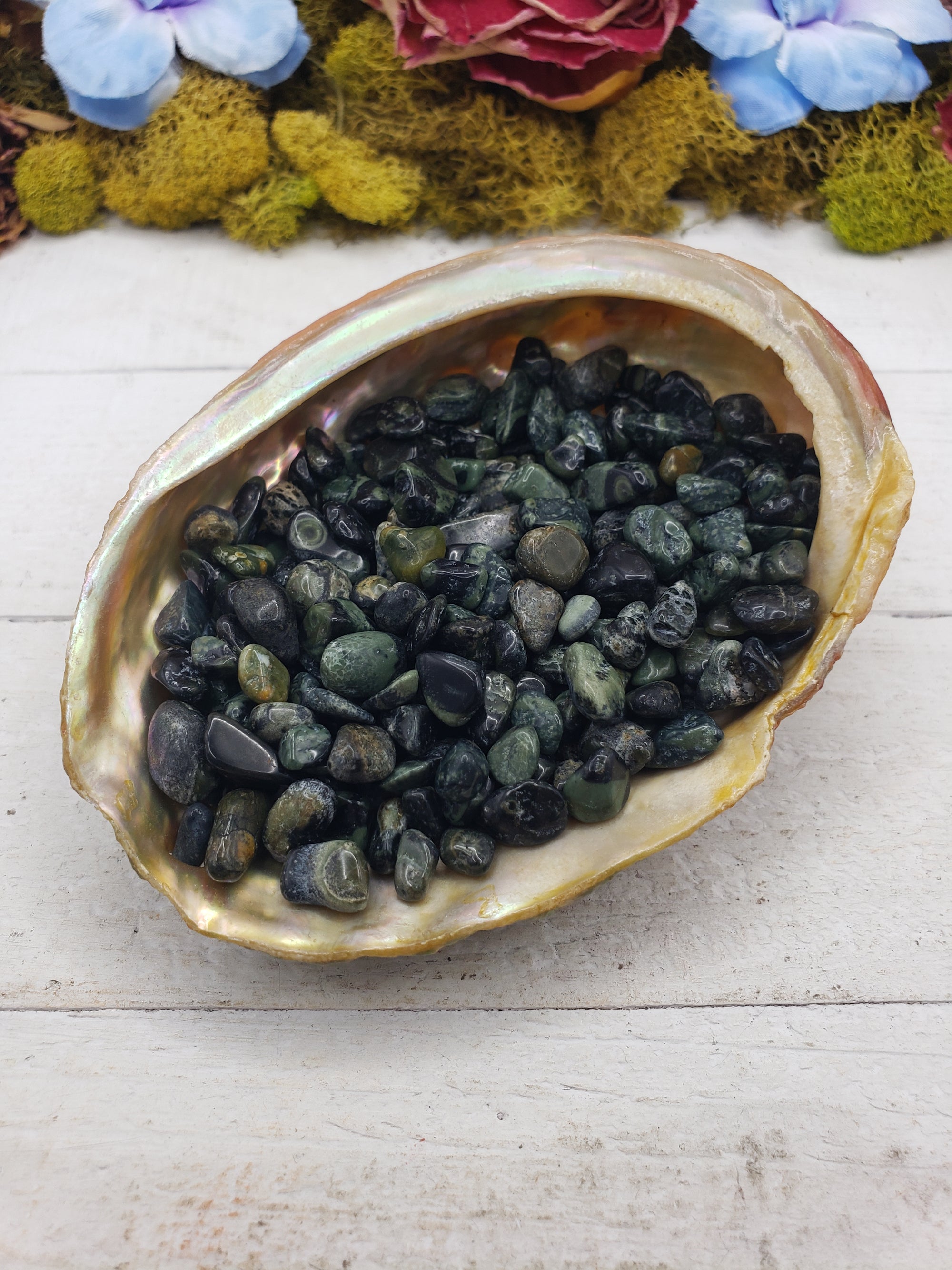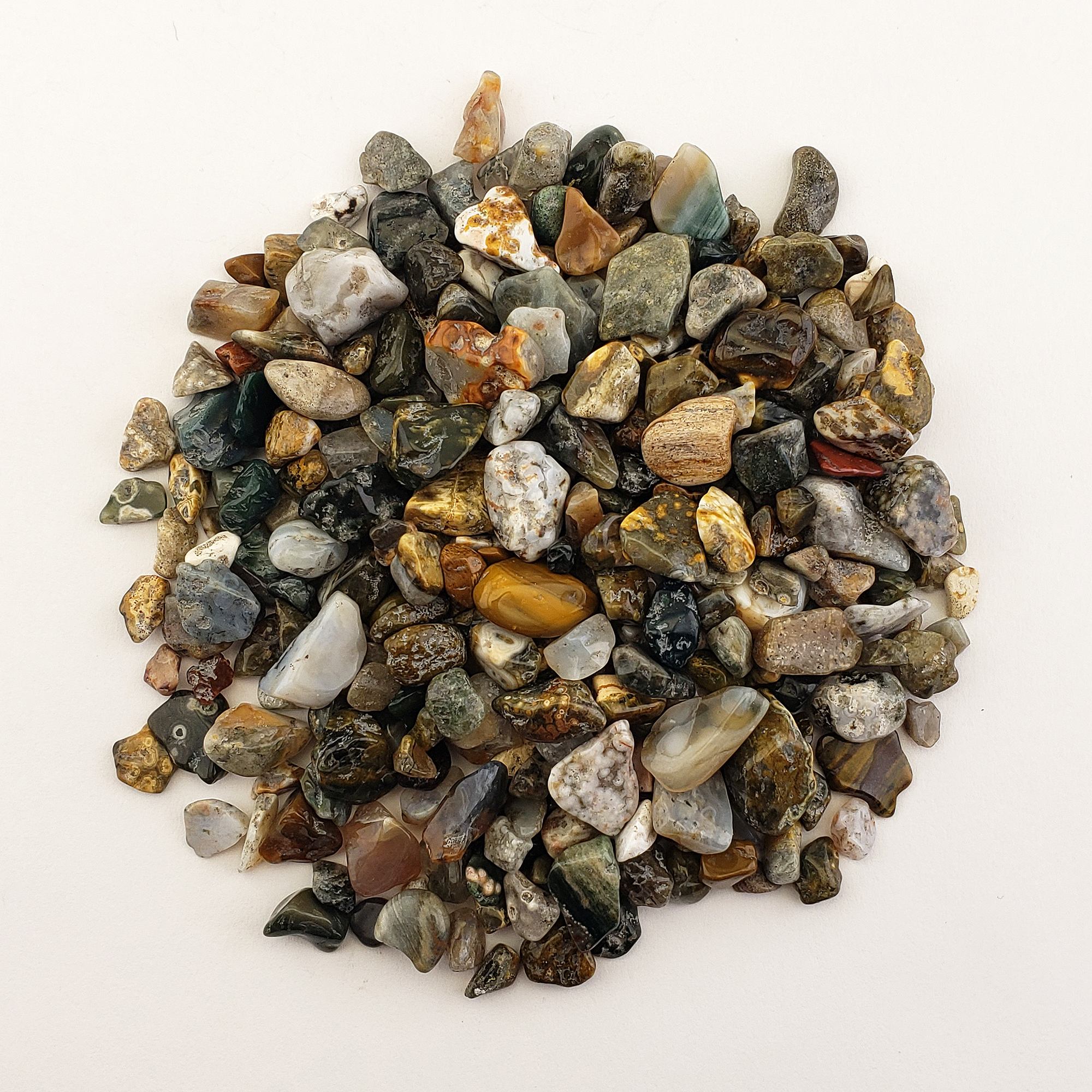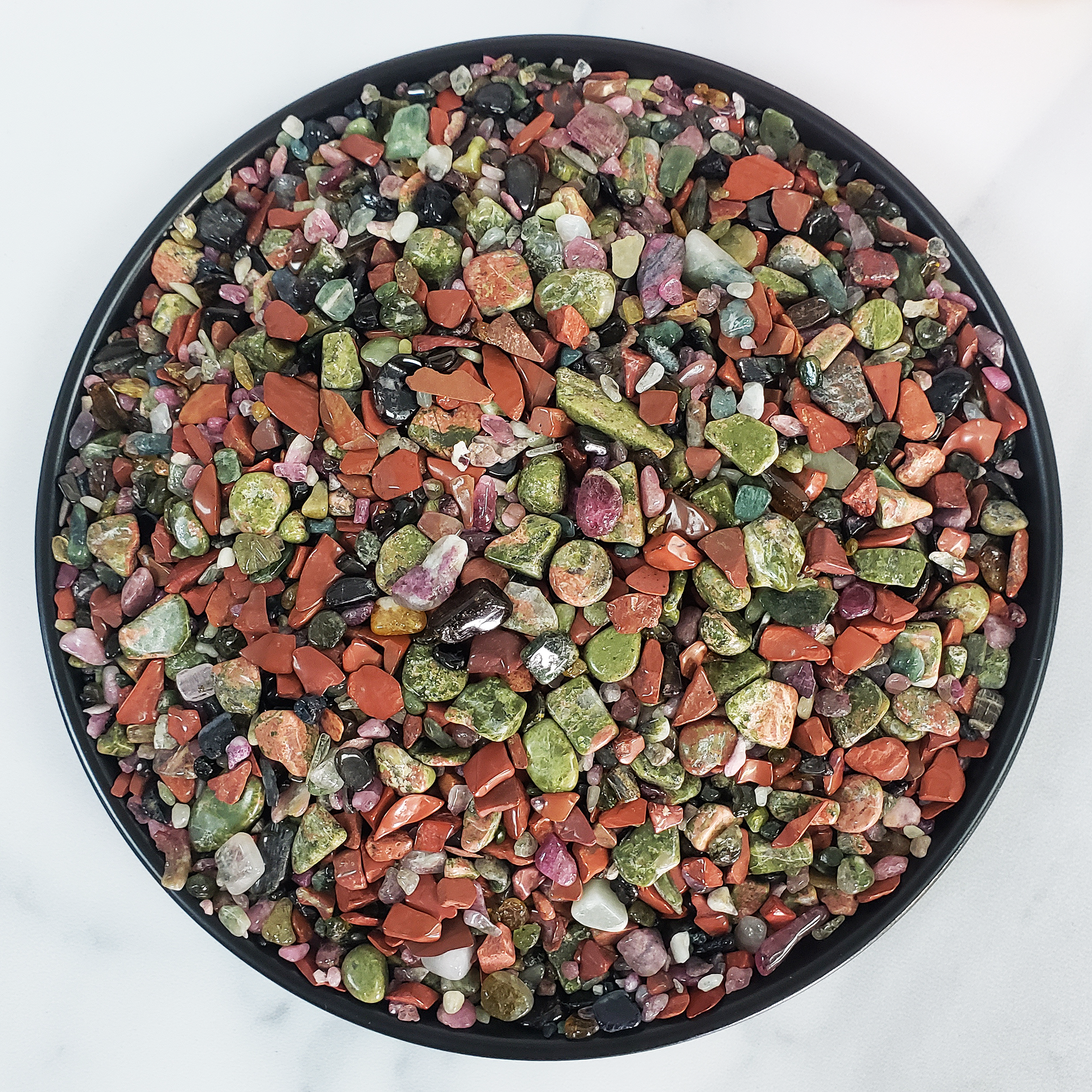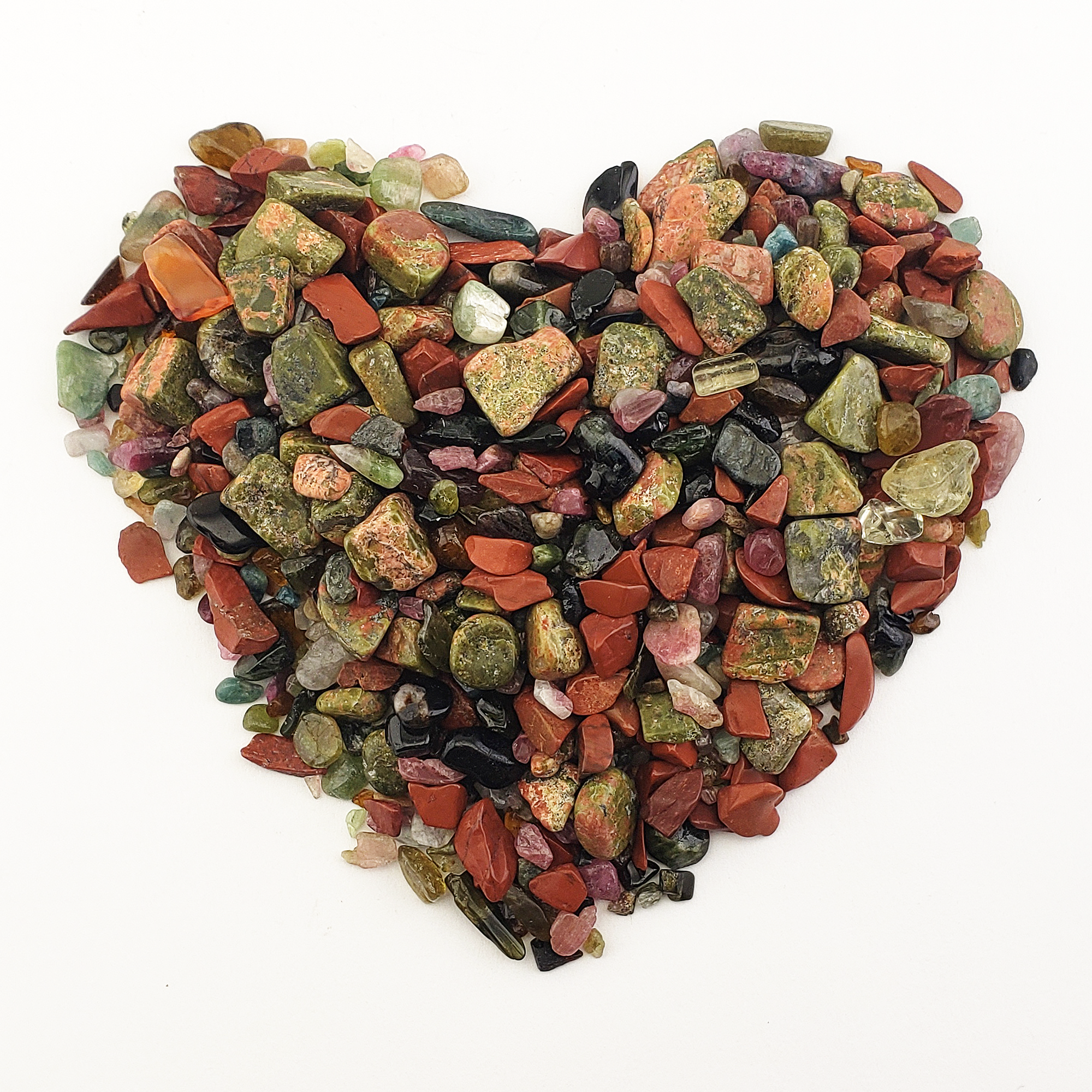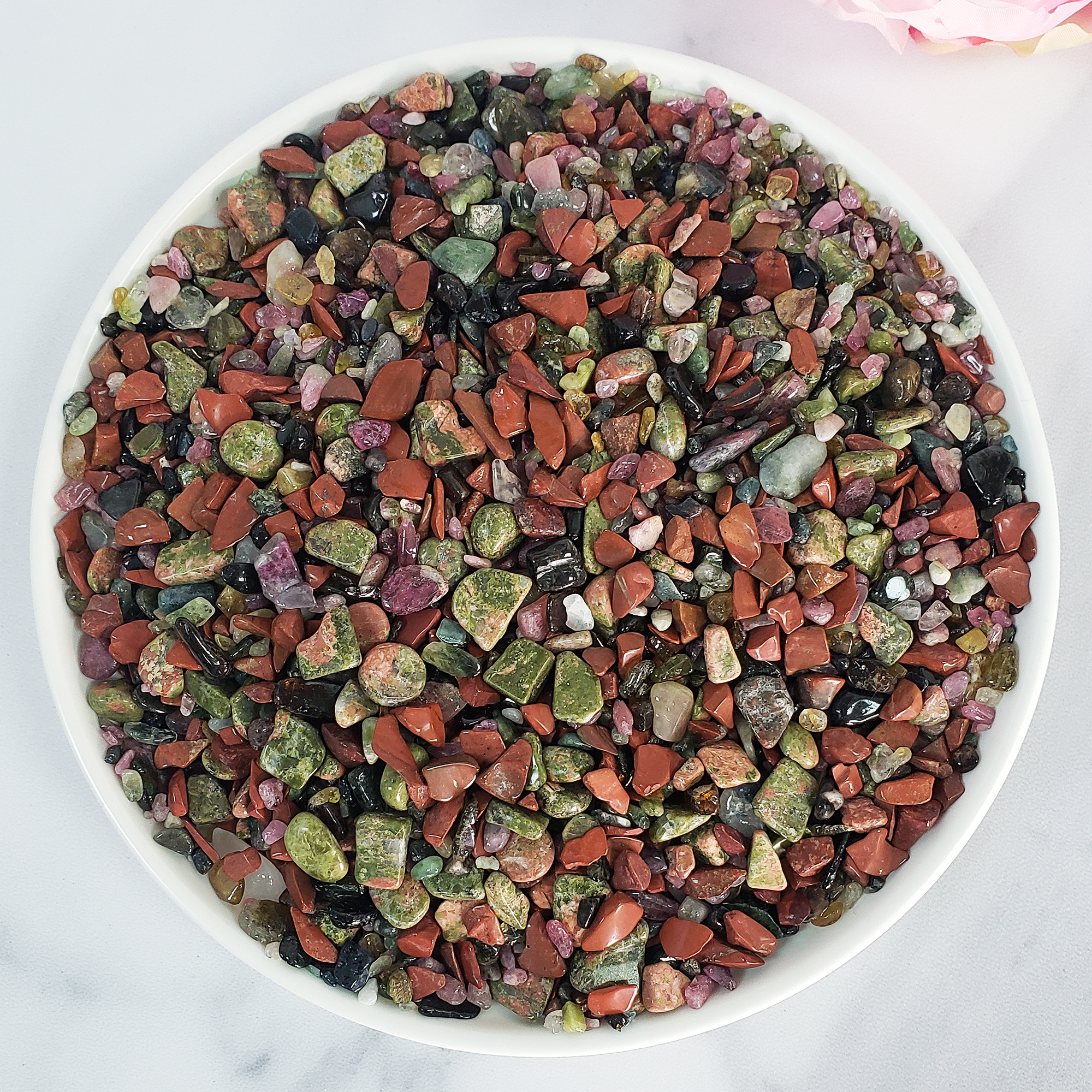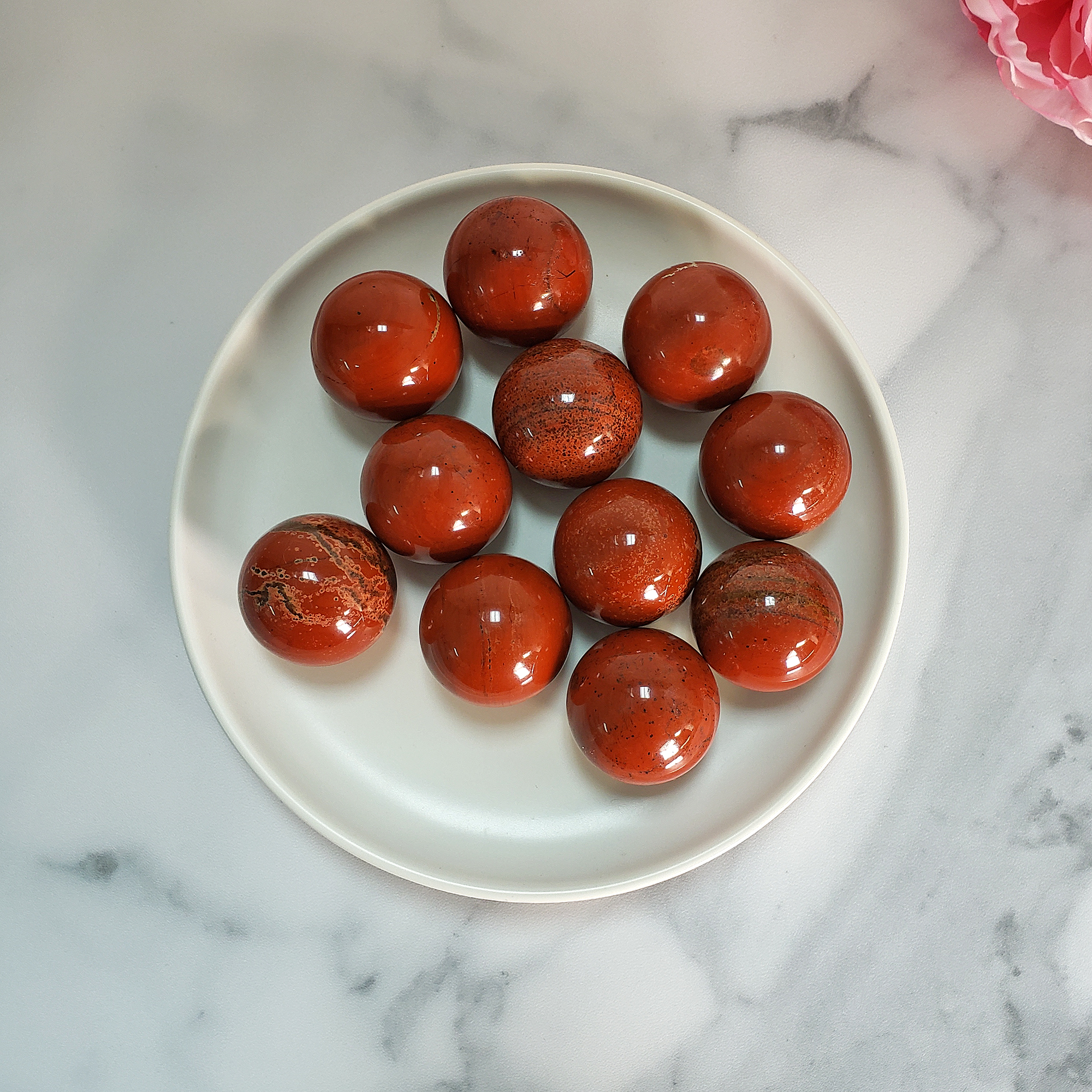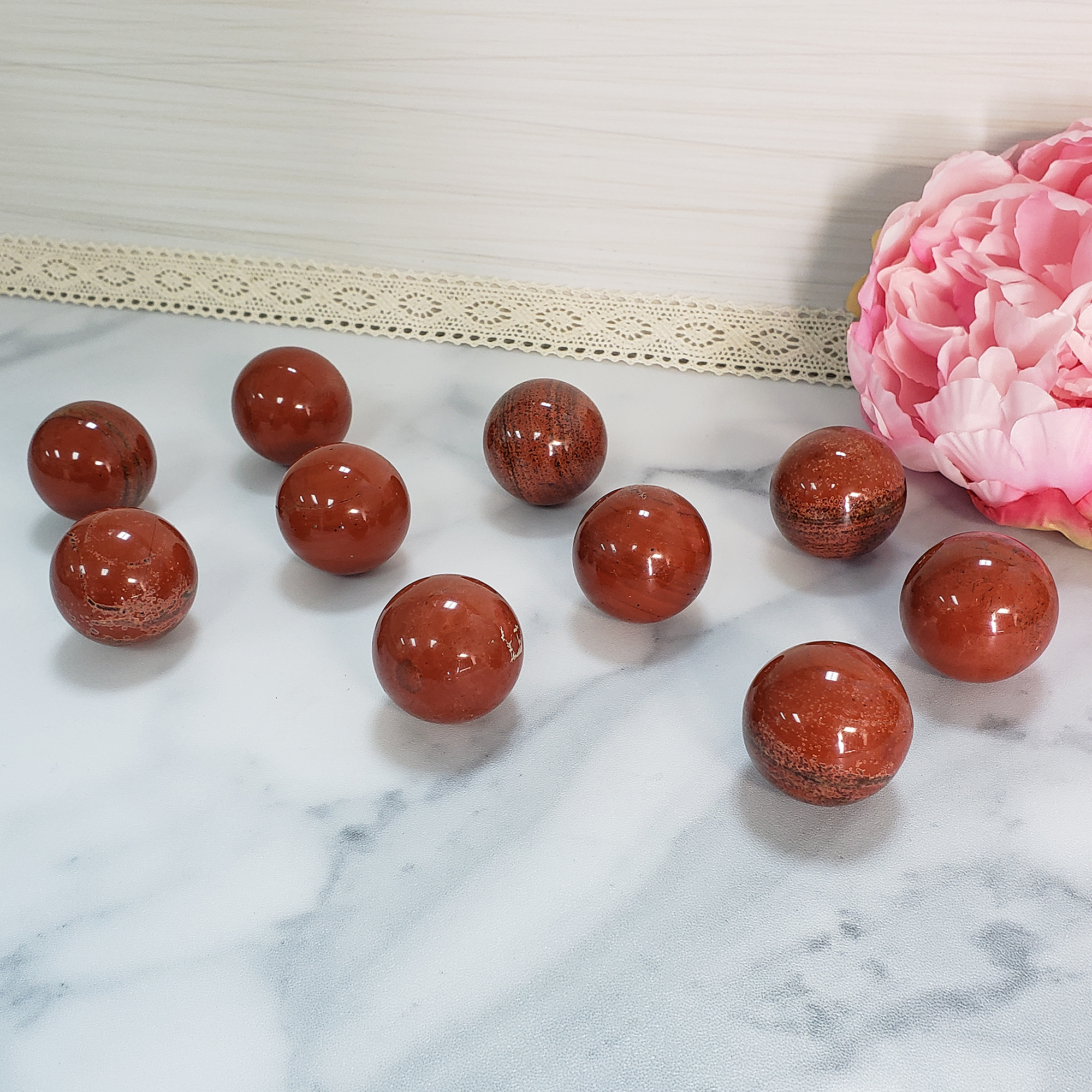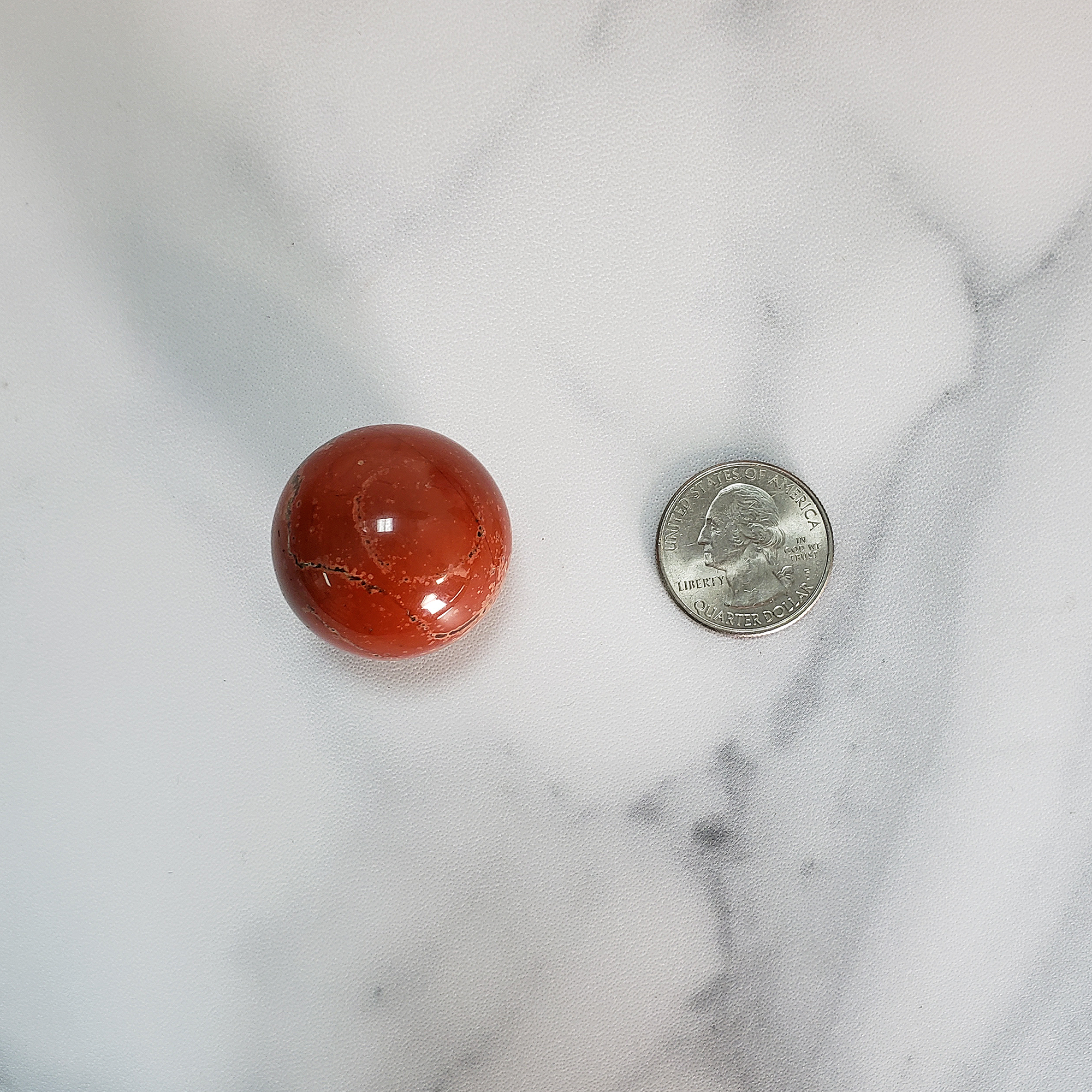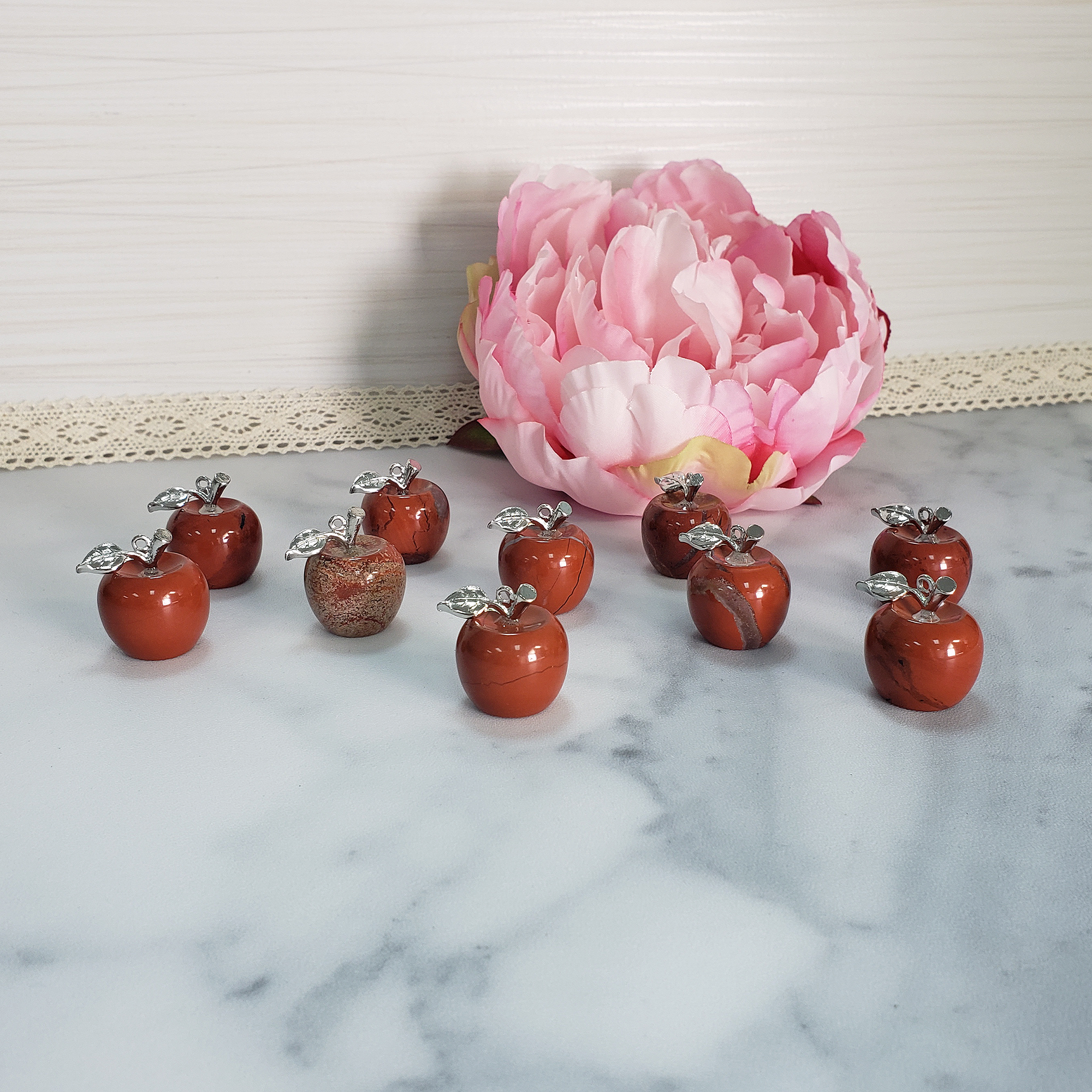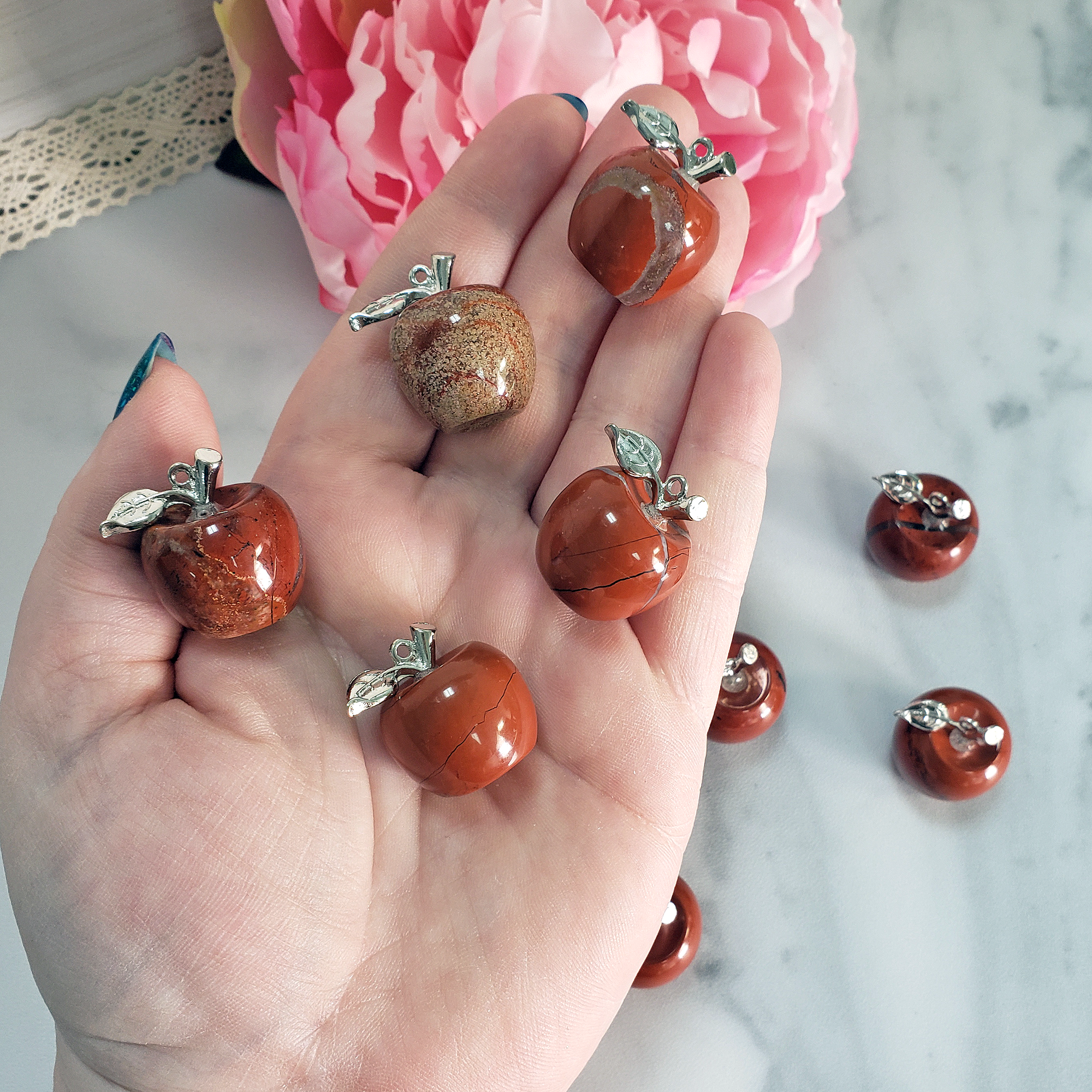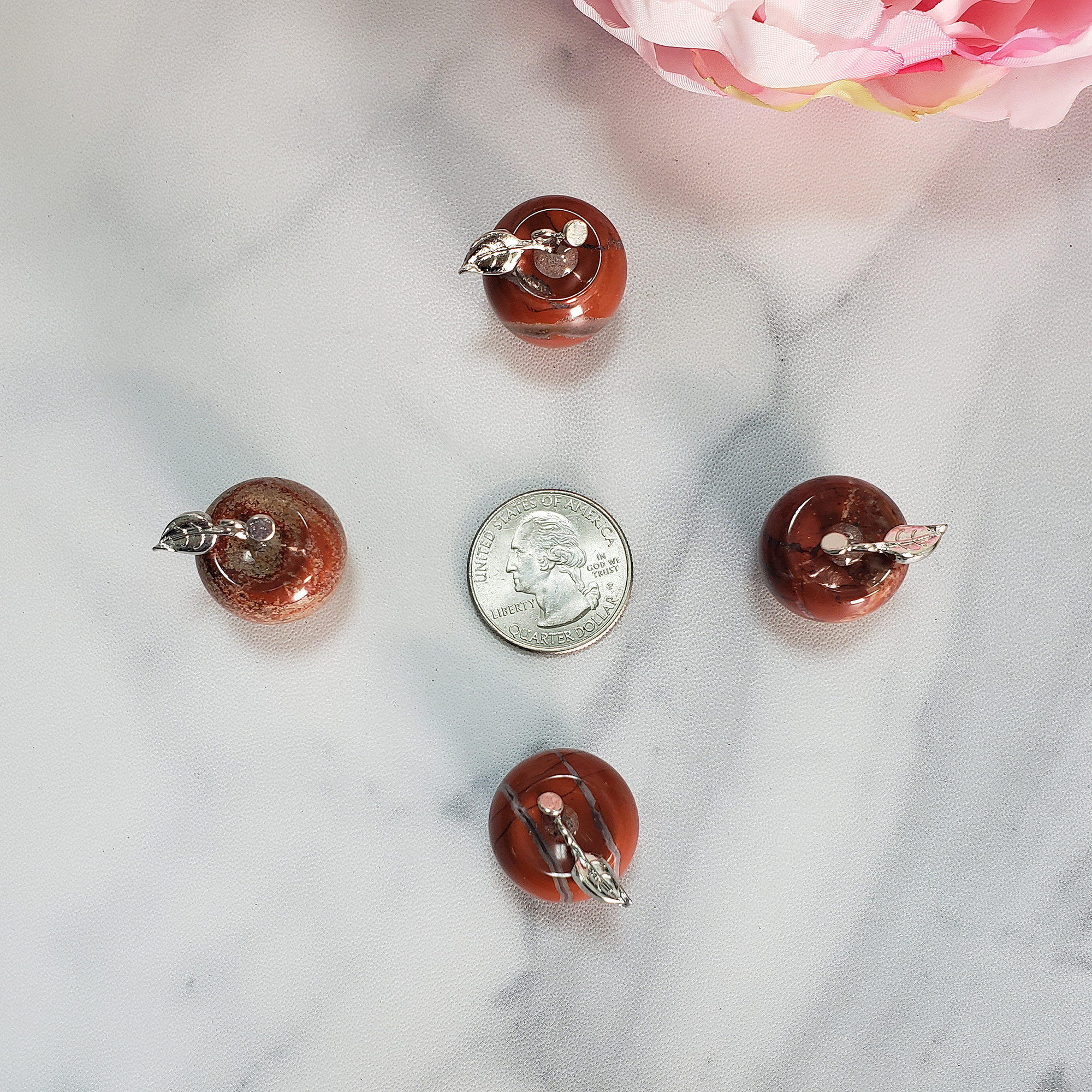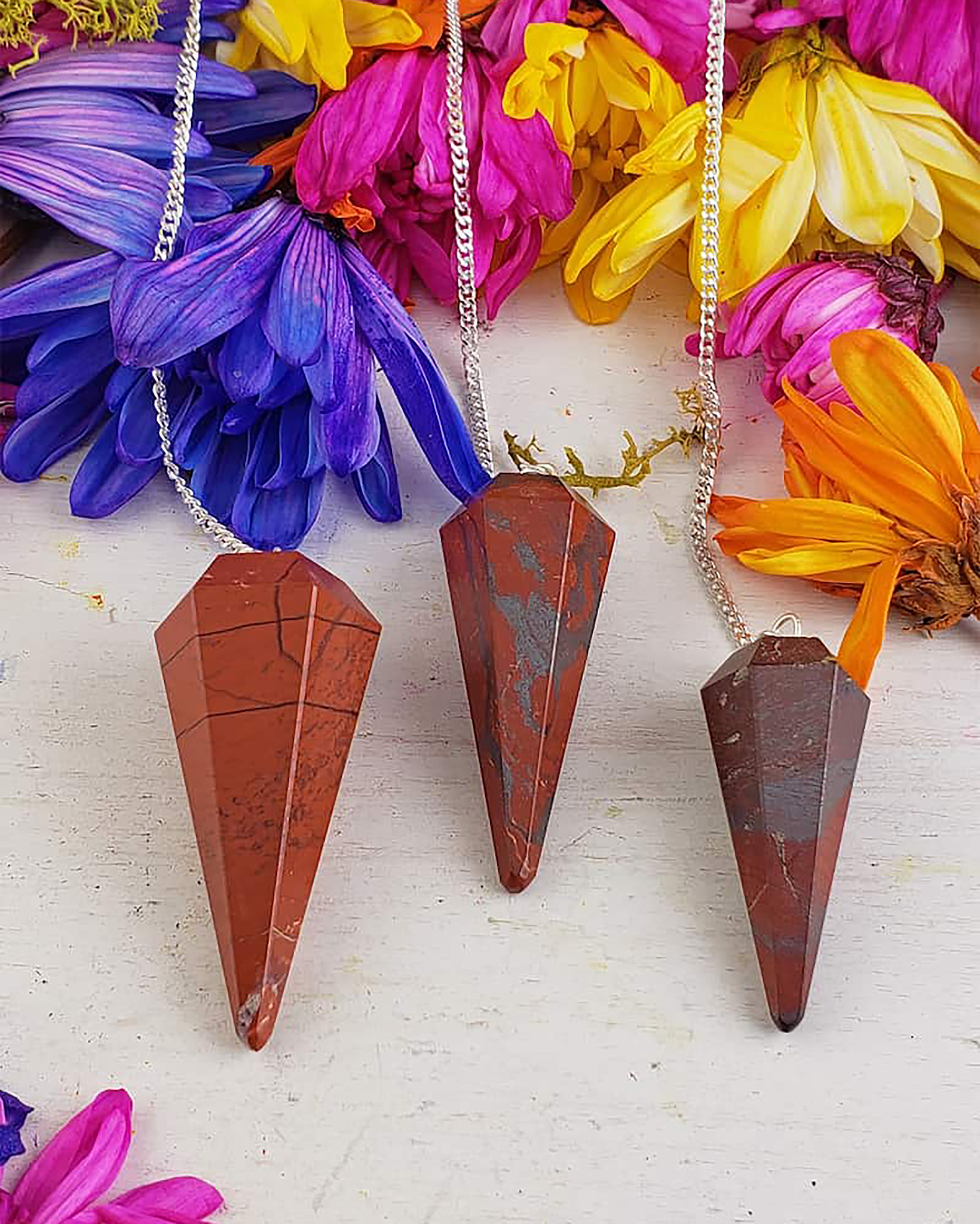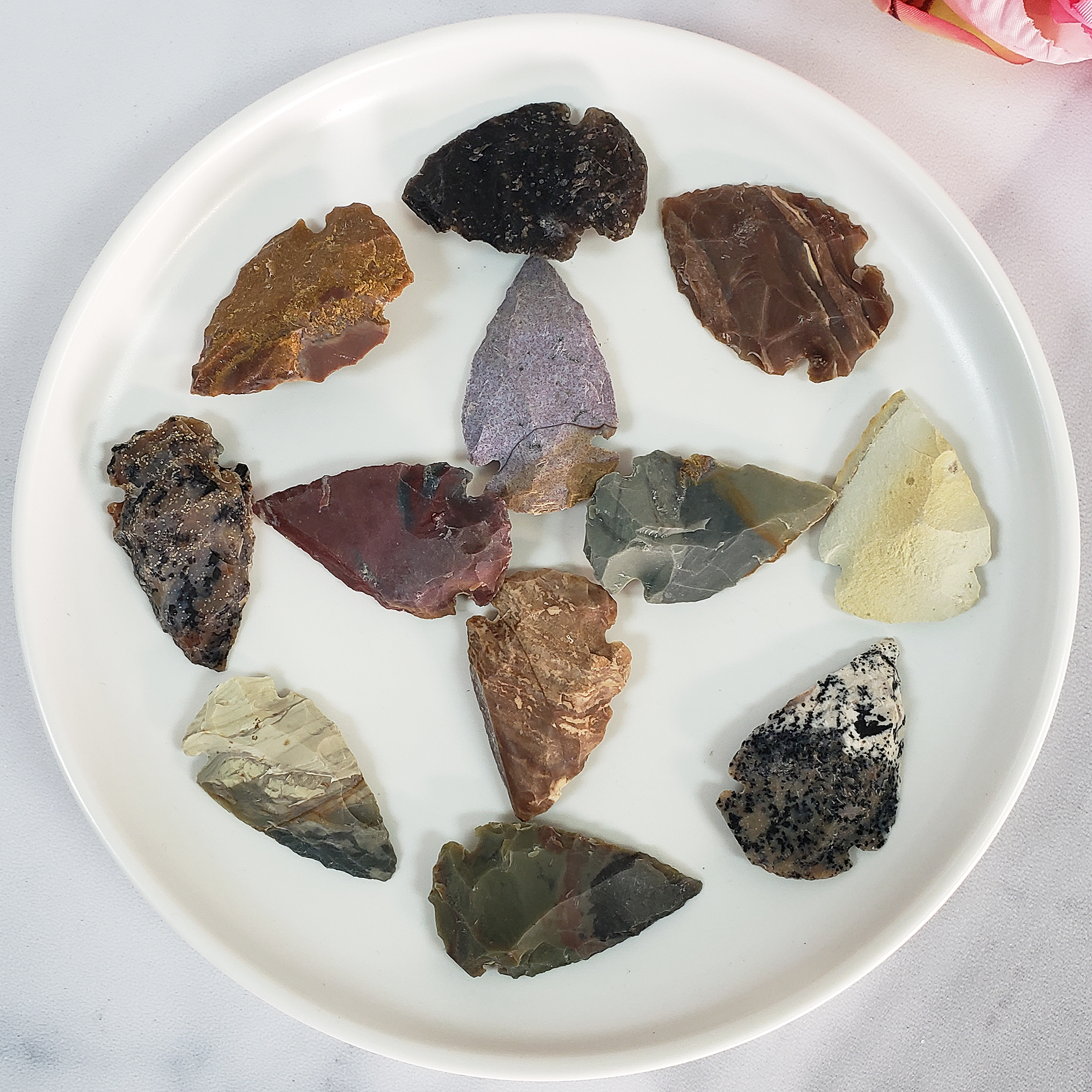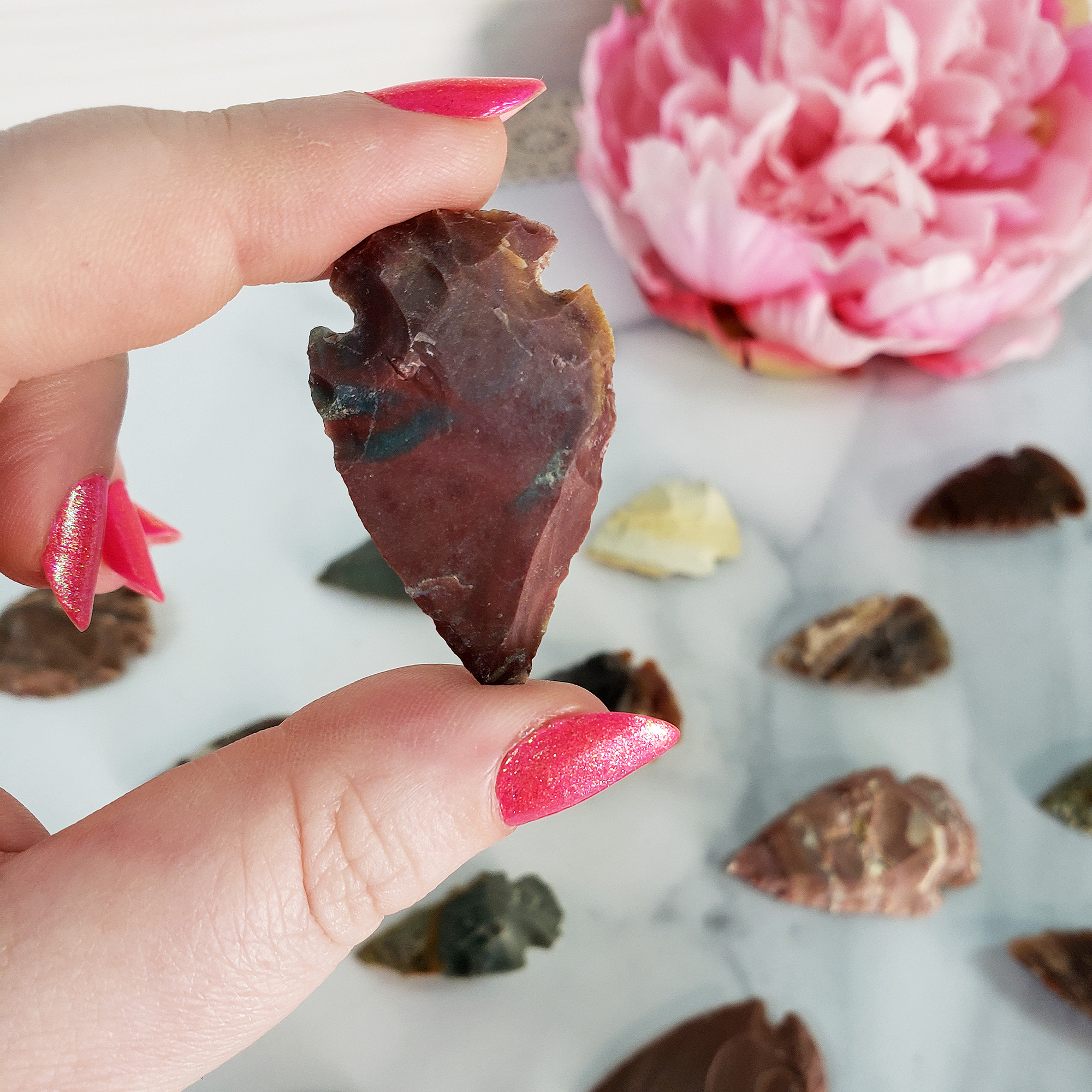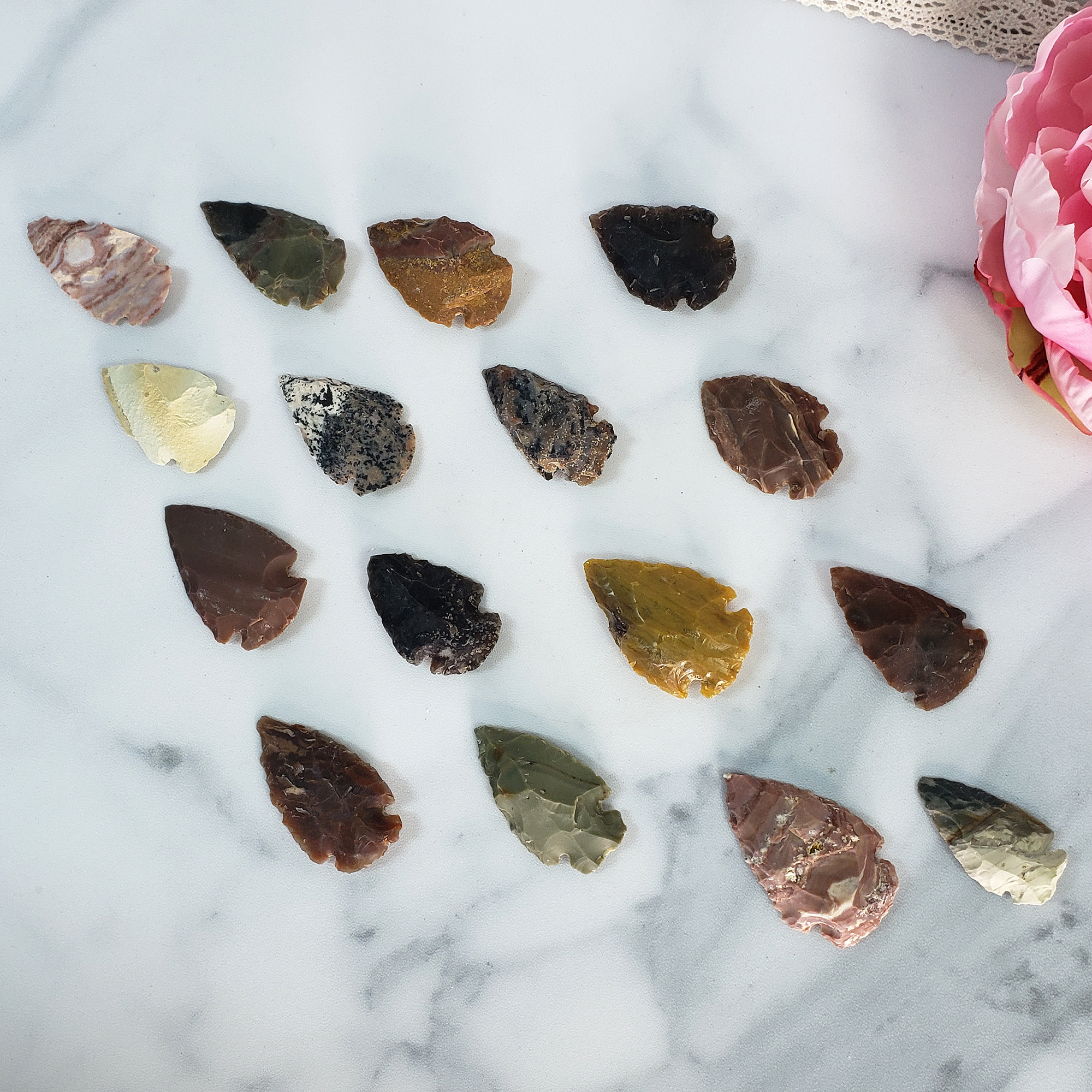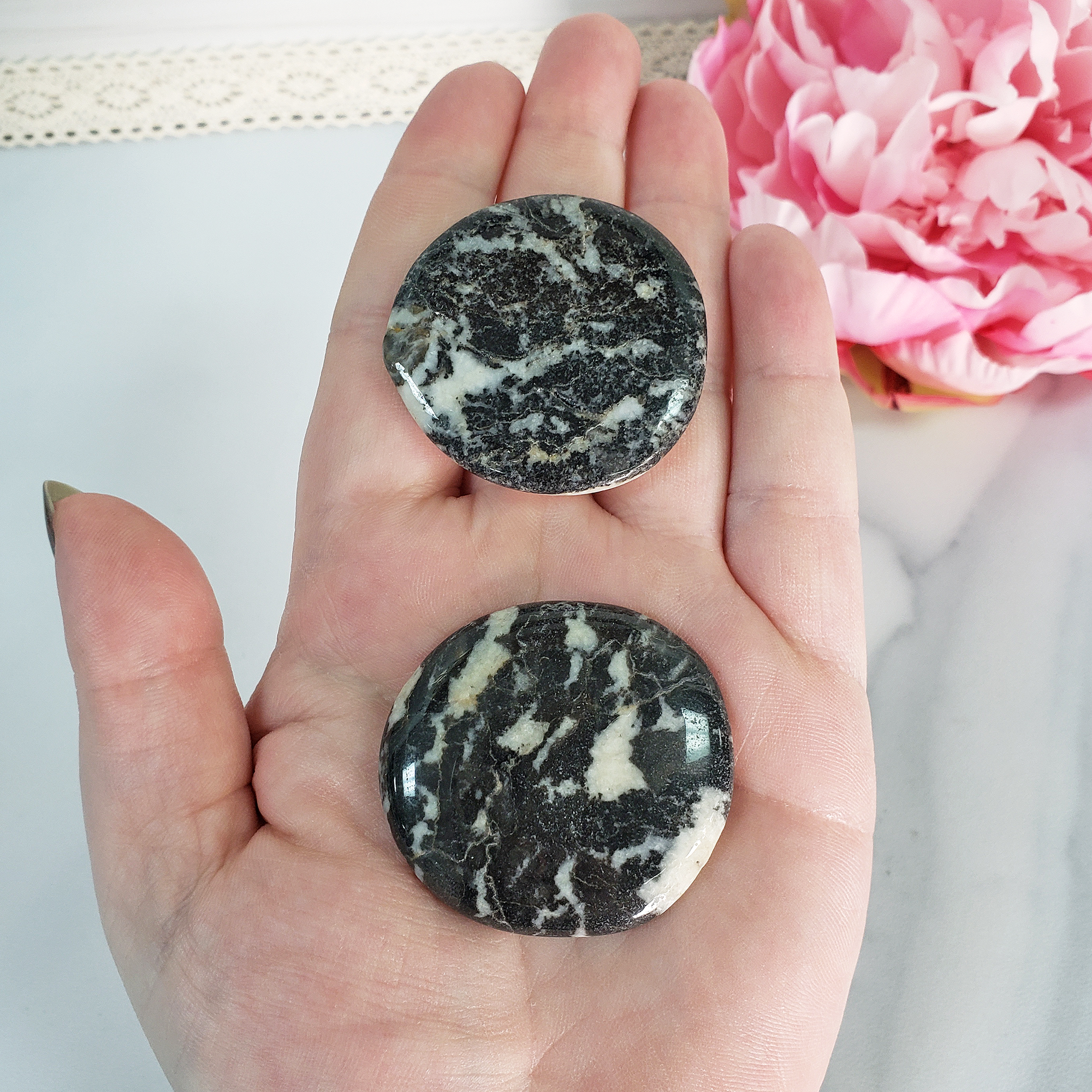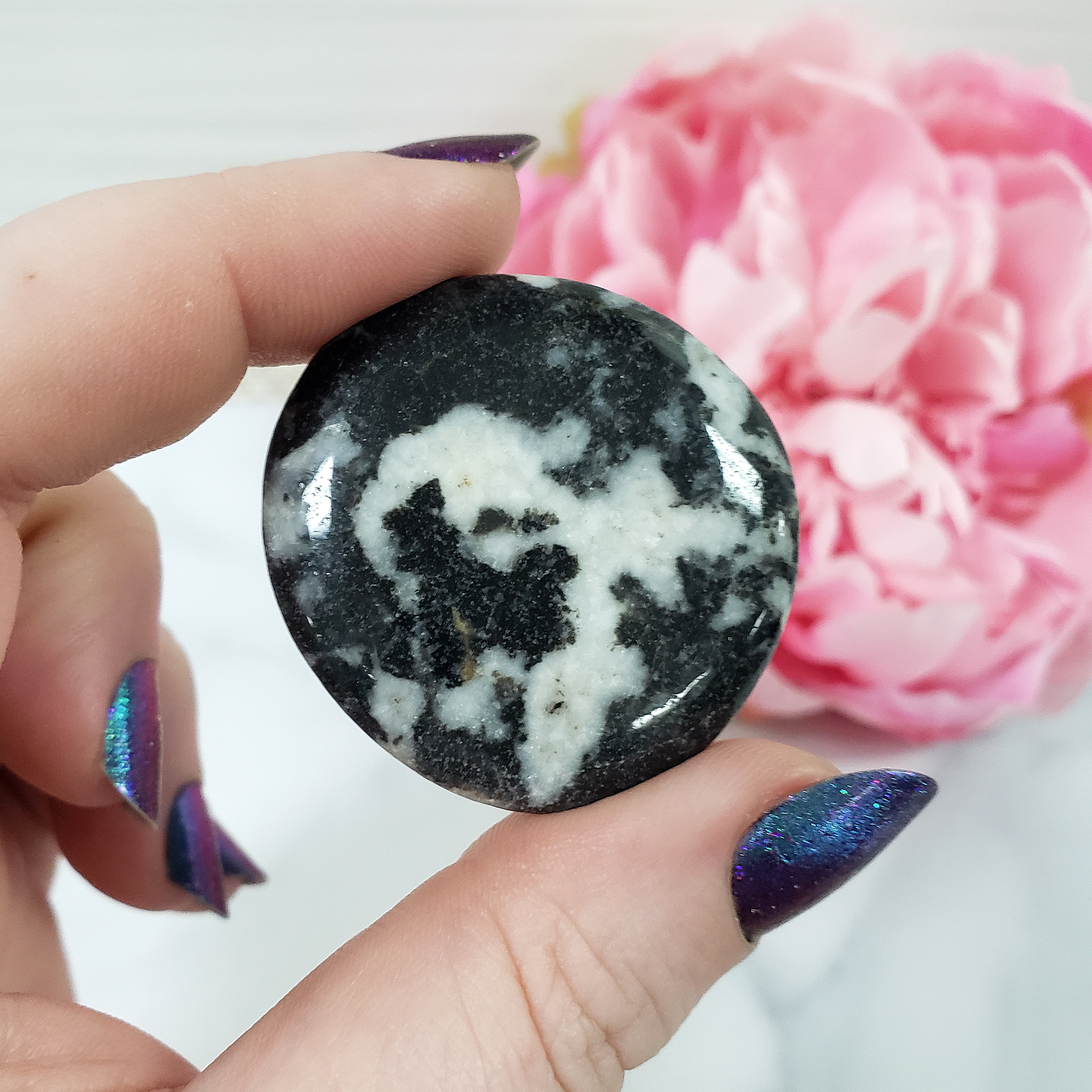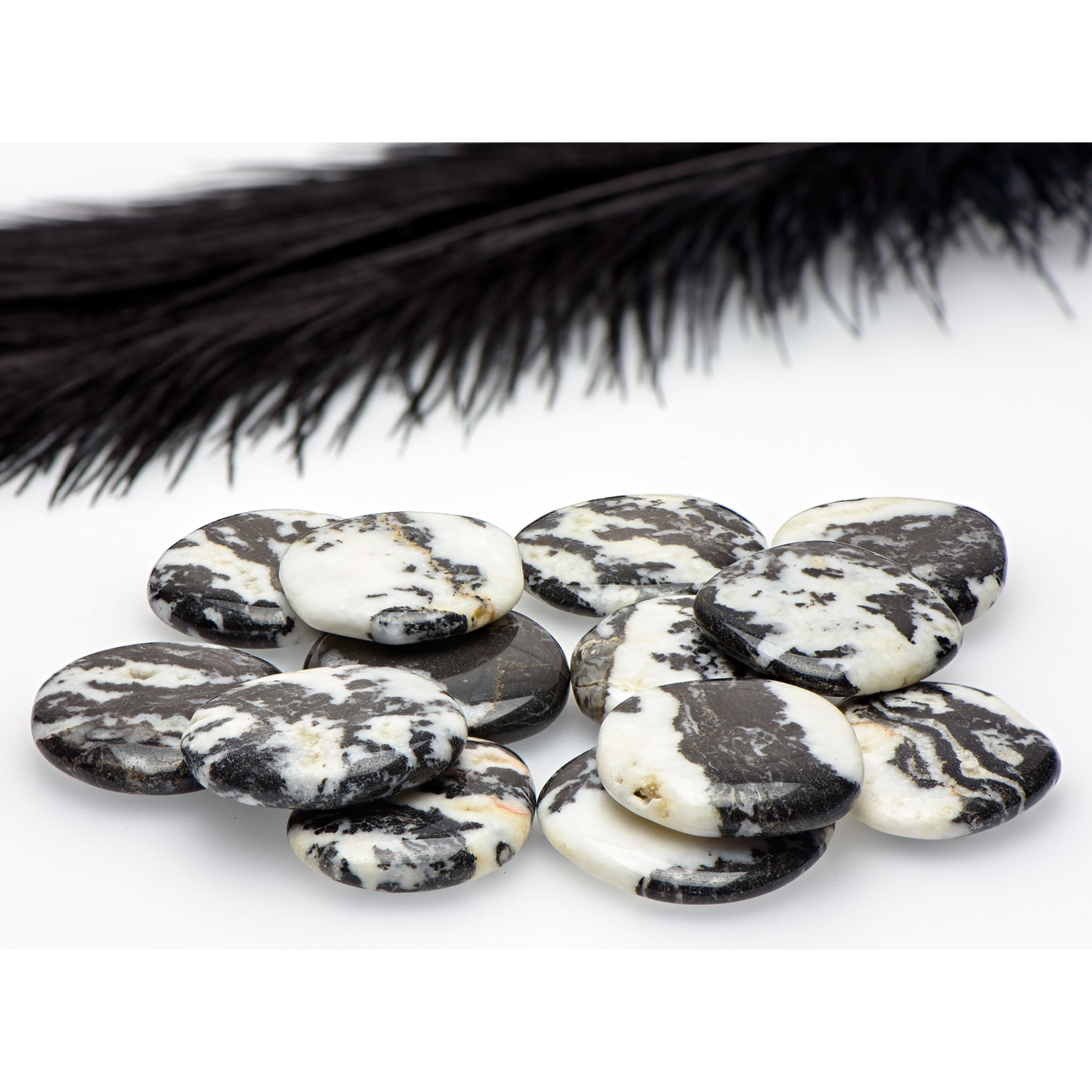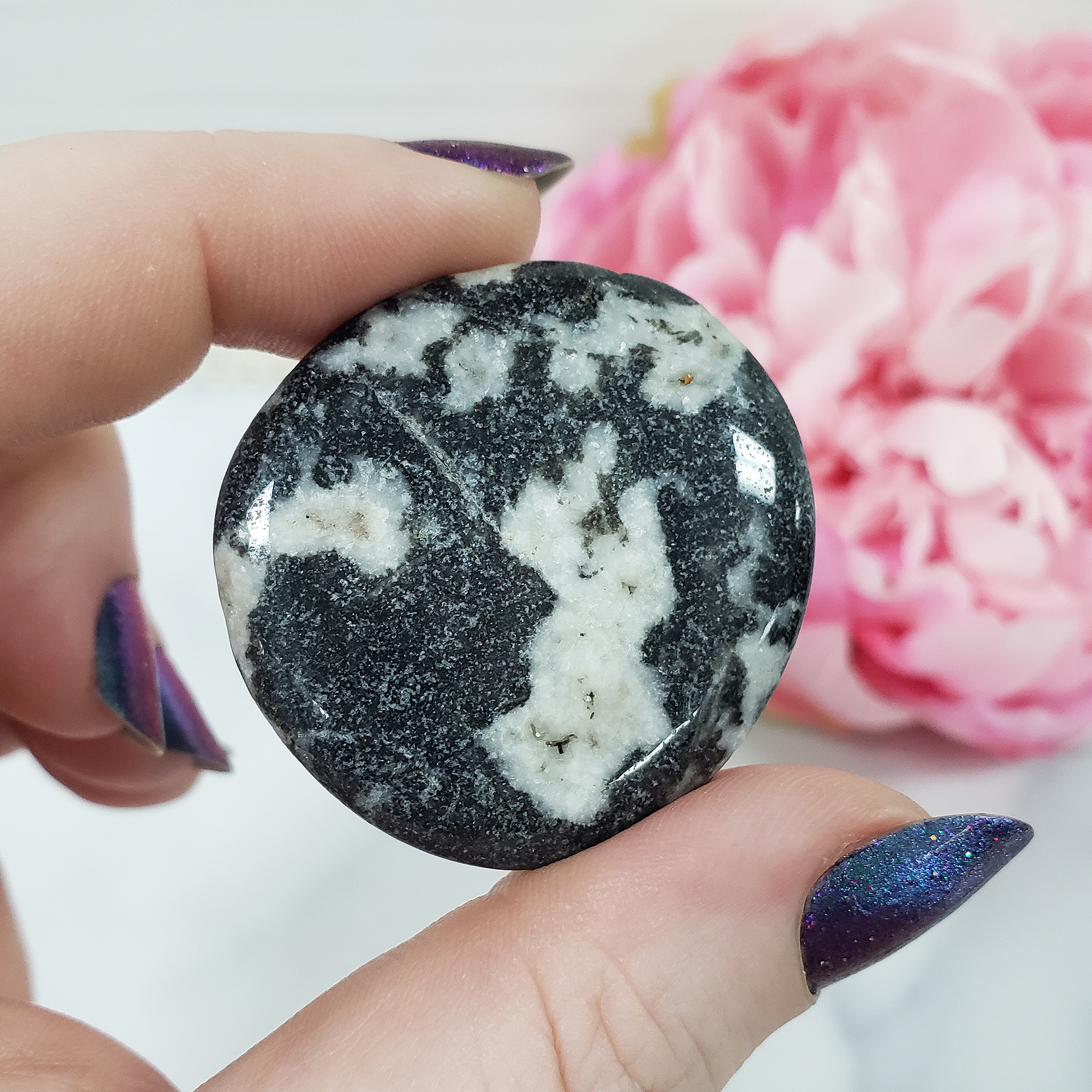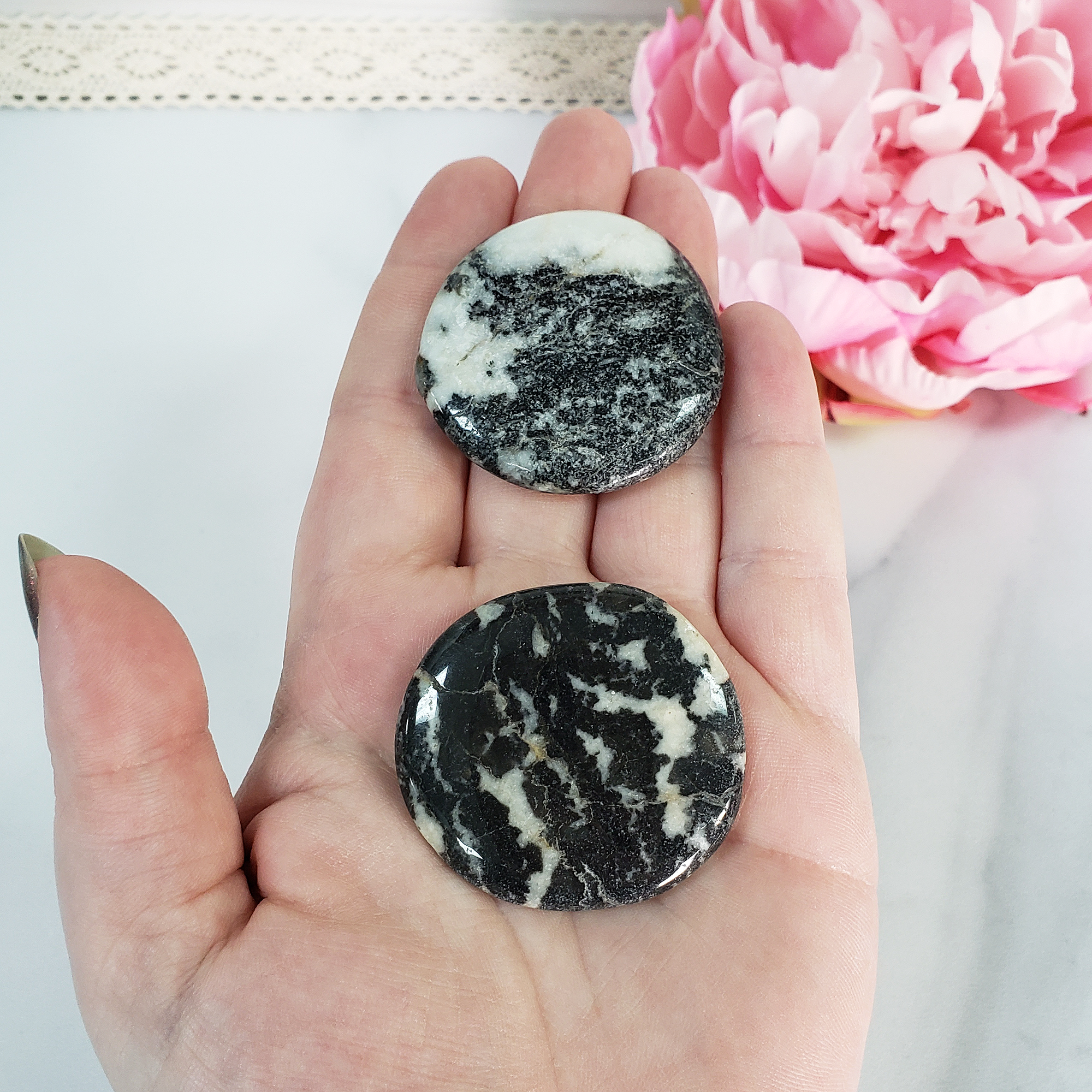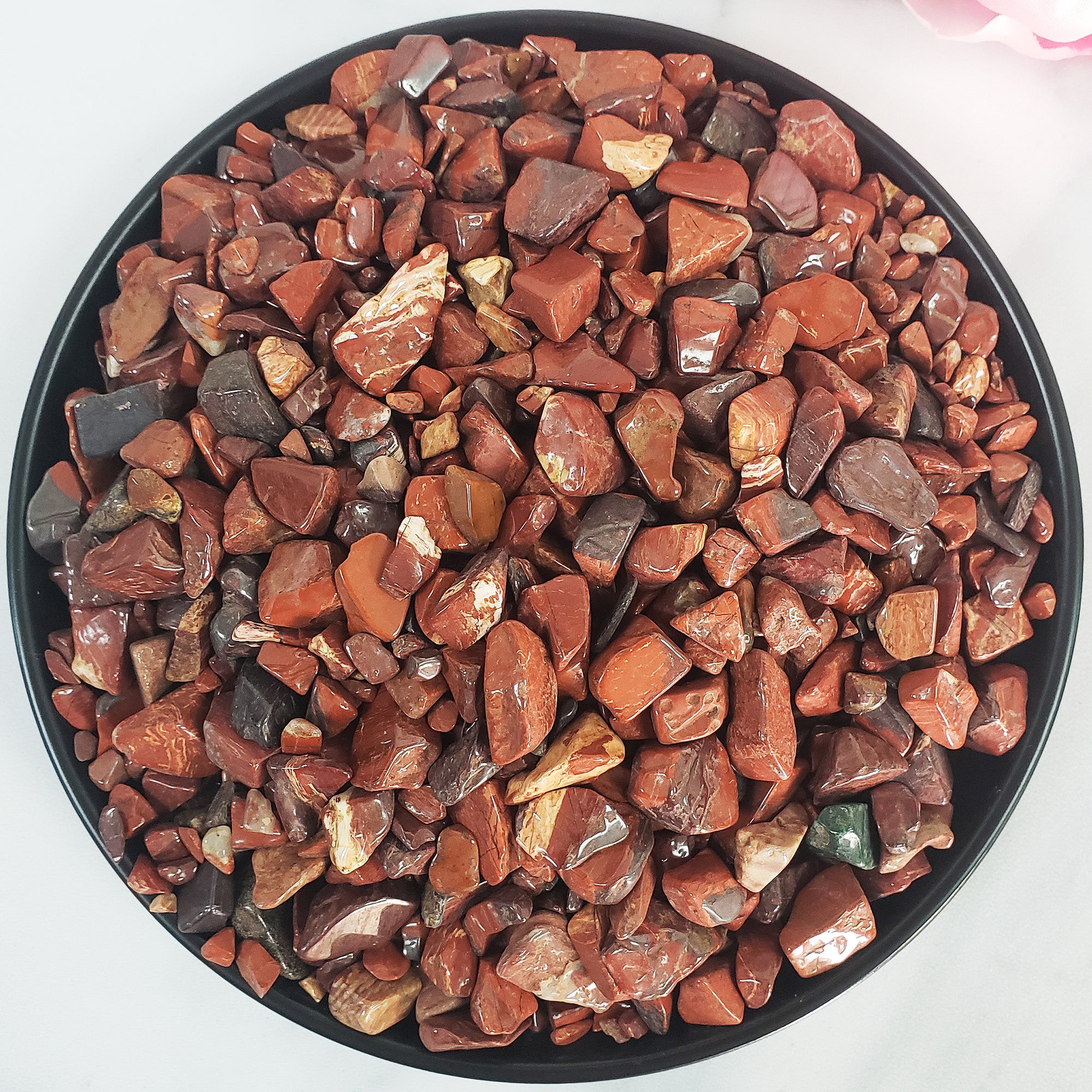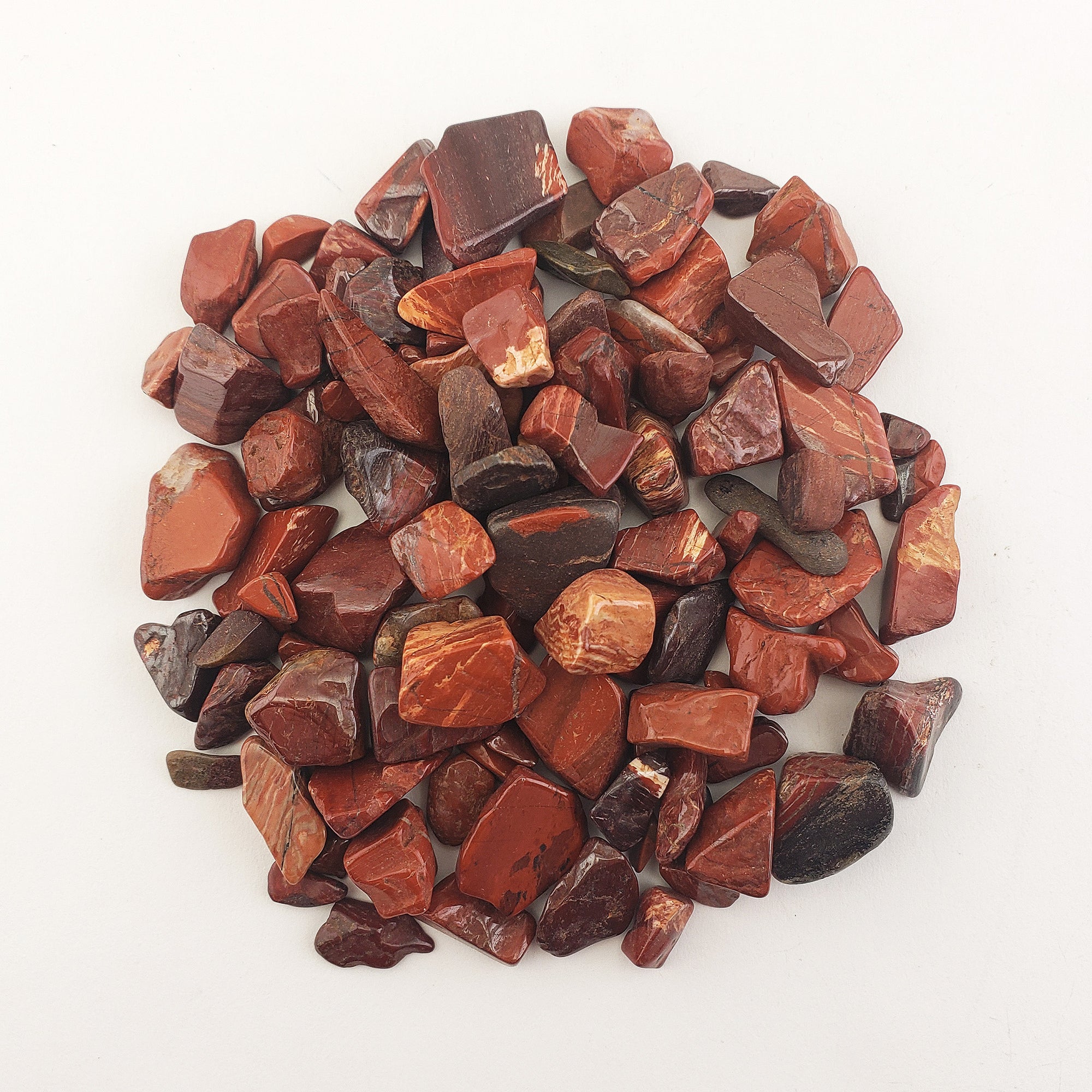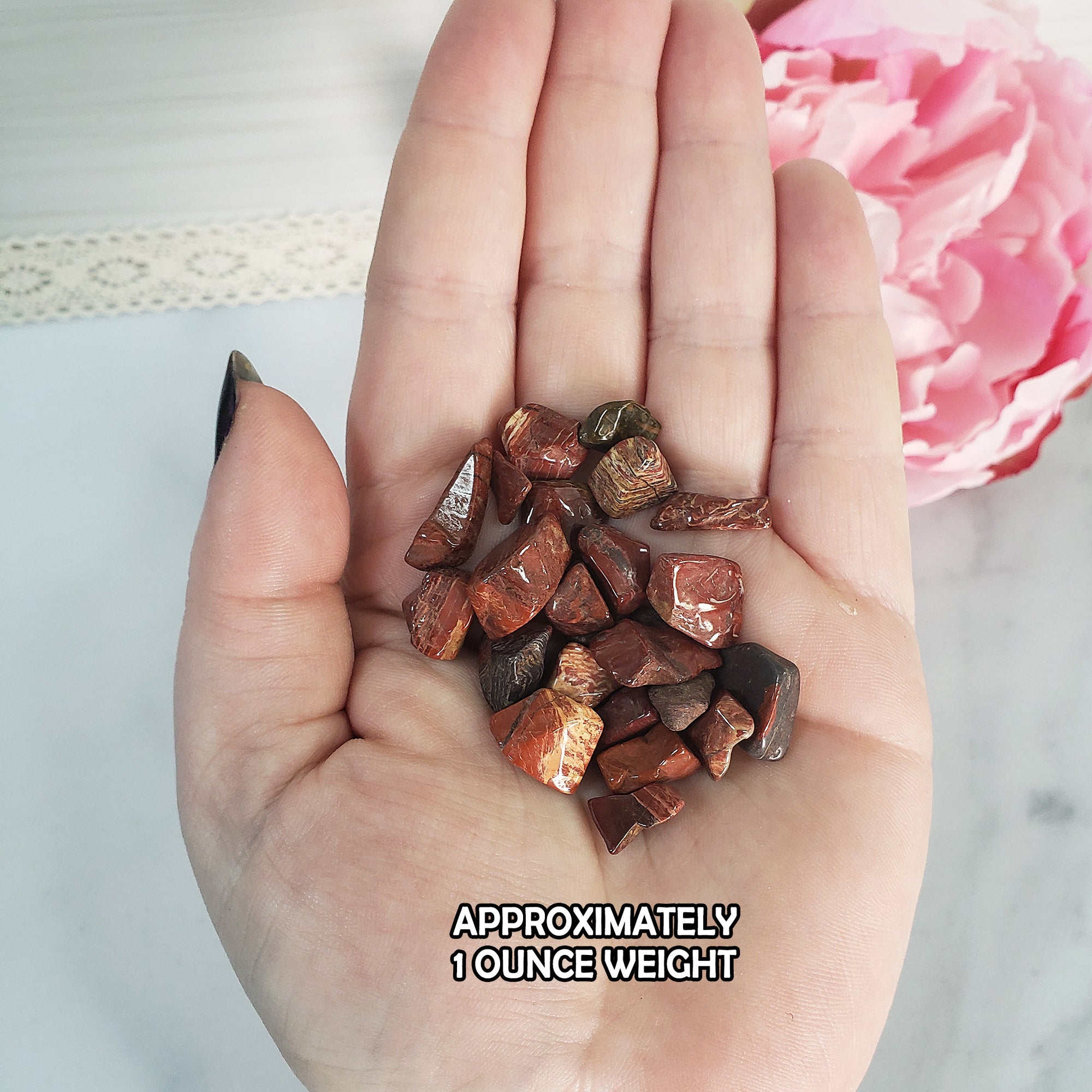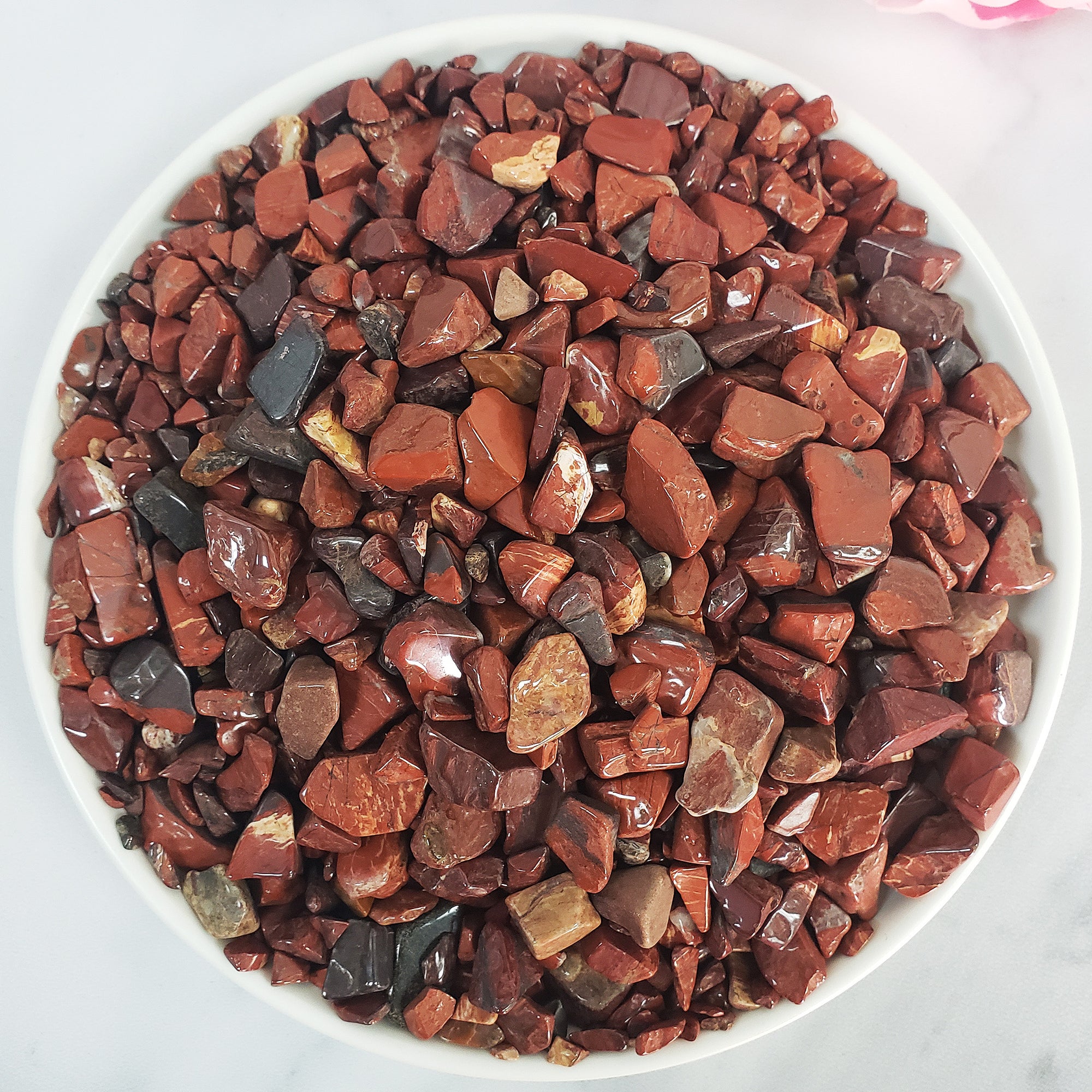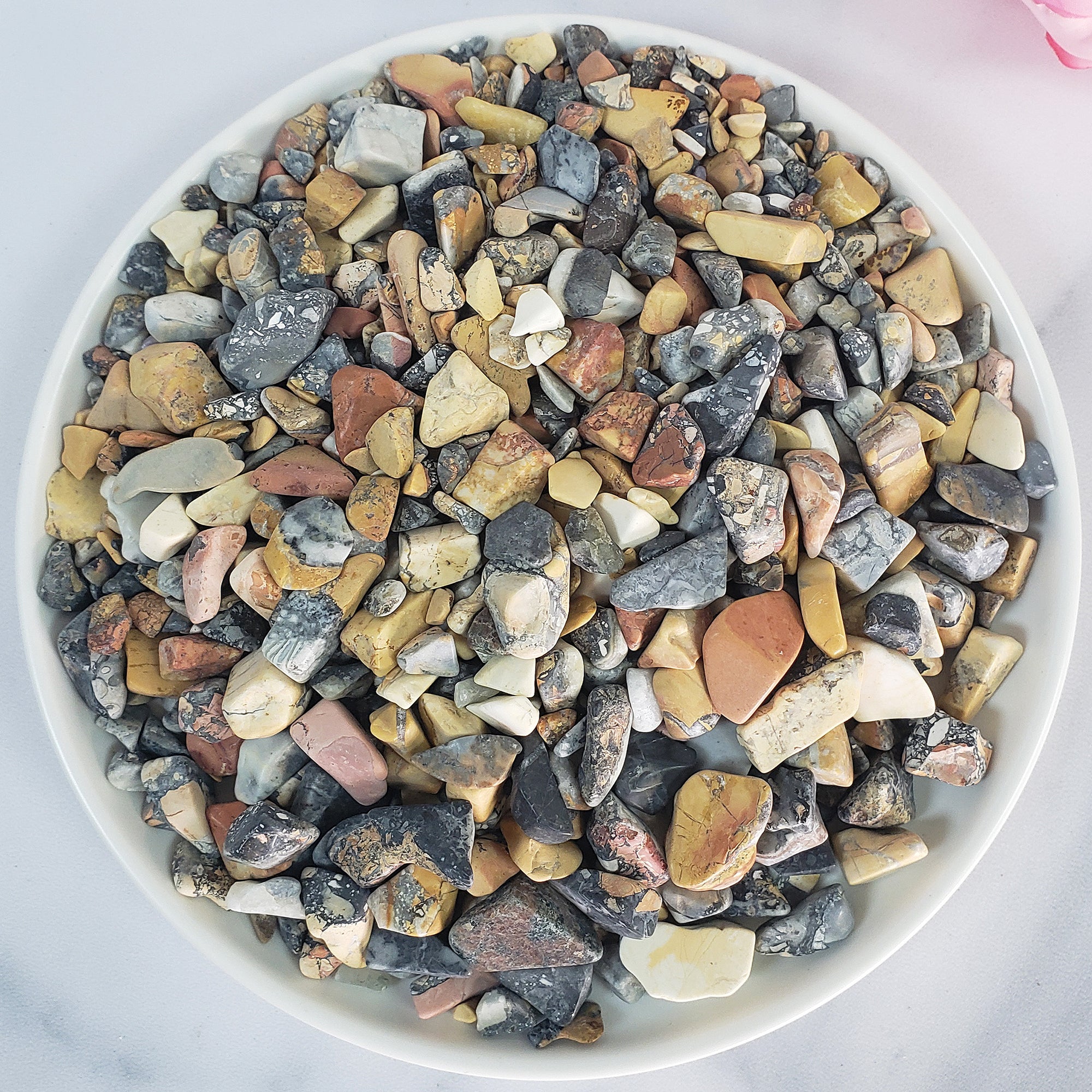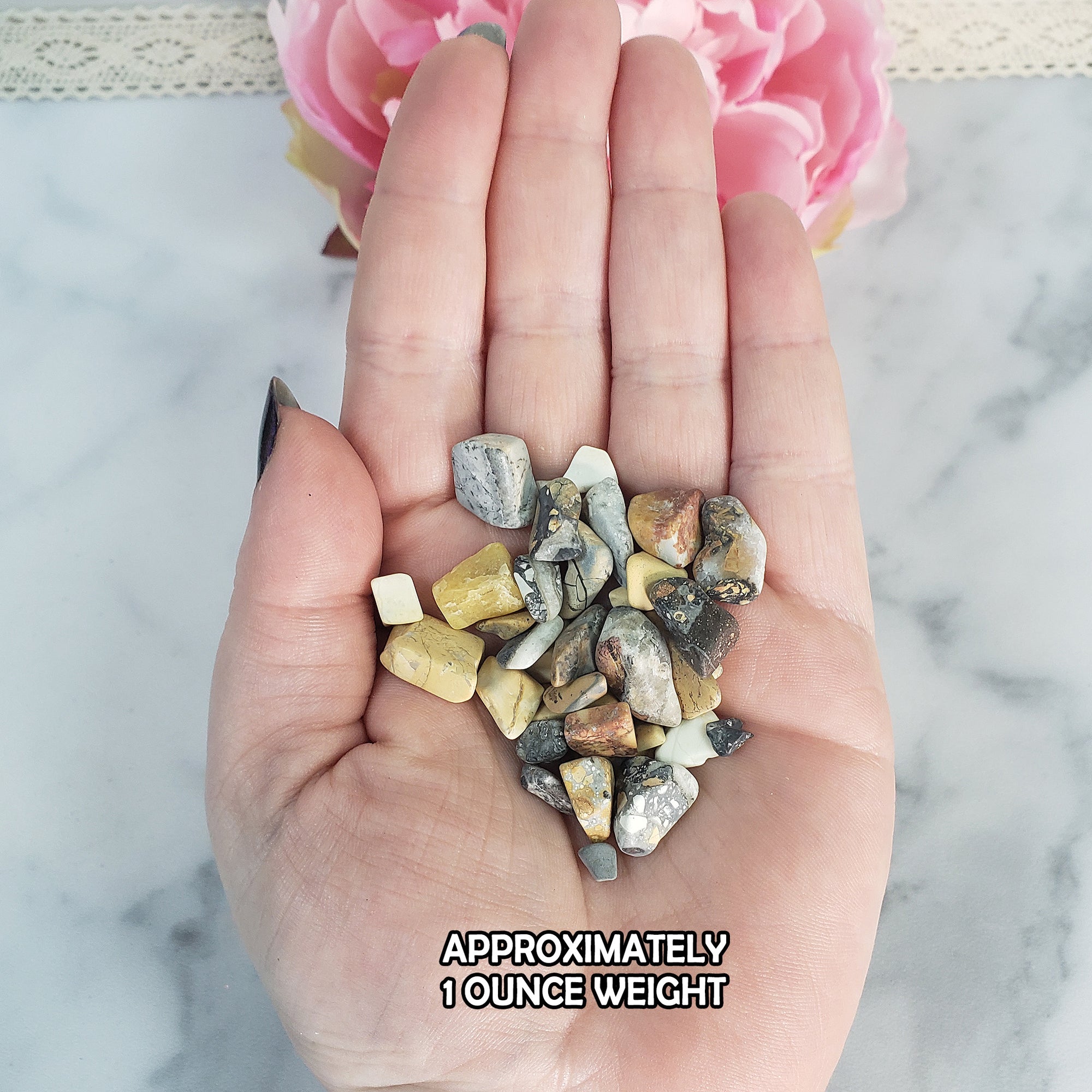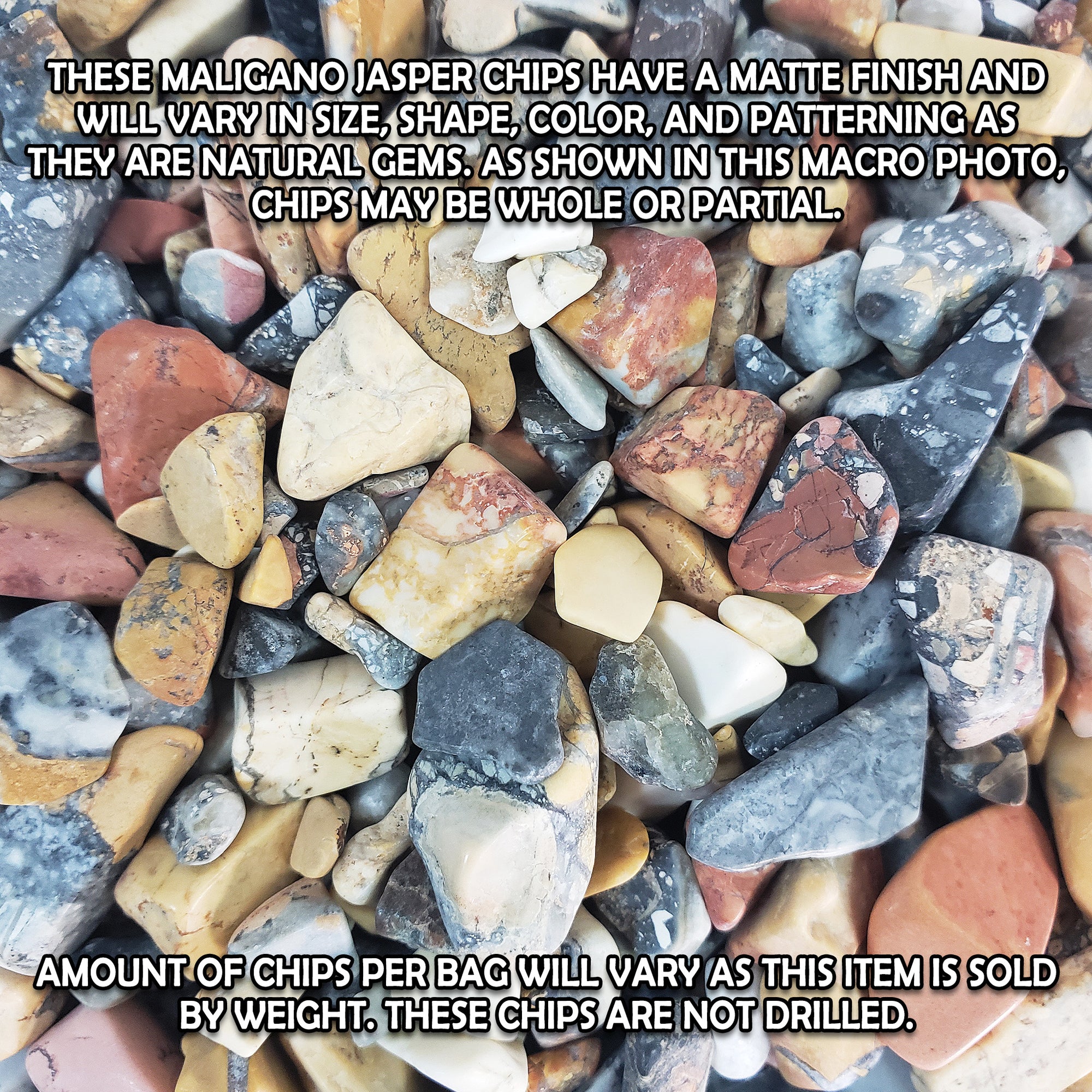What is Jasper?
This is a very important question, since many stones are referred to as Jasper while not technically fitting the physical requirements. These misnomered honorary Jaspers include gems like Kiwi Jasper, Dragons Blood Jasper, Lionskin Jasper, Unakite Jasper, or Mookaite Jasper, which are listed here for ease of access, since they are widely referred to under such names. Still, it's important to remember that this confusion arises largely because the term Jasper has historically been quite loosely applied anyway. Jasper usually refers to mostly opaque or impure Chalcedony or Chert, and it can occur as small veins, concretions, or replacements in sedimentary or metamorphic rock, but the term is also often applied to some types of igneous and sedimentary rocks on their own. The presence of Hematite, Goethite, and other materials within Jasper can strongly influence its color, and it has also been found in fossilized wood specimens that have been jasperized over time. When the growth of Jasper is interrupted or split due to shifts in the Earth, the gaps are sometimes filled by Quartz, Agate, Chalcedony, Hematite, Martite, or other colors of Jasper, resulting in striking crackled patterns called brecciation.
What Color is Jasper?
What color isn't Jasper? Some popular types of Jasper include: Red Jasper, Yellow Jasper, Green Jasper, Brown Jasper, Grey Jasper, and Black Jasper. However, there are also multicolored Jaspers featuring distinctive shades and patterns, making them highly sought after by collectors. Although some are only honorary Jaspers, they have found wide popularity among crystal lovers. Ocean Jasper, Orbicular Jasper, Picture Jasper, Dalmatian Jasper aka Dalmation Jasper, Kambaba Jasper, Zebra Jasper, Bumblebee Jasper, Picasso Jasper, Fancy Jasper, Poppy Jasper, Biggs Jasper, Owyhee Jasper, Polychrome Jasper, Leopard Skin Jasper, Silver Leaf Jasper, Sesame Seed Jasper, Red Creek Jasper, Wild Horse Jasper, Maligano Jasper-- the list is extensive, with vendors and collectors applying names to allow for quick and concise recognition of the many potential patterns.
Jasper Meaning and Metaphysical Properties
Each type of Jasper stone has its own specific set of spiritual properties and metaphysical uses, so each Jasper is associated with its own magical intentions. However, Jasper as a whole is known as a gemstone for drawing in positive energy and cycling negativity away. This has led to Jasper stone being known for facilitating positive changes, personal awareness, and blessings.
Ancient Beliefs & Benefits of Wearing Engraved Jasper
Ancient people heralded Jasper as an important gemstone. They believed Jasper engraved with specific images was believed to offer numerous mystical benefits, acting as both a protector and enhancer of personal power. Here's a look at the benefits correlated with various engravings on Jasper stones:
-
Huntsman, Dog, or Stag: Such engravings were thought to have the power to heal individuals believed to be possessed by evil spirits or insanity, and offer protection from malevolent forces.
-
Depictions of Mars: A Jasper featuring Mars, carrying a shield and weapon, was believed to facilitate victory over adversaries and provide defense against poison. When Mars was depicted fully armed, it was seen as a source of immense power, granting its wearer protection from violent death, drowning, and misfortune.
-
Kestrel or Kite Pouncing on a Snake: Wearing Jasper carved with this imagery was associated with alleviating stomach ailments, boosting appetite, and improving digestion.
-
Images of a Hare or Dog: These engravings were said to shield against attacks by demons and spirits, with the dog specifically offering protection against swellings, venomous encounters, and bites from canines.
-
Carved Wolf: This design was believed to safeguard against deceit and prevent reckless speech.
-
Emperor with Proud Stance: A Jasper with such an image was thought to win the affection of others for its wearer and help in achieving their desires.
-
Sacred Symbol of the Cross: Engravings of this symbol were reputed to protect the wearer from drowning.
Each of these carved symbols on Jasper stones was believed to bestow unique protections and enhancements, deeply grounded in historical lore and tradition.
Throughout history, Jasper has been renowned for its protective qualities, often crafted into amulets and talismans across various cultures.
Historical Uses of Jasper as an Amulet:
-
Protection Against Supernatural Threats: Many believed Jasper could guard against phantoms and witchcraft, making it a popular choice for those seeking mystical protection.
-
Health and Wellness: Traditionally, people wore Jasper over the chest to fend off ailments like epilepsy, stomach aches, and colic. It was also thought to curb nosebleeds and manage various bodily fluxes.
-
Prevention of Illness: Wearing Jasper was believed to reduce the risk of fevers and swelling.
-
Safety from Physical Dangers: An amulet made of Jasper was thought to protect individuals from drowning and repel potentially harmful creatures such as spiders and scorpions.
Cultural Associations:
- American Indian Beliefs: For many Native American tribes, Jasper held significant value in shamanic rituals, acting as a powerful amulet to safeguard against the unseen perils of the night.
In essence, Jasper has a rich heritage as a stone of defense, encompassing both physical and spiritual realms.
